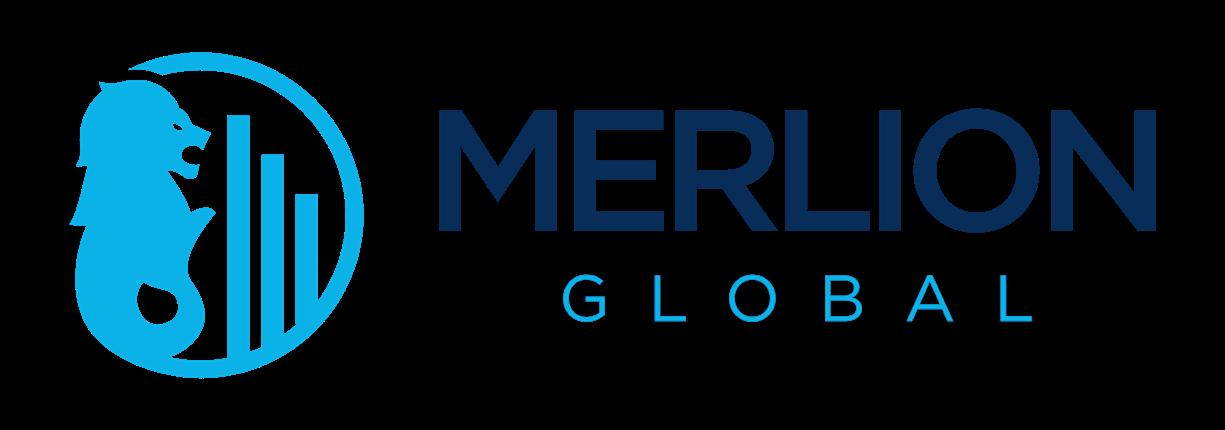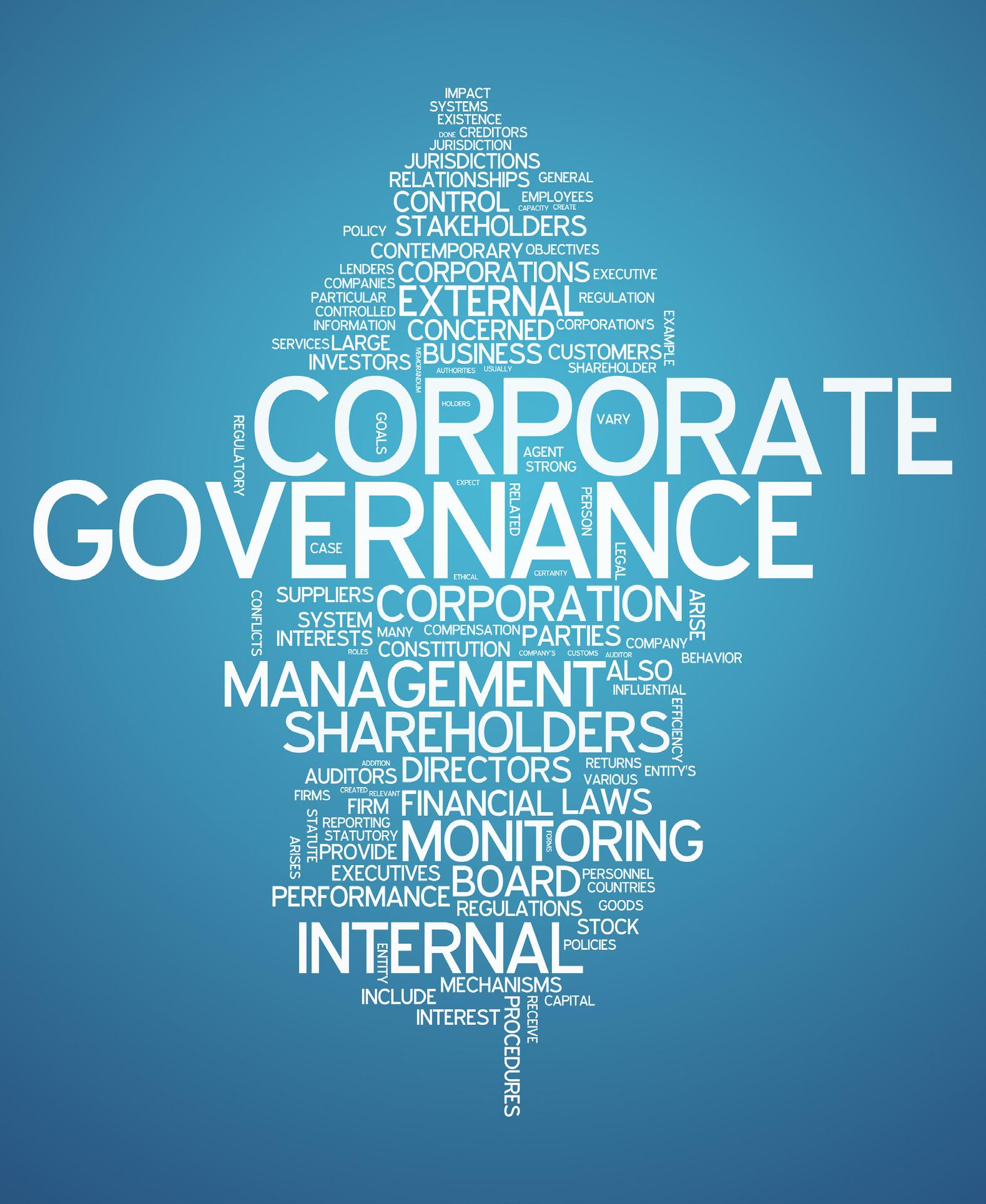





Let’s elevate your great with Absa Business Banking solutions.
Whatever inspired you to start your business, we offer a variety of business banking solutions to help you take it to the next level.
We see your great. Now let’s elevate it. Speak to an Absa Relationship Manager today.
That’s Africanacity. That’s Absa.




Chairman and CEO
Varun Sash
Editor Wanda Rich email: wrich@gbafmag.com
Head of Distribution & Production
Robert Mathew
Project Managers
Megan Sash, Amanda Walker
Video Production and Journalist
Phil Fothergill
Graphic Designer
Jessica Weisman-Pitts
Client & Accounts Manager
Chanel Roberts
Business Consultants
Rick Saikia, Monika Umakanth, Stefy Abraham,
Business Analysts
Samuel Joseph, Dave D’Costa
Advertising Phone: +44 (0) 208 144 3511 marketing@gbafmag.com
GBAF Publications, LTD Alpha House 100 Borough High Street London, SE1 1LB United Kingdom
Global Banking & Finance Review is the trading name of GBAF Publications LTD Company Registration Number: 7403411 VAT Number: GB 112 5966 21 ISSN 2396-717X.
The information contained in this publication has been obtained from sources the publishers believe to be correct. The publisher wishes to stress that the information contained herein may be subject to varying international, federal, state and/or local laws or regulations.
The purchaser or reader of this publication assumes all responsibility for the use of these materials and information. However, the publisher assumes no responsibility for errors, omissions, or contrary interpretations of the subject matter contained herein no legal liability can be accepted for any errors. No part of this publication may be reproduced without the prior consent of the publisher

In this edition, we are pleased to present the Global Banking & Finance Award® 2022 Award Winners. The awards were created to recognize companies of all sizes that are prominent in particular areas of expertise and excellence within the financial community. This year’s winners have had to adapt and innovate to the current environment. Global Banking & Finance Review would like to congratulate the award winners and look forward to their continued success.
Featured on the front cover is Chad Hetherington, Vice President Global Head of NICE Actimize. As global financial institutions face challenges presented by an unpredictable economy, increased sanctions, as well as growing fraud and market abuse, NICE Actimize's Chad Hetherington, Vice President Global Head of Product, is laser-focused on how the impact of digital transformation will shape the year ahead. Turn to page 72 to read A “Customer First” Approach Leads NICE Actimize’s Digital Transformation Initiatives for 2023.
You requested more of the exclusive, in-depth interviews we are known for and in this edition we deliver. Inside you will also find insightful commentary from industry experts.
We strive to capture the breaking news about the world's economy, financial events, and banking game changers from prominent leaders in the industry and public viewpoints with an intention to serve a holistic outlook. We have gone that extra mile to ensure we give you the best from the world of finance.
Send me your thoughts on how I can continue to improve and what you’d like to see in the future. Enjoy!
Wanda Rich Editor
®
Stay caught up on the latest news and trends taking place by signing up for our free email newsletter, reading us online at http://www.globalbankingandfinance.com/ and download our App for the latest digital magazine for free on Google Play and the Apple App Store
Dear Readers’
I am pleased to present Issue 45 of Global Banking & Finance Review. For those of you that are reading us for the first time, welcome.
Peter-Jan Van De Venn
Mobiquity

Ruby
Juan
Rochelle
Chat-First Banking: Pandemic Trend or Long-Term Change?
Bill Schwaab
VP of North America boost.ai
The Competitive Advantages of Offering Business Banking Solutions
Chris Doner Founder and CEO Access Softek
Why banks must keep innovating through a recession

Simon Hill CEO and Founder Wazoku
Three ways banks can adapt for success in 2023
Andrew Stevens Principal of Banking and Financial Services Quadient
The
Ian Spaulding
Chief Growth Officer

LRQA
Make
Jonathan Power RVP Northern Europe Backbase
What
Hans Tesselaar
Executive Director, BIAN
Charles Southwood, Regional Vice President N.Europe & EMEA Denodo Monica Hovsepian
Global Financial Services Lead OpenText
Petru Metzger Head of Payments Endava
Brett Beranek General Manager Security & Biometrics Nuance Okan Ozaltin General Manager, Payment Solutions, Signifyd The
Stuart Templeton Head of UK Slack
Michael Brown Field CISO for financial services
Fortinet
The
Nigel Verdon CEO and Co-Founder Railsr
Monolithic technology –a monumental problem for financial services
Tim Hood Vice President – EMEA and APAC Hyland
Cross-Border Payments Trends in 2023
David Messenger Executive Chairman LianLian Global
Alexandre Dussurgey
Head of Procurement Sastrify

Jennifer Valdez
President of Americas Intelliflo






The resilience of the financial markets was truly put to the test in 2022 as many of the risks outlined at the outset of the year were realised. Inflation fears were validated –expected to reach 8.8% by the end of 2022. The crypto market sustained huge blows after the collapse of one of its leading players. The UK Government saw three different prime ministers. The devastation of the Russia-Ukraine war rippled through Europe, triggering widespread supply chain issues, and driving up energy prices.

In the finance industry, Wall Street was hit with fines amounting to $2 billion for use of off-channel communications channels, in a regulatory clampdown by the SEC that is set to continue. The industry faces mounting market and commercial pressure – which can in turn put undue pressure on the compliance function, so here, CEO and Co-Founder of compliance technology and data analytics firm SteelEye, Matt Smith, sets out his predictions for the year ahead, and offers advice to firms on how to handle these impending challenges.

Regulators worldwide were notably more assertive in 2022. FCA fines for the year so far have reached £59,574,925 and, in the United States, the SEC filed 760 enforcement actions, up 9% from 2021. This amounts to an eye-watering $6.4 billion – an all-time record – far surpassing 2021’s $3.9 billion in fines.
While Gurbir S. Grewal, Director of the Division of Enforcement at the SEC, said that they “don’t expect to break these records and set new ones each year because we expect behaviours to change,” we anticipate that 2023 will be another enforcement-focused year both in the UK and the US.
At a recent conference, a senior rules maker from the FCA said, “fines are very powerful agents of change and a key focus” and “no stone will be left unturned.” This combined with the SEC’s powerful stance on enforcement action, signals a clear drive on both sides of the pond to crack down on financial misconduct and market manipulation.
With regulators using powerful data analytics tools to identify malpractice more accurately among the companies they regulate, more firms are at risk of scrutiny. Investing in technology is key for firms to ensure they can identify risks before the regulator comes knocking. As such, we expect many players will up-skill and up-tool in 2023.


Those that think that this is a concern for the future must remember that regulators have the power to act on historic breaches. Just this year, Citi was fined £12.5 million for failures that took place between 2016 and 2018. Not moving now could lead to fines in years to come.
Another area we expect more regulatory action around is market manipulation on social media. With numerous examples of what we call ‘modern’ market manipulation using digital platforms, such as Elon Musk’s numerous share price influencing Twitter updates, we expect stricter regulatory attention around social media in 2023.


In 2022, Wall Street giants were fined billions of dollars for failures to control and monitor communications taking place on unauthorised communications channels. WhatsApp and other digital platforms have dominated headlines over the last 12 months as regulators have cracked down on communications compliance.
We expect this reckoning will continue into 2023, as data from earlier in the year indicates that just 15% of firms are currently monitoring WhatsApp. In fact, it is likely that the attention will trickle down and that smaller firms will come into the spotlight, as evidenced by SEC’s warning to brokerdealers and asset managers that they would be “well-served to self-report and self-remediate any deficiencies.”
Banning platforms like WhatsApp is clearly not the solution. We need industry-wide change whereby financial services firms of all sizes understand the severe risk of leaving communications unmonitored. It is reassuring that many firms are already investing in or starting projects to capture more eComms channels. In fact, in the last 6 months, inquiries have skyrocketed among communications capture and archiving providers for WhatsApp and iMessage compliance solutions.
Regulators are making it clear that firms can no longer put their heads in the sand. So, in 2023, it is highly likely we will see the proportion of firms monitoring channels like WhatsApp grow and that adoption of eComms monitoring technology will increase across the board. At the same time, some argue that challenges in balancing data capture and privacy will prompt the death of “Bring Your Own Device” (BYOD) policies, and that carrying two devices, a personal and a business phone, will become the norm again.
Voice capture is not a regulatory requirement in the United States today as it is in Europe, but it is clear it will play an increasingly important part in communications surveillance, with so many virtual meetings happening in place of in-person interactions and the rise of sharing voice notes at work. Analysing voice data is fundamental to detecting conduct risk and market manipulation like insider trading.
Regulators will eventually embed voice in surveillance and archiving requirements. To get ahead, many US firms are proactively self-regulating and investing in voice supervision and transcription to improve their surveillance. In 2023, we expect this to continue, and for voice monitoring to accelerate.
While there has been rapidly increasing acceptance of cryptocurrency in recent years, the industry has been shaken up by the recent FTX collapse, highlighting once again how volatile the space is. It is a fragile market and represents a considerable systemic risk, particularly as the fall of one token significantly impacts the whole market.
Crypto regulation is a responsibility that needs to be taken seriously by regulators worldwide and we welcome debate around the future of the market. However, leaving crypto unregulated would be a grave mistake. With the uptake of crypto among retail investors and financial institutions (particularly in asset management), the ripple effects of simply letting “crypto burn” as some have argued, would have farreaching consequences.
We believe we will see a regulatory reckoning in the next 12 months. We envisage a world where regulation is sufficiently sophisticated to protect retail investors and make crypto a more stable investment for financial institutions.

As the regulatory landscape becomes increasingly complex, the market is gradually shifting towards holistic compliance practices. The benefits of covering more areas of risk and overlaying multidimensional data to increase intelligence, speed up processes, and reduce false positives are simply undeniable.
The move towards a holistic approach is evident in the industry partnerships that have emerged over the last few years, where two vendors offering complementary solutions have come together – as we have seen with many communications and trade surveillance providers.
We expect this kind of market consolidation to continue in 2023 as financial firms themselves start to demand holistic data management. However, it is important to remember that a commercial partnership does not necessarily mean that processes are holistic. The key is to look for compliance solutions that natively bring together trading activity, communications, market data, and other important data sources.
After a decade of growth and record fundraising in fintech, with fintech companies accounting for 21 of the UK’s 44 unicorns today, we predict that in 2023 we will see this slow down to a much more modest pace. Data from investment manager Finch Capital shows funding reached $6 billion in 2020 and $19 billion in 2021,
but we have witnessed a 25% drop in 2022 so far. The number of new fintech firms founded is down 85% since 2020. Market consolidation continues, and fintech M&A spiked in the first half of 2022, with 591 recorded deals. So, it is possible that we are now on the other side of the fintech sector ‘boom.’
Of course, the UK’s rich fintech ecosystem still presents exciting investment opportunities, and there is no shortage of available capital. But in the current economic environment, investors will be much more cautious about where, when, and how much they invest. The higher cost of capital coupled with a tougher business environment in general will force some fintech firms out of the market, as we have already seen, and create a smaller sector. Those who do make it through will emerge stronger and more resilient.


Before the pandemic, neo-banks and consumer-centric fintech businesses dominated the conversation. Now, amid recession fears and following a period in which fintech valuations fell faster than any other tech vertical, technology that powers back office and control functions is coming into focus. Tightening budgets and scrutiny of performance are driving this trend, and the financial services industry is under pressure to improve operational efficiencies while proving it has learned from past mistakes.
However, as the financial landscape becomes increasingly digital, so too does the risk of fraud, cybercrime, money laundering, data breaches, and market manipulation. In response, the RegTech market will continue to grow and evolve to meet the challenges of an ever-more tech-driven economy. SteelEye’s 2022 State of Financial Services Compliance report showed that almost half of firms (44%) are planning to invest more in RegTech solutions in the next year.
Headquartered in Port Louis, Mauritius, Merlion Global Limited assists its clients, both retail and institutional, by offering the foremost foreign exchange and analytical technologies, striving to provide the best trading platforms and infrastructure at competitive prices.
Wanda Rich, editor of Global Banking & Finance Review, spoke to Rieve Ko, Global Sales Director at Merlion Global Limited to learn more about what has contributed to their award-winning success, which includes being named Fastest Growing Forex Broker - Asia Pacific in the 2022 Global Banking & Finance Awards.
“It’s really an honour for Merlion Global to win this award,” Rieve Ko began. “We would like to express our gratitude and appreciation to our clients who nominated us, and to GBAF for recognising our effort in the Forex industry.
“Since Merlion Global’s inception in 2017, we’ve envisioned ourselves as the prominent technology provider in the trading industry for all traders. We aim to build a company that prides itself on fund safety, advocating wealth creation and speedy execution. It is our mission to give traders and partners the edge they need to succeed.”
Understanding of the market lies at the heart of its investment strategy. “For clients who have traded with us, one will know that we invest heavily, from customer service to new technology. We listen and take time to understand clients’ specific needs. We are here to provide them with tools and support so any client can seize every winning opportunity.”
Rieve Ko attributes Merlion’s solid growth of the last few years to its core belief that technology needs to work for people, enforced by its investment
into a platform that makes trading more intuitive. “It’s designed to keep trading simple, so clients can be free to focus on what matters most,” he explained. “Merlion Global believes that speed and time are everything in the market. We invest heavily into building a powerful and acrobatic trading platform that creates highly efficient execution, so clients will be able to enjoy a smooth and exciting trading experience.”
Transparency is another key attribute upon which the company places significance, having looked at the trading experience from the traders’ point of view and developed it with their success in mind. “Since our inception, Merlion Global has offered retail Forex trading clients an unparalleled Forex trading experience. We pride ourselves on our ability to provide absolutely the most transparent Forex trading environment, allowing clients to exploit their Forex trading edge,” he continued. “With Merlion Global’s latest Advance Copy trading network, clients can copy any trades from any professional traders with ease. They can set individual risk perimeters and different types of copy methods, and even copy multiple traders with just one account.
“We have built Merlion Global from elements which clearly define the ideal Forex broker for smooth and profitable Forex trading. We work from the client’s perspective before making any decisions. We strive to make our clients succeed.”
In addition to making support available 24/5 to accommodate all needs and requests of its clients, Merlion Global offers a range of educational tools and classes to give traders an in-depth understanding of the Forex market and enable them to execute trades with confidence. “We provide clients with the
opportunities to learn and thrive in their financial journey,” Rieve Ko said. “While it is important to make money in the markets, it is also vitally important that clients learn to protect their capital too. Proper education will enable our clients to understand the risks of the market and how to stay protected.”
For traders looking into where the industry is currently headed, Rieve Ko listed three major trends to take note of, the first being crypto space. “Even though cryptos have fared badly this year, with most coins dropping more than 50%, many traders are still flocking into this area,” he reported. “As digital currencies are what most governments in the world are pivoting to, it appears that blue chip cryptos such as bitcoin and Ethereum are here to stay.”
The second is algorithm trading, with many fund managers and traders, even retail traders, becoming increasingly aware of algo technology. “Many are learning and adopting the use of AI to help them in their own trading operations. We have also seen, based on past performance analytics, our own traders employing algorithm trading in the social trading ecosystem of Merlion Global and vastly outperforming those who do manual trading.”
Thirdly, he raised the issue of the upcoming recessionary environment as an effect of the pandemic. “Economies around the world are going into a recession due to global central banks raising rates on an unprecedented scale. Thus, more traders have decided to be self-sufficient and to take up trading in their own free time to earn passive income. We at Merlion Global have set up an academy called the Merlion Academy to cater to these retail traders. Teaching them how to trade and invest professionally will be our foremost mission.”

He went on to discuss some of the risky areas in which traders are advised to remain alert, highlighting the most common pitfalls that they tend to fall into. “The first is over-leveraging, one of the common reasons that traders fail,” Rieve Ko said. “Over-leveraging is the consequence of a trader’s overconfidence in the outcome of a trade. It’s akin to aiming for a home run on every swing. The problem with this approach is that it is incredibly unsustainable.


“Another cause of traders failing is poor risk management. Risk management strategies should be incredibly averse to any amount of loss. At Merlion Global, we offer trading tools like stoploss orders that minimise losses on a trade. Stop-loss orders allow traders to exit their position if they don’t perform as expected.”
He also warned of the danger in taking large and risky positions, given the tendency of novice traders to fall prey to the idea of ‘go big or go home’ and plunge much of their finances into a single trade. “Not only is this reckless and dangerous, but also the logic is entirely flawed. When starting out, every single unit of funding is vital. As such, you should adhere to strict money management rules to protect your capital. In fact, the most successful traders follow similar rules and restrictions on each trade.”

Modern banking is digital through and through. But how did we get here, and what does the future have in store? By looking at past waves of transformation, we can discern lessons about what may come next. Let’s start with banking channels.
Digital banking starts with the emergence of webbased services in the 1990s. The 90s also saw the emergence of the first mobile banking services, using SMS and WAP for basic account services. But it was not until the emergence of smartphone and app-enabled banking in the 2010s that things really took off. For most of that decade, people used a combination of web and mobile channels, with no one channel preferred over the other. Conversely today, 80% of bank customers report that mobile is the main channel though which they access their bank account. Banking channels will continue to evolve in the future. For example, banks are already experimenting with innovations including wearable devices for payments, notifications, alerts, and transfers.
Business line transformation started with retail banking. This was largely driven by the explosion in challenger banks and fintech innovators offering compelling financial services, but it was given a significant spur by the advent of open banking from 2016.
The second banking line to transform was SME banking, fuelled by the surge in gig-economy jobs and early-stage start-ups in the 2010s. Largely underserved by traditional banks, fintechs and challengers banks have led the charge into SME banking.

Behind SME banking is wealth management, an area of banking that has maintained manual processes right into the current decade. However, covid-19 inspired lockdowns drove the virtualisation of the business line. Compared to before the pandemic, over half of wealth managers in the US and UK have increased their use of digital technologies.
Finally, there’s corporate banking – another digital laggard. Change is now getting underway as enterprises demand digital experiences from their banks to match the data- and AI-enabled applications they are used to in other areas of the business. In the future the success with which banks modernize corporate banking will tie directly to their innovation capability, customer experience, and ultimately market share.
The transformation of banking architecture started with the transformation of front-end, customer facing use cases such as banking portals and apps. From there it moved to APIs, with the aim of delivering the right data to banking channels to enhance the user experience. Thanks to APIs, even banks with outdated core infrastructure have been able to digitalise through an API layer.
The next element of banking architecture to evolve is core banking. The transformation of core banking has been helped by the arrival on the market of cloud-based, “composable” banking systems. The availability of technology coincides with recognition from banks that core banking needs to be modernised with urgency to reduce costs and increase agility.

The result is the emergence of “composable” banking. In the same way corporate enterprises are composed of a variety of applications on a common platform, composable banking platforms enable banks to connect applications from a broad range of fintech partners to their architecture.

The banking sector leaders of the future will embrace composable banking to better fight off fight competitive threats and develop additional revenue streams by extending their service portfolios.
Banks have traditionally struggled to achieve a single view of their customers due to highly siloed data. Now, banks are better able to connect their datasets to create rich customer profiles. This transformation is driving a range of benefits including better insights for product innovation, improved efficiency, and the personalisation of products.
The next stage on the data journey will be to leverage data at scale in AI models. Most financial institutions say that they have already implemented AI, such as in risk management (56%) and revenue generation through new products and processes (52%). However, use cases are proliferating, such as chatbots for customer engagement, automated advice, better credit scoring models and predictive analytics to identify sales opportunities. AI will therefore lie at the very heart of the next generation of banking services and operations.
Another area where digital technology has yielded big results for banks is in personalisation. In some ways, this has been needed to counter the depersonalisation of technology, which has resulted in bank branches being largely replaced by digital channels. Banks have also had to embrace personalisation to compete with digitally native competitors that have been able to offer greater customisation.
Banks are now responding with human-centric services of their own. One example is Personal Finance Management, where digital technologies like behavioural analytics are used to provide financial advice, insights and support tailored to users’ unique needs. The future of banking therefore in some ways will reflect its origins insofar as services will be customised completely to the unique contexts of individual customers.
Peter-Jan Van De Venn VP Global Digital Banking Mobiquity
The product area to change was daily retail banking services including balance enquiries, payments, and transfers. Soon after, all activities once conducted inbranch were quickly digitalised.
Next, banks have looked to leverage digital to deliver value-adding services. These include the Personal Finance Management products mentioned above, as well as point-of-sale loans and, digital receipts. A more recent innovation has been around marketplace banking, which aims to offer customer-centric services on a similar digital platform to ecommerce marketplaces.
Now, banks are looking “beyond banking” to opportunities in adjacent sectors. Some of the areas being looked at include real estate, professional services, digital identity, and travel services. Banks will soon operate across a much broader industrial spectrum than at any time in the past.
This potted history of digital transformation in banking provides important lessons for future innovation. Most importantly, progress can only be made when customer needs, technology evolution, and the needs of banks combine. Future initiatives should therefore focus on business drivers and planned outcomes rather than technology enablers alone. History shows that propositions that are desirable for customers, viable for the business, and which are technically feasible are the ones that succeed. It’s at this convergence that the banking industry of tomorrow will be made.

“Over the past few years, banks have faced immense disruption and struggled to transform its organisation with technology. Our research with IBM found that 88% of banking executives are troubled by their bank's commitments to multiyear projects, interoperability across technology environments and theft of sensitive data. A lack of industry standards is also causing significant problems and hindering the organisation's ability to bring new services, at the desired speed, to market.
"Regulation and compliance will continue to dominate the business landscape in 2023, especially within the FS sector. This is because emerging technologies - alongside the ever-evolving concept of online banking – have provided a platform in which the majority of customer interactions now take place in a digital format.


It’s no secret that the financial services industry experienced disruption over the past couple of years. The COVID-19 pandemic exposed many significant cracks in the industry. Digital acceleration meant that many traditional highstreet banks struggled. But, at the same time, other digital banks thrived.
What will 2023 bring for the financial services industry? From the rise of online banking and its impact on traditional banks to the increasing importance of technology and security, we spoke to a few financial services experts about what those in the industry can expect to see next year and beyond.
In 2023, banks must focus on adopting a coreless banking model, which enables the delivery of banking services that aren't longer dependent on legacy systems. This approach will empower banks to select the software vendors required to obtain the best-of-breed for each application area without worrying about interoperability. Furthermore, this model will translate each proprietary message into one standard message model, meaning communication between services is significantly enhanced, ensuring that each solution seamlessly connects and exchanges standardised data. A system that can be reused and utilised from day one, and the ability to be used by other institutions, will mean the opportunities to connect the financial services industry are endless.”
The result of this is a never-ending stream of data and digital information. Of course, if used correctly, this data can help drive customer experience
initiatives and shape wider business strategies, giving organisations a competitive edge. However, before FS organisations can utilise data-driven insights, they need to ensure that they can adequately protect and secure that data, whilst also complying with mandatory regulatory requirements and governance laws.
Regulatory compliance in FS is a complex field to navigate. Risk comes in many different forms and, due to their very nature (and the type of data that they hold) FS businesses are usually placed under the heaviest scrutiny when it comes to achieving compliance and data governance, arguably held to a higher standard than those operating in any other industry.
As a result, next year FS businesses - and others operating in the spacewill heavily invest in new regulation technologies and those that will help them to get a handle on their data. One such technology is data virtualisation. Through a single logical view of all data across an organisation, it boosts visibility and realtime availability of data. This means that governance, security and compliance can be centralised, vastly improving control and removing the need for repeatedly moving and copying the data around the enterprise. The best way to ensure future compliance is to control your data. By providing total visibility, next year data virtualisation will contuinue to emerge as a key tool helping organisations to regain control and win the war for compliance".
Hovsepian, Global Financial Services Lead at OpenText
“It’s safe to say that the financial services (FS) sector has experienced astronomical change over the last few years. The rapid and significant development we’ve seen in tech has led to challenger banks, fintech and big techs redefining the industry. These organisations can go further than traditional banks to meet customers’ needs and this is setting new standards when it comes to customer expectations in retail banking.
Over 2023, we can expect to see these standards evolving ever further. In the short term, banks and FS organisations will be attempting to pivot to better meet the needs and address the concerns of their customers. Understandably, the swiftly worsening cost of living crisis is currently a huge priority for many customers. As such, we’ll see the forwardthinking organisations placing customers at the forefront of their activity in the coming months. The banks which go the extra mile to reassure and inform their customers will see the most success in this respect.

For example, in the face of recent rising interest rates, millions of UK homeowners with a mortgage were thrown into panic and confusion. Some banks and lenders were able to rapidly and proactively communicate what these changing rates meant for individual customers, others were not so helpful. Especially in the face of great financial and societal uncertainty, those which are able to reassure their customers in a proactive and empathetic manner will come out on top. In order to achieve this, we can expect to see banks continuing to progress their digital transformation initiatives and further integrating the relevant Artificial Intelligence (AI) and Machine Learning (ML) capabilities.
In order for incumbent banks to be successful in their digital transformation journey and achieving optimal customer experiences, they need to address the employee experience as well. Ensuring that employees have the applications, visibility, tools and means to effectively address customer needs will be the critical factor in differentiating banks.”



"As consumer cashflow reduces, we will not only see a surge in the use of credit and products like Buy Now, Pay Later (BNPL), but we’ll also see new industries adopting subscription models. Consumers will have the option to spread the cost of products and services for everything from fresh groceries to car subscriptions inclusive of embedded insurance and maintenance services. However, although BNPL will continue to be popular, it will come under pressure due to fluctuating interest rates. As a result, the B2B sector will see a boost in cash advance and other models to help businesses. Beyond BNPL and subscription models, more businesses will move into the FX and money movement space and embedded models will increase – a development that will require complicated B2B2C and C2B2B models"

"Financial services organisations of all sizes have seen digital interactions and call volumes rise over the last two years. Like all brands, banks must offer great customer experiences to remain competitive. But the nature of their business means security must always be a top priority. Traditionally, adding security meant adding friction to the customer and agent experience, so financial institutions will prioritise investments in technologies that strengthen security and CX simultaneously.
Traditional authentication methods – such as PINs and passwords – are archaic and no longer fit for purpose. Passwords are being sold on the dark web, exploited for fraudulent activity and have even cost unfortunate individuals vast sums of money in terms of recovery if lost or stolen.
In 2023, an increasing number of banks will turn to modern technologies – such as biometrics – to robustly safeguard customers. We’re already seeing banks get immense value—including 92% reductions in fraud losses and 85% increases in customer satisfaction—from biometrics solutions that eliminate authentication effort for customers while making life very tough indeed for fraudsters. Over the next 12 months, I expect to see many more financial services organisations following in their footsteps.”
Okan Ozaltin, General Manager, Payment Solutions, Signifyd
“Fear of fraud and the need for authentication has been slow and cumbersome for merchants and consumers in the past. While authentication has been greatly improved through SCA and 3DS 2.0, it still causes friction and unnecessary purchase abandonment. The payment ecosystem itself requires a holistic approach in transaction verification and approval from merchant through to payment provider and issuer.
Heading into 2023, taking a layered approach to authentication, that is, balancing friction, risk, and customer experience, will ultimately open up new channels for merchants and support them with growing their customer loyalty and therefore, revenue. Ultimately, what merchants are looking for is to

maximize their revenue conversion, protection and cover from fraud and abuse, while also being free to provide a seamless customer experience.
As regulations, expectations, and innovations evolve within the payments ecosystem, PSPs (and other payment providers) will need to rely on strong partners to provide holistic solutions to their merchant bases, ultimately becoming a key ingredient to any tech stack and growing their own network.”
The Covid-19 pandemic spawned a number of opportunities as businesses across the world raced to meet essential needs. Remote work, virtual school and social distancing measures accelerated the need for technology to adapt, which has resulted in an unprecedented transformation of the telecom sector. Accessible and affordable telecom services grew evermore important during lockdowns and proved to be a “pandemic-proof” industry for investors.
According to PwC , there has been a 28% year-over-year increase in M&A activity in the media and telecommunications sector, with deal value totaling a record $469 billion. Private equity deals in the space also increased this year, representing $194 billion of announced deal value, around three-quarters of which was concentrated in the internet and software space.
Despite challenges such as geopolitical uncertainty, inflation, rising interest rates and fears of a recession, investment in the telecommunications sector shows no signs of slowing down. This article will cover trends that are driving investments and mergers and acquisitions (M&As) in the telecom sector.

Demand for broadband and connectivity solutions remain strong in Latin America, and many of the region’s largest telecom players are focused on expanding their fiber networks and preparing for 5G. According to S&P Global , broadband penetration is expected to reach over 50% of Latin American households by year-end
2022, with fiber driving growth. Fiber is projected to become the region's largest fixed broadband platform, reaching one in five Latin American households by the end of the year.
In the US, the recently passed federal Infrastructure Deal is delivering a historic $65 billion for broadband infrastructure deployment, $42 billion of which will go to the Broadband Equity, Access and Deployment (BEAD) program. The BEAD program will provide unprecedented funding to states to power deployments in underserved areas, and specifies that grant opportunities must be open to cooperatives, non-profits, publicprivate partnerships, private entities, utilities and local governments.
In addition to this government funding, private investors are also in the mix and have their sights set on tower and fiber assets. US investors are eager to break into the European market, which is more fragmented than the more mature US market.
While restrictive regulations act as a hurdle in some regions, in-market consolidation remains a priority to create a more sustainable telecom landscape. In-country consolidation provides a means for operators that are saddled with debt to gain scale and decrease fixed costs. There are numerous examples of large, European telecom companies that have successfully grown through M&A transactions, and more companies are setting their sights on potential targets. The hope is that the need for highspeed networks will help regulators realize the value of investment, allowing for additional consolidation.
Pressure from customers, employees, and shareholders to be greener has organizations across all industries looking for ways to improve their environmental, social and governance (ESG) performance. Disaggregated networks offer a more eco-friendly, scalable alternative to their traditional
predecessors. In a disaggregated network, which is primarily based on software, operators can easily switch software vendors without needing to tear out and replace existing hardware.
Strategic M&A investments by both strategic and financial investors have rebounded dramatically in the telecommunications space over the past two years. I expect the telecom sector to continue growing given that investors view telecom assets as a safe bet to hedge against the potential recession.


This growth will further be bolstered by the unprecedented demand for telecommunication and data supply.
Nicholas Rodriguez Partner Winston & Strawn
The banking industry has a major role to play in the fight for environmental sustainability. But for some banks, it’s a larger role than they’re prepared to handle.
In 2016, the Paris Climate Agreement listed low-emission financial flows as a core component of effective climate change mitigation. That positions financial institutions (FIs), including those in the private sector, as key figures in driving green initiatives.
Unfortunately, progress on that front has been slow. Despite overwhelming support from industry leaders to tackle climate change, few institutions’ sustainability programs are mature enough to make meaningful progress toward lofty emissions targets. And the optics of these struggles reflect poorly on the entire industry. Twothirds of consumers think their financial institution is “greenwashing,” or focusing more on promoting themselves as climate-conscious than on trying to lower their carbon footprint.
When it comes to reducing carbon emissions and gaining public approval, best intentions can only take FIs so far. To put climate initiatives in action, FIs must leverage fintech solutions like artificial intelligence (AI) and advanced data analytics. These technologies hold the key to scaling sustainable banking initiatives at a pace that maintains progress toward environmental goals, while protecting institutions’ profitability.
Across the industry, FIs are treating sustainability as a top strategic priority. They’re mobilizing trillions of dollars for green financing , hiring environmental specialists for key decision-making roles, and working with international communities to tackle climate change. Many of the largest players are even pledging to build carbon-neutral investment and lending portfolios by 2050. By all accounts, FIs seem to be doing their part. In practice, however, they’re struggling to follow through with their commitments.
The world’s 60 largest private banks invested $742 billion into the fossil fuel industry in 2021 — a negligible drop from the prior year and an increase from when the Paris Accords were ratified. As for plans on going carbon-neutral, there’s not much happening beyond talking. Recent assessments say the world’s top banks need to “ substantially accelerate ” their efforts if they’re going to help keep global temperatures in check.
While there’s a clear intent from top financial decision-makers to engage in more sustainable banking, factors unique to the finance industry create significant hurdles toward real progress.
In particular, long-standing ties to non-sustainable industries and a lack of enforceable standards hinder green investment strategies and goalsetting efforts. Banks like JPMorgan are working to hit long-term emission reduction targets, but deep investments in non-renewable energies creates a responsibility to support global energy needs. And even if FIs fall short of sustainability goals, no governing body
can hold them legally accountable. Nor are FIs operating on a shared set of guidelines that constitute best practices for transitioning to green banking policies. Governments are working to create sustainable banking standards and laws, but the politicization of the issue virtually ensures the process is slow and drawn out.
The path forward is for FIs to identify strategies and structural changes that will keep environmental initiatives on track without causing severe financial disruptions. Commitments to creating a more sustainable world are a start, but meaningful change requires data-driven insights into the risks and opportunities of green banking.
This is where fintech solutions — notably risk management and predictive modeling through AI, machine learning, and robust data analytics — come into play. By enabling measurable progress toward sustainability goals, these technologies can make the difference between empty greenwashing and truly championing environmental causes.
Here are three ways FIs can apply fintech to drive effective sustainable banking:
1. Identify key investments. Although the long-term profitability of sustainable business activities is well-documented, environmentally minded lending and investment decisions can have detrimental short-term consequences if carried out improperly. It’s critical that FIs find a balance between climate progress and profitability mandates. Fintech solutions can set parameters for green initiatives to identify
investments and loans with a high likelihood of lowering emissions and generating a return. Cutting-edge AI is capable of automated data analysis to evaluate and visualize opportunities with sustainable investment and lending decisions.
Machine learning and data analytics, meanwhile, will continually generate input on green initiatives and support quick adaption to changing economic or social conditions. For example, geospatial data helps an FI identify climate-driven environmental changes that project the long-term viability of controlled assets. Such data can inform models quantifying exposure and justify divestment or reallocation decisions.
2. Drive climate-related risk management. FIs also need to understand the risks of climate change to create more effective green strategies and drive progress toward sustainability goals. Financial regulatory bodies around the world are deploying climate-specific stress tests to determine banks’ exposure to physical and transition risks. These tests will be a major tool for regulators to evaluate resilience and keep climate commitments in check, so FIs need to come prepared with thorough risk management assessments. Scenario analyses can power these assessments to identify climate hazards and risk sources on an industry-specific level. Predictive modeling through AI can then generate estimates of the impact of damaging events like natural disasters and droughts. The results will support stronger risk management strategies and give the FI a better understanding of how to focus sustainability efforts and continue progress toward its goals.
3. Support accountability. Just as digital solutions drive more strategic green banking, detailed sustainability reporting through technology resources improves accountability and elevates confidence in green initiatives. Data analytics can power frequent and comprehensive assessments on the progress of green initiatives, along with long-term projections. An FI that can generate and share such reports will show solidarity with the values of conscious consumers. And that will be important to improve market reach going forward.
Almost half (48%) of consumers say that having access to green banking options has become more important to them over the past several years. These consumers will have greater faith in a transparent institution to make profitable investments in entities that cut into their portfolio’s carbon footprint. In turn, FIs will have a better chance of balancing sustainability with profitability when there’s greater interest in and financial support for green industries.
The road to green banking isn’t simple or easy — climate pledges come with the understanding that net-zero emissions will take decades of work and trillions of dollars in investments. It’s a tall task, but not an impossible one if financial leaders are willing to invest in the technology and people to give long-term green initiatives a fighting chance.
Fintech solutions enable a path toward sustainable and profitable banking practices for FIs of any size — and can help make greenwashing a thing of the past.
 Walia Senior Advisor for Digital Banking Mobiquity
Walia Senior Advisor for Digital Banking Mobiquity


The disruptive rise of fintechs leads many to believe that the traditional, universal bank is doomed. Through their digital-first model, lower cost structure, lower capital requirements and greater flexibility, the new breed of fintech firms have been able to outmaneuver less agile universal bank competitors. These strengths are reflected in higher stock market valuations and growing customer numbers. By contrast, in most markets, price to book ratios for major retail banks are consistently below one.
The scale of the challenge is enormous. For example, Ant, the financial arm of Chinese marketplace Alibaba can handle 120,000 transactions every second and reach a decision on granting a loan within just three minutes. Fintechs don’t have to support aging, legacy technology and can focus instead on innovation and customer centricity.
So, is it all over for the universal bank? Despite the challenges there is still hope for their survival, particularly as fintechs face greater competition from their peers and come to terms with the costs of becoming a recognizable, mature bank brand. However, for traditional players to strike back they will need to act quickly and decisively, focusing on transformation around six key priorities:
Universal banks are stretched too thin, aiming to provide all things to all people. They need to slim down and focus, starting by developing a clear picture of the future. What will the industry look like in three to five years’ time - and what do they want their role to be?
To achieve that position, they need to learn from the new ways of doing business that fintechs have introduced. For example, look at the ‘triangular strategies’ that allow fintechs to leverage assets and channels that banks don’t have; or embedded finance which offers opportunities for exponential growth.
Search out the right niches within the emerging financial ecosystem. That means moving away from the old business model of recycling customer deposits into loans to embrace a balance-sheet-light structure that revolves around selling third party products from across a wider range of partners. This requires a very different set of capabilities, and different operational structures.
While every bank will create its own vision of the future, the common factor underpinning each one is that it should probably be far away from where the bank is now. If it isn’t, then the senior leadership team haven’t been thinking big enough. It is about more than simply digitalization, which is a means to an end, not a business model on its own. Essentially banks will need to shed long-established activities, re-evaluate acceptable levels of risk, restructure systems and processes, and invest fully in new technology.
Every bank claims to focus on its customers – but the reality is normally very different. At best universal banks have used broad demographic segmentation to target customers, while consistently underperforming at delivering the right experience. In many cases customer service was seen as a cost to be minimized rather than a core process that drives loyalty.
This must change. For the future, the customer should be everything. Banks need to embrace technology to acquire a much greater understanding of those they do business with and then use this to personalize every interaction with them, through chatbots, AI, and data analytics, for example.
In most cases traditional banks need to rebuild trust with their customers, who now understand that they have a choice and won’t be taken for granted. That means building processes and experiences that consistently meet their needs on a personalized level. For example, banks need to become seamless problem solvers, offering ‘one call resolution’ to save customers’ time and effort,
Customer-centric mindsets and data-first models need to be adopted quickly. After all, open banking now means disruptive third parties can access customer data held with another financial institution, so banks have to monetize their wealth of customer knowledge, before rivals do. Again, this comes down to investing in the right technology and top-notch analysis. This creates opportunities, but generally only for early movers as they capture and retain customers. Life is then harder for those that come afterwards.

As fintechs are demonstrating, the bank of the future is digital-first and built on technology. However, over time traditional banks have acquired huge estates of complex, expensive to maintain systems that they now struggle to manage, let alone innovate through. Essentially, technological obsolescence is rife in today’s banking environment. Banks therefore need to effectively adopt and use next-generation technology to drive greater customer engagement, faster product development, better operational management, and improved compliance, efficiency, and growth. New systems will also enrich the customer experience through stellar, hyper-personalized service.
Replacing legacy systems is challenging, both technically and in terms of budget. It means writing off old systems and software, but this is a price that must be accepted. Again, banks can learn from fintechs by embracing the cloud to cut infrastructure costs and becoming technology agnostic, using architectures that allow for easy integration with third-party solutions and facilitate migration from legacy IT solutions.
They also need to look strategically at future, breakthrough technologies and operating IT in new ways. Banks need to become proactive in innovation management, continually identifying emerging technologies and then using them to lever advantage. This includes working with partners and start-ups across the ecosystem, incubating promising technology and potentially scaling it externally. They need to become truly agile, adopting digital development models such as running parallel improvement sprints, seeking fast feedback, doubling down on winners and killing losers.
Traditional banks clearly have to meet two, radically different challenges. They must deliver significant growth and productivity improvements in the short term, while simultaneously redesigning their business model and moving it to the new point of arrival in the future. The right leader is key to a legacy bank’s survival and future success. They must be ambidextrous – able to innovate for the future while still optimizing productivity from existing operations.
Being ambidextrous is not the same as merely being ‘forward-looking’, which involves doing little more than identifying a few industry trends and responding with possible options. The truly ambidextrous CEO must also be adept at peering through the blizzard of largely irrelevant information, slicing into the complexity of other’s opinions and be willing to back their decisions even when they are based on incomplete information.
Banks also look at their boards and overall governance - after all, the board appoints the CEO. Do the board members have the right skills, capabilities, and foresight to understand the radical nature of the transformation needed? Or will they choose candidates who promise to focus on the status quo? Banks therefore need to look at potentially refreshing their boards by bringing in a more diverse mix of open-minded individuals, representing a range of different gender, race, and experience profiles. This should include a strong awareness of such things as artificial intelligence, machine learning, robotic process automation and augmented reality.
Traditional banks have grown and created specific types of culture –focused on acting and thinking in specific ways and minimizing risk. While this may have worked in the past, customers, the market and employees now demand something different.
Transforming culture is vital – and starts with the CEO. A forwardlooking ambidextrous leader should be able to convince the organization that the old days of banking are gone, and that a different way of thinking is needed. It isn’t just about becoming more digital and agile, but also meeting changing customer and staff requirements. For example, just over half of Generation Z (those born between 1995 and 2010) say they trust their primary financial institution – a bank – most with their money.
Culture is at the heart of employee engagement, satisfaction and retention. However, the cultural values and day-today behaviors of banks are often out of sync with the types of individuals they need to recruit and retain. For example, younger generations have different, and often stronger, beliefs and expectations regarding an organization’s values and culture. For example, the need to truly embrace Environmental, Social, and Corporate Governance (ESG), reflecting a firm’s collective consciousness beyond the purely commercial, is now a key priority for growing numbers of employees, as well as consumers, and investors.
The world of monolithic banks that can meet every one of their customer’s needs alone are gone. For banks to deliver exceptional value to their customers they have to be willing to work in partnership with fintechs, accessing their skills and capabilities to fill gaps in their offering.
Taking an ecosystem approach centered on the customer is vital. However, in this type of environment, banks need to put their egos aside - it simply isn’t possible for a financial brand to stand out as it did before. Instead, banks need to manage the process of developing their partner ecosystem strategically and purposefully, if they want to remain relevant and profitable.


Reading what needs to be done to transform, many banks might be daunted and feel that business as usual is a safer option. That misses the point – the traditional world of the universal bank is becoming history, and those that fail to change are doomed to fail. What is needed is to embrace radical change now, with a clear starting point, strong, ambidextrous leadership, and a digital, customer-focused ecosystem approach. Only then will traditional banks have a fighting chance of a successful future.

The adoption of Software Defined Wide Area Networks (SD-WAN) has exploded in recent years as companies embrace the lower costs and flexibility to accelerate digital transformation. Yet SD-WAN deployments do not offer the assurances demanded by organisations operating within regulated industries. Standard SD-WAN deployments do not ensure the integrity of sensitive data as it travels across the network environment – leaving organisations with the choice of either leaving data unprotected and vulnerable to malicious actors or remaining with expensive legacy WAN deployments. Neither approach is sustainable.
Even worse, new research bears evidence that the true business impact of data loss is not understood and businesses are expecting service providers to bear the financial brunt of a breach – a situation accepted by the providers. Critically, despite ever tightening regulatory focus on data assurance, the market remains focused on network security, adding to the risk of breach.
As Paul German, CEO, Certes Networks explains, it is now critical to reassess where the perceived responsibility lies in the event of a data breach; to clearly understand the security functions organisations with SD-WAN are currently able to enact, and the

gaps that still exist, if the industry is to improve confidence and achieve high assurance data.
The speed with which SD-WAN adoption has become ubiquitous underlines the acceleration in digital transformation across the world. New, independent research commissioned by Certes Networks shows that 91% of respondent companies confirm they have either started or finished SD-WAN implementation. Over half of respondents cite bandwidth efficiency as the key driver for SDWAN implementation, followed by significant application performance improvement (47%), long term savings (45%) and WAN simplification (44%).
However, a quarter (25%) consider not sacrificing security and data privacy as a driver for implementation, which suggests a widespread lack of understanding, awareness and risk assessment surrounding current security postures. SD-WAN is not a data assurance technology – and for organisations operating in high assurance industries, standard deployments cannot meet regulatory requirements for data integrity, an increasingly vital consideration in an era of rapidly escalating security breaches - including the growing threat of cyber war

Moreover, the research highlighted widespread confusion regarding regulatory compliance. Despite 96% being confident that regulatory requirements do provide sufficient support and guidance to protect against breaches, almost three quarters (72%) also believe there are risks involved in adopting an approach that focuses primarily on compliance first. 48% believe the main risk is that security regulations lag behind hackers’ abilities, with 45% saying a threat assessment based on historical and industry data is not done and 42% believing it is a guideline on how to breach.
Clearly, on the one hand, there is a fear that regulation doesn’t go far enough. On the other, organisations are either wilfully or unintentionally overlooking the assurance limitations of SD-WAN in order to maximise the operational and cost benefits.
This research also confirms that not enough companies appreciate the data assurance limitations associated with SD-WAN. Yes, two fifths (39%) highlight concerns that unprotected data is lying within a protected network, but only a quarter (24%) say that SD-WAN security is not enough and that a data breach in one area could affect the entire organisation, and only 22% flag the lack of onsite security features.
confidence in the security posture. While a SD-WAN overlay looks private, there is still a public internet connection plugged in to a business that holds both sensitive and nonsensitive data. There is a very real risk that a regulated business could inadvertently end up with sensitive data on the public internet, through configuration errors or software bugs, and incur a significant regulatory breach in the process.
Furthermore, any businesses that partner with or supply to regulated industries – especially utilities and government – are becoming key targets for hackers looking for another route into organisations that have already deployed a high assurance data security model. Adding the sheer flexibility in cloud deployments, the use of local break-out to push day-today data created in SaaS tools such as Office365 or Salesforce directly onto the Internet rather than directed to the corporate data centre further adds to the risk. What happens if the local break-out policy accidentally includes sensitive data?
Despite (or perhaps because of) the acknowledged risks, too many organisations are handing over responsibility to an IT Service Provider (ITSP) or Managed Services Provider (MSP) – and expecting the provider to pick up the financial cost should a data breach occur. Almost 50% of survey respondents confirm that third party organisations are employed to deliver security policies. Businesses expect ITSPs to cover 48% of the costs in the event of a data breach – but 73% of ITSPs also consider themselves responsible for paying fines and damages, and believe they should pay 51% of the costs.


Moreover, far too many companies are failing to take into account the long-term business significance of a data breach. 40% say the financial impact in the long term is not considered, and only 33% consider the long-term business impact of data loss.
Simply relying on a contractual agreement for financial remuneration therefore totally misses the fundamental operational risk associated with inadequately assured SDWANs. But this approach also highlights the confusion between network security and data assurance that dominates the industry, especially within high assurance markets. Companies need to take ownership of their data. Yes, an MSP or ITSP running the SD-WAN will put in place standards to secure the network infrastructure – but who is protecting the data and how?
This continued focus on network security rather than assuring vital data is at odds with the goal of regulators. Security regulation is totally focused on data assurance, on safeguarding essential information assets. The solutions traditionally deployed to comply with regulation, however, are about network security, a misguided focus that has left data unassured.
So how can organisations maximise the benefits of SD-WAN and retain control over their sensitive data?
High Assurance SD-WAN introduces an overlay technology that specifically targets the segmentation and protection of sensitive data within regulated organisations by using crypto-segmentation to ensure its integrity and confidentiality. The overlay approach supports the regulatory demand for separation of duties: the network team can configure the SD-WAN, while the data protection team uses fine-grained policies to define the way data is handled across the network with ownership linked to specific encryption keys. The underlying network has no visibility of either the data or its classification nor is it impacted in terms of performance of operational visibility.
Critically, it provides an organisation with control over the assurance of its data.
With High Assurance SDWAN, organisations no longer have to entrust the ITSP with responsibility for data assurance. Whether the network is public or private, trusted or untrusted, is irrelevant: the organisation’s data protection team simply needs to define the policy and maintain ownership of the cryptographic keys, resulting in the confidence that data is always protected wherever it goes.
There remains a massive disconnect between the current focus of security postures and the reality of the risk exposure. Yet, organisations cannot afford to embrace the flexibility and business benefits of SD-WAN without considering data assurance. They can no longer afford to hand over responsibility for implementing and delivering their security posture. A mindset shift is now imperative. The concepts of ‘security’ and ‘assurance’ have been confused and misused for decades.
It is only once the responsibility for data assurance is understood by all partiesMSPs and ITSPs included - that the correct steps will be taken to maximise the power of SD-WAN to accelerate business change while mitigating the risk down to the lowest acceptable level.
 German CEO Certes Networks
German CEO Certes Networks




In this article, Dave Lewis, CEO, and founder of Ranqx, examines current concerns affecting SMB owners, as well as the broader economy. As Dave explains, these issues are being compounded by the ongoing inefficacy of small business lending, which has been a problem ever since the financial crisis of 2008.
Broadly speaking, economic downturns aren’t good for anybody. Crises of this nature hurt everyday people, affect big businesses, and unsettle investors. However, it’s often small-to-medium sized businesses (SMBs) who find themselves hardest hit. Take for example the 2008 financial crisis, which disproportionately affected SMBs [1]. Worst still, this crisis greatly diminished the appetite of banks and credit unions to lend to SMBs, a problem that persists to this day, almost 15 years on.
Right now, we find ourselves back in a moment of growing economic concern. There are few places in the world not experiencing some level of discomfort inflicted by a combination of rising fuel costs, continued supply chain disruption and the lasting
effects of Covid-19. If that isn’t scary enough, there’s also the spectre of international conflict lingering (rather loudly) in the background. Sadly, this assortment of issues has the potential to adversely affect SMBs in the shortto-medium future.
Of course, with so much going on, this point can sometimes get lost in the crowd. However, it really shouldn’t. It’s no exaggeration to call SMBs the lifeblood of Western economies. Almost 50% of the world’s population currently works for an SMB [2]. Therefore, there’s a huge global incentive to ensure that these businesses can navigate increasingly choppy economic waters. I believe there are very few people who would disagree with that statement, but there remains some confusion about how the task itself should be approached.
In order to understand how we can better support SMBs through this period, we need to first appreciate the particular challenges and stresses they face. As mentioned, following the 2008 financial crisis there was
a drastic decrease in lending to SMBs. In fact, loans by large banks to small businesses from 2008 to 2011 were practically non-existent, while loans by small banks were down dramatically. As the economy began to recover, levels of loans did rise, but it’s still a huge problem in 2022 [3].
To this end, the World Bank has previously estimated the unmet financing need of SMEs in developing countries to be $5.2 trillion annually, approximately 1.5 times bigger than the current lending market [4]. Equally concerning is research that indicates a sizable racial differential in the field of small business lending itself. Whichever way you come at it; SMB lending is an area of modern business in need of significant improvement. Simply put, we can’t afford to continue with a ‘business as usual’ mindset.
Thankfully, the market is beginning to realise the potential benefit from modern solutions, which can leverage alternative data sources when making lending decisions. By incorporating a degree of science within the process, these systems are helping to make
SMB lending more frictionless, and perhaps most importantly, dramatically shortening the time frames on expected decisions. That’s probably why consultancy leader, Deloitte, has highlighted them as being “key solutions to current lending gaps” [6].


What’s more, such solutions can enable banks and credit unions to adopt more digital first approaches to their interactions with SMBs. This is important, especially in the wake of the pandemic, which has influenced more people to use digital banking solutions [7]. It would seem this trend is also occurring among SMBs, in fact, Mambu research has found that 92% of SMBs are open to changing to lenders for different or simpler digital support [8]. As such, there’s clear evidence to suggest data-driven lending systems are the future of SMB credit lending.
That’s what we’re delighted to offer at Ranqx. Our platform delivers digital loan origination, auto-decisioning, and monitoring, thus enabling us to fix the world’s broken SMB
credit lending systems, protecting smaller businesses in the process. By providing access to real-time, orchestrated SMB loan origination, data points, and automated decisioning, we can help SMBs gain access to a more practical digital application process, and equally, can help lenders to make more accurate lending decisions with dramatic efficiency gains.
In doing so, we’re able to provide a true ‘win-win’ solution that benefits both sides of this ongoing, protracted issue. Ultimately, the introduction of our technology to markets across the world, beginning in the United States could not be timelier. Considering the concerns referenced before, the time to support SMBs is now, especially with many of them still battling a nasty Covid-19 hangover. Thankfully, I do believe that data-led technologies can offer a path to safety, but we as an ecosystem must start collectively walking it imminently.
1. https://www.investopedia.com/small-business/10years-after-financial-crisis-impact-small-business/ 2. https://www.worldbank.org/en/topic/smefinance
3. https://www.investopedia.com/small-business/10years-after-financial-crisis-impact-small-business/ 4. https://www.worldbank.org/en/topic/smefinance
5. https://papers.ssrn.com/sol3/papers. cfm?abstract_id=3821442
6. https://www2.deloitte.com/content/dam/Deloitte/ xe/Documents/strategy/me_bridging-the-smefinance-gap-in-the-gcc.pdf
7. https://www.prnewswire.com/nl/persberichten/ pandemic-makes-75-of-consumers-more-likely-touse-digital-banking-in-the-future-820838108.html
8. https://cdn.sanity.io/files/0k2k2bbv/ redesign_21/354200f5a5f15b1b7830a43985ff0919120c9e1d.pdf


Banco Santander (Chile)
PT. Sucorinvest Asset Management
Diebold Nixdorf
BAOVIET Securities
First Bank of Nigeria Ltd
Dubai Islamic Bank PJSC
BPC Banking Technologies
BNP Paribas Asset Management Brazil
Al-Bahriah Insurance & Reinsurance S.A.L.
Maveric Systems
Infosys Finacle
SANLAM PAN AFRICA
Travelex Bank
Mirae Asset Global Investments
Absa Bank Limited
BRI Danareksa Sekuritas
Union Bank of the Philippines
China Asset Management Co Ltd
Vitality
GBE Brokers
Delta Capital Partners
The Next 100 Global Awards 2022 – Seafood Innovation
The Next 100 Global Awards 2022 – Digital Banking
The Next 100 Global Awards 2022 – Asset Management Company
The Next 100 Global Awards 2022 – Technology Solutions Provider
The Next 100 Global Awards 2022 – Trading Platform
The Next 100 Global Awards 2022 – Retail Bank
The Next 100 Global Awards 2022 – Banking Group
The Next 100 Global Awards 2022 – Smart City Mobile Solutions
The Next 100 Global Awards 2022 – Asset Management Company
The Next 100 Global Awards 2022 – Hull Insurance

The Next 100 Global Awards 2022 – Banking Transformation Company
The Next 100 Global Awards 2022 – Digital Engagement Suite Solutions
The Next 100 Global Awards 2022 – Insurance
The Next 100 Global Awards 2022 – Forex Banking
The Next 100 Global Awards 2022 – Asset Management Company
The Next 100 Global Awards 2022 – Digital Banking
The Next 100 Global Awards 2022 – Brokerage
The Next 100 Global Awards 2022 – Banking Group
The Next 100 Global Awards 2022 – Asset Management Company
The Next 100 Global Awards 2022 – Financial Services Organization

The Next 100 Global Awards 2022 – Multi Asset Liquidity Provider
The Next 100 Global Awards 2022 – Private Equity Deal House
Kenanga Investment Bank
Absa Bank Ghana Limited
A&T BANK
National Development Bank
Jordan UAE Exchange
First Bank of Nigeria Ltd
BNP Paribas Fortis
Expat Capital
Viacloud Telecom
Standard Bank Mozambique
Infosys Finacle
SICO Capital
Bartleet Religare Securities Pvt Ltd
Hemera Capital Partners
NCBA BANK TANZANIA LIMITED
Glue42
People’s Bank
Amen Bank
Ahlibank
Chia Tai Co.Ltd
Pacifico Seguros
PROMMT
Absa Bank Moçambique
SICO BSC (c)
Foo
Michael Page – Middle East
Target Asset Management
Commercial Bank of Ceylon PLC
ARDI Insurance JSC
Ezdan Holding Group
Stanbic Bank Uganda
GME Remittance
Khan Bank
Principal Asset Management Berhad
DAS Marketing Mongolia LLC
Abdul Latif Jameel Finance
Robert Half
BRI Danareksa Sekuritas
Reha Medin Global
The Next 100 Global Awards 2022 – Investment Banking
The Next 100 Global Awards 2022 – Banking Group
The Next 100 Global Awards 2022 – Corporate Banking
The Next 100 Global Awards 2022 – Digital Banking
The Next 100 Global Awards 2022 – Remittances
The Next 100 Global Awards 2022 – Digital Experience Centre
The Next 100 Global Awards 2022 – Banking Group
The Next 100 Global Awards 2022 – Asset Management Company
The Next 100 Global Awards 2022 – Telecommunications
The Next 100 Global Awards 2022 – Banking Group
The Next 100 Global Awards 2022 – Open Banking and API Provider
The Next 100 Global Awards 2022 – Asset Management Company
The Next 100 Global Awards 2022 – Brokerage
The Next 100 Global Awards 2022 – Asset Management Company
The Next 100 Global Awards 2022 – Digital Banking
The Next 100 Global Awards 2022 – Wealth Management Software Solutions
The Next 100 Global Awards 2022 – Investment Banking
The Next 100 Global Awards 2022 – Digital Banking
The Next 100 Global Awards 2022 – Banking Group
The Next 100 Global Awards 2022 – Agricultural Company
The Next 100 Global Awards 2022 – Insurance
The Next 100 Global Awards 2022 – Digital Payments Provider
The Next 100 Global Awards 2022 – Financial Education
The Next 100 Global Awards 2022 – Investment Banking
The Next 100 Global Awards 2022 – Fintech
The Next 100 Global Awards 2022 – Recruitment
The Next 100 Global Awards 2022 – Asset Management Company
The Next 100 Global Awards 2022 – Green Bank
The Next 100 Global Awards 2022 – Health Insurance
The Next 100 Global Awards 2022 – Holding Group
The Next 100 Global Awards 2022 – Banking Group
The Next 100 Global Awards 2022 – Remittance
The Next 100 Global Awards 2022 – Retail Banking
The Next 100 Global Awards 2022 – Asset Management Company
The Next 100 Global Awards 2022 – Marketing
The Next 100 Global Awards 2022 – NBFI
The Next 100 Global Awards 2022 – Recruitment


The Next 100 Global Awards 2022 – Investment Banking
The Next 100 Global Awards 2022 – Real Estate
HSI
Armstrong Craven
Raison Asset Management
Concord International Investments
Janashakthi Insurance PLC
SUHOL AL FAYHA TRADING LLC
Horizons Capital Markets SAOC HellasFin
Bill Morrisons International Limited
Lulu International Exchange Profile Software
Oasis500
Eupago
Hatton National Bank PLC
Premier Services and Recruitment
Stag Fund Management
Competence Management Consulting
Express International Group
Mongolian Properties HR factory OÜ
Crystal MFO
Revere Partners
Mongolia Talent Network IDEMIA
Skybound Wealth Management
Commercial Bank of Ceylon PLC
Propel Consult WLL.
Arabian Exchange Co. WLL
SMART CODES LIMITED
Telekom Networks Malawi Plc
Zaggle Zoyer
Botswana Life Insurance Ltd Wall Street Horizon Talenses Group
LEO Global Logistics PCL. Finsgate LLP AdwayCreative Natagri
Bahrain Exchange Company
The Next 100 Global Awards 2022 – Private Equity Company
The Next 100 Global Awards 2022 – Recruitment
The Next 100 Global Awards 2022 – Investment Company
The Next 100 Global Awards 2022 – Private Equity Company
The Next 100 Global Awards 2022 – Life Insurance
The Next 100 Global Awards 2022 – Agricultural Company
The Next 100 Global Awards 2022 – Asset Management Company
The Next 100 Global Awards 2022 – Investment Advisory
The Next 100 Global Awards 2022 – NBFI
The Next 100 Global Awards 2022 – Remittance
The Next 100 Global Awards 2022 – Software Solutions Provider
The Next 100 Global Awards 2022 – Investment Company
The Next 100 Global Awards 2022 – Payment Solution Provider
The Next 100 Global Awards 2022 – Banking Group
The Next 100 Global Awards 2022 – Recruitment
The Next 100 Global Awards 2022 – Private Equity Manager
The Next 100 Global Awards 2022 – Professional Services Company

The Next 100 Global Awards 2022 – Transportation
The Next 100 Global Awards 2022 – Real Estate
The Next 100 Global Awards 2022 – Recruitment
The Next 100 Global Awards 2022 – NBFI
The Next 100 Global Awards 2022 – Venture Capital Company
The Next 100 Global Awards 2022 – Recruitment
The Next 100 Global Awards 2022 – Payment Technology
The Next 100 Global Awards 2022 – NBFI
The Next 100 Global Awards 2022 – Retail Banking
The Next 100 Global Awards 2022 – Recruitment
The Next 100 Global Awards 2022 – REMITTANCE
The Next 100 Global Awards 2022 – Advertising & Marketing

The Next 100 Global Awards 2022 – Telecommunications
The Next 100 Global Awards 2022 – Spend Management Solutions
The Next 100 Global Awards 2022 – Life Insurance Company
The Next 100 Global Awards 2022 – Data Provider
The Next 100 Global Awards 2022 – Recruitment
The Next 100 Global Awards 2022 – Transportation

The world is likely to face a global recession in the coming year. What are banks doing to proactively help their customers meet these challenges and gain financial stability?
With inflation already wreaking havoc, 56% of Americans say that price increases have caused financial hardship in their households. In response, many have made hard choices and cut expenses where they can, by driving less, purchasing less, or dipping into their emergency savings account if they are fortunate enough to have one. In the second quarter of 2022, Americans had a total of $887 billion in credit card debt . That’s $100 billion more than the same period in 2021, an increase of 13%, the largest year-to-year debt increase in more than two decades. And all of this is coming at a time when people’s overall financial health has declined for the first time in the past five years, according to the Financial Health Network Pulse Trends Report
More customers are struggling to stay on top of payments — and as the economy tightens, bank collection teams will be tasked with asking customers to do the impossible unless customer outreach and collection strategies change to fit current market needs.
Now is the time for banks to implement solutions that can help customers weather this financially challenging time. The pandemic taught us that even large financial institutions can pivot quickly and implement new product offerings and strategies on a much shorter timeline than anyone anticipated. Deploying solutions that help banks’ customers build more resilience, manage their day-to-day expenses, and offer concrete suggestions and resources for when making payments becomes difficult should be prioritized. Innovative solutions do exist.
When banks help customers avoid or navigate financial hardships, customers are less likely to foreclose on their houses or default on their payments and loans. This both helps the customers get back on track and achieve financial stability, while at the same time bolstering portfolios and fostering customer loyalty, a good business strategy for customer retention over time.
Customers already trust their banks to protect their money. That means banks are in a unique position to provide access to financial health resources that help their customers address the underlying or root cause of their financial struggles. The vast majority of lower-to-middle income Americans, 83%, say that they want to receive information and resources from their banks about managing their money or planning for their financial future.
Banks can help customers locate local solutions, empowering their customers to address the underlying reason for their payment hardship, and catch up and make on-time payments, while allowing the banks to avoid defaults and foreclosure.


The days when banks could gently roll out products over 18 months are a relic of the past. The way financial institutions responded to the pandemic showed us that it is possible to roll out appropriate and necessary responses that meet the immediate needs of their customers all while maintaining the integrity of their brand as well as returns to shareholders. Today, as the economy and the markets seem to be in turmoil, banks need to again put their customers’ financial health needs front and center. Doing so will lead to happier customers and better returns.
The world might be about to face an extended recession. But by putting customers’ financial health first, banks – and their customers – will find greater financial stability even as the markets shift beneath our feet.


US financial institutions processed over a billion dollars in ransomware payments last year, a new record and almost triple the amount compared to the previous year. The threat of these attacks is only going to continue into 2023, so it is more important now than ever for banks to prioritize securing their systems and data to shore up for a potential attack. When determining where to invest that leftover budget before the end of the year, consider prioritizing new methods of storage to protect your organization’s most valuable asset – its data.

Earlier this year, ransomware attacks in Chile and Montenegro caused substantial damage and shut down banks, and research from the Bank of England found that 74% of financial institutions said cyberattacks were among the top risks anticipated to have the greatest impact on the UK financial system. Organizations in the financial sector are closer to money than other businesses, making them an attractive target for threat actors, so it’s extremely important for this industry to ensure they prioritize a robust data protection plan, especially as ransomware gangs adapt to new cyber environments and improve attacks in both scale and sophistication.
Although many executives within the financial services industry recognize the level of risk, this does not always translate into action. Recent research from cybersecurity firm Trend Micro found that financial services firms are more confident they’re protected from ransomware than any other sector – with 75% of those surveyed saying they’re adequately protected from ransomware. But it turns out those same firms are often lacking the proper tools to detect ransomware. Trend Micro also found significant third-party cyber risk for financial services organizations, through suppliers or partners who are compromised by ransomware.
To prepare for 2023, invest in ransomware immutability and avoid modern-day bank robbery
As part of an industry that is such a lure to threat actors, it is really a matter of when, not if, banks and other financial organizations will experience an attack. And ever-evolving ransomware strains can find a way to get past even the best detection and prevention tools. The most comprehensive way to protect sensitive data from the threat of ransomware is to ensure that data is recoverable under any circumstance to strip hackers of having the upper hand when trying to force ransom payments.
The 3-2-1 rule for data backup is a great place to start as a best practice to implement within an organization. The strategy calls for an organization to have three copies of data, on two different types of storage media, with one being offsite. To take it one step further, one of these backups should have immutability written into the code. Immutability offers the assurance that the information in your database cannot be modified or encrypted, preventing any instances of digital tampering and essentially making the data ransomware-proof.
Holiday periods are a popular time for the bad guys to hit companies with ransomware as they are aware that IT and cybersecurity departments are at lower staffing levels. A survey from Cybereason found that organizations take longer to assess the scope, stop, and recover from a holiday or weekend attack compared to a weekday, and that delay is even greater with larger organizations. With the current talent shortage in the industry, IT and cybersecurity departments have limited resources and are leaning more heavily on generalists. This means that many financial institutions may suffer from sacrificing data recoverability and availability to stay within budgets without the necessary team members or knowledge to integrate a new system.

However, the implications of a bad data protection strategy can lead to even greater financial loss through downtime and lost data, which can damage relationships with customers and the reputation of the firm or bank. Don’t fall into a false sense of security; now is the time to take a more critical look at your data backup solutions to see if they can truly ensure that your data is recoverable. Aim for solutions that have built-in immutability without sacrificing simplicity and affordability.
Object-based backup storage can provide this immutability through object lock. Historically used in cloud environments, object storage is a storage solution that manages unstructured data as “objects”, each with attached metadata and a unique identifier. It offers the best business software solution to ensure ransomware cannot affect the data stored within, making it the perfect choice for data backups. In addition, object storage has the necessary performance to instantly recover any data that is no longer accessible on the production servers, meaning that an organization can retrieve data with little to no downtime.
It is essential to be proactive in protecting data so that systems are prepared for when a ransomware attack occurs. If you choose the reactive route, you are left scrambling to decrypt data, communicate a data leak to customers, and/or pay exorbitant ransoms. Organizations should put their end-of-year budgets to good use by ensuring what they're spending now sets them up for success – and safety – in 2023.

Financial services organisations have had a complex relationship with hybrid working. The technical challenge to enable remote work for most staff at the onset of the pandemic was relatively easy to overcome. But the resulting change in expectation from employees has proven more difficult to manage—particularly for an industry that is predominantly office-based, be that an organisation's headquarters, the trading floor at global exchanges, or simply the local bank branches.
It therefore comes as no surprise that there has been some resistance from senior business leaders to adopt new ways of working. But the Rubicon has been crossed and employee expectations have irreversibly changed. According to research from KPMG, half of the financial services workforce wants to work from home after the pandemic and a quarter wants to do so full time. Some 96% of financial services professionals would even take a pay cut to work permanently from home.
This mirrors the wider trend of employees expecting—and, sometimes, demanding—increased flexibility from their workplace. New research by the Future Forum has shown just how important this is to the modern workforce, with flexible
work policies being cited as the number one factor that has improved their company culture over the last two years. In return, workers who have full schedule flexibility show 29% higher productivity than workers with no ability to shift their schedule.
The key catalyst to create this win-win situation for financial organisations and their workforce is the digital HQ, a shared space that connects all of an organisation's people, the apps they’re using, and the information they need to do great work—wherever and whenever they’re needed. Changing the ways teams operate, collaborate and connect with each other might sound daunting at first, especially for financial services organisations that have undergone so much change in the last few years. But there are real, tangible business benefits for companies that introduce a digital HQ.
In finance, organisational structures can sometimes be extremely siloed, driven by defined skills and managerial hierarchies. In an era of distributed work, with complex global contracts and partnerships, a more holistic and joined-up approach is needed to improve how people work together. Digital HQs can realise this by moving collaboration to shared, real-time communication channels.
Channels take work out of separate inboxes and meetings, and instead bring everyone needed—whether that’s accounting, compliance or analytics teams—into a single space that can be built around a specific topic or project. These can be either public, so teams can quickly come together on shared work, or private, for when dealing with sensitive data that must be kept to a strict set of stakeholders. In either case, channels means less time searching for information or the right person, and more time delivering impactful work. Channels can also include automations, happening behind the scenes, to implement better banking.
Starling Bank does exactly that by using its digital HQ to coordinate customer support. It achieves this by integrating its customer support web app with its digital HQ, so that when an approval is needed, or a sensitive action must be taken, the right person is notified in a private channel. In that channel, those taking action can see the history of previous actions and simply click ‘approve/reject’ to deal with the incoming request. This means Starling always has a clear record of activity which they can share with auditors, while customers always get a swift response.

A productive and flexible workplace empowers teams to succeed from anywhere. However, in the fast-paced financial sector, visibility over work and sharing knowledge remains vital. The digital HQ can help by making communication open and transparent. This means leaders can easily undertake a ‘virtual drop in’ to see how teams are progressing and new interns, graduates, or recruits can ‘learn by osmosis’ even if working remotely.
In doing so, the digital HQ helps nurture a shift to a more autonomous and flexible way of working.
Asynchronous collaboration tools, like video and audio recordings, provide employees with even more ways to connect with each other where and when it works best for them, without sacrificing the quality of their work. Further, live audio huddles offer a simple alternative to deskside conversations when working remotely—meaning new joiners can still easily learn from their more experienced colleagues, talk through ideas, and build their network.
Stronger security for both internal and external communication Secure communication is key in financial services and doesn't have to come at

the expense of increased flexibility. Using a digital HQ, organisations have control over who can access and share data on their channels—and these can be used for both internal collaboration and work with external partners. Using communication channels that connect the digital HQs of different companies offers much greater security than legacy tools like email, given the risk of phishing. Meanwhile, the improved user experience means teams won’t be tempted to use consumer apps for work purposes. By keeping communications in channels, organisations can have confidence that sensitive data is only being shared in a secure digital environment, even when working remotely.
During a crisis, time is often of the essence. And in the financial services industry, where time is money, any delay in dealing with an unexpected situation can have serious financial repercussions. A digital HQ provides the foundation to allow organisations to quickly and efficiently bring all relevant stakeholders together to deal with whatever situation might have arisen.
Challenger bank Monzo has a rigorous protocol in place on how it uses its digital HQ in the unlikely event of an incident. With the creation of
dedicated channels, teams can rapidly assess the situation and address it without disruption to its services. And if ever external stakeholders will need to be made aware, all the information needed to inform them can easily be accessed within the channel. This is an example of how the digital HQ can empower businesses in the financial services industry to respond in realtime to dynamic events and manage external relationships effectively.
Whether organisations like it or not, the world of work continues to evolve. But this change also brings about a huge opportunity for financial services companies to redefine how they operate, what flexibility they offer to their employees and, crucially, how they unlock increased productivity from their workforce to fuel the next phase of business growth.
Digital HQs can enable these workplaces to drive up crossfunctional impact and security, while simultaneously offering employees greater flexibility in where they work - and leadership visibility over work’s progress. The time for financial services organisations to embrace the digital HQ and reap these rewards is now.


Customer care is at an inflection point: demands are higher and resources are limited. According to a McKinsey survey, organisations’ existing capacities are being challenged by higher call volumes and more complex and challenging enquiries. Employers are also struggling to retain customer care agents, who are being poached by competitors or feeling dissatisfied in their work.
So, how do customer care leaders overcome these challenges?

Many are turning to artificial intelligence (AI) – a component of intelligent automation (IA) – to drive productivity and returns on investment (ROI). I had a discussion with a Forrester analyst on this topic and we talked about how AI is not a panacea to all customer experience (CX) issues , however, when used effectively and strategically as part of an intelligent automation platform, the results are transformative.
We concluded that, as with many things in life, it’s about knowing your ‘why’. Why are you automating? Other key questions include: What are you automating? Why now? And what results are you looking to achieve?
Without these answers, any intelligent automation initiatives will be wayward, unfocused, and largely ineffective.
Why are organisations adding intelligent automation to their contact centre stack?
In today’s world, every contact centre is run by performance numbers. Leaders need to make agents more efficient and customers selfsufficient to support the bottom line amid tightening budgets and staff retention issues.
A lot of the time, organisations don’t understand the capabilities of AI or IA, or how this technology can benefit them. Most people only think of self-service when they think of AI. They don’t realise the full potential of an intelligent automation platform, which can include complementary technologies like robotic process automation, machine learning, lowcode application building capabilities, all in addition to AI.
These complementary technologies can permeate processes throughout the contact centre, not only driving efficiencies and ROIs, but also improving the customer and employee experience. With free-moving data, no longer siloed away in legacy infrastructures, agents are able to work more productively and get more out of calls, faster, thanks to having the right data at their fingertips.
By using artificial intelligence combined with custom machine learning models, organisations can analyse data at scale, gaining rich insights that promote value-adding decision-making. These insights can then inform what robotic process automations and low-code applications organisations build next. This ensures the highest value automations are implemented first.
Any intelligent automation implementation is going to struggle, however, if organisations don’t do their due diligence first. Many businesses treat AI like a “magic elixir” that will resolve all their ails. While the power of digital transformation is immense, like any plan – it needs direction.
The companies that have seen the most success started with a specific problem they needed to solve. Why? Because by starting with a specific problem, they automatically had to answer those key questions mentioned earlier.
From there, they continue to digitally transform their contact centres through tactical steps, each designed to resolve a unique issue. They don’t develop a long-term roadmap right away, they take the customer, agent and data feedback and insights to better understand what is and isn’t working, what can be improved upon, and what will add value. It is with this information that a useful and productive automation roadmap can be created.
Flexibility and adaptability are the name of the game here. Yes, strategy is important, but in an ever-changing market, plans need to be malleable, they need to be reviewed, and they need to be adjusted to ensure that they are still working towards predetermined goals.
The human element is still critical
When organisations go about incorporating intelligent automation into their CX operations, some make the mistake of undermining the essential human component of customer care. According to Forrester’s research, there is still significant demand for customer service from human workers, depending on the inquiry. When it came to basic customer inquiries, like those related to identification authentication or order management, over half of respondents preferred entirely automated channels . However, when it came to more complex,
emotionally charged inquiries, like those related to escalations or dispute resolutions, over 90% wanted some type of human-based support , with 71% preferring entirely human support, either in-person or over the phone.

It’s a balancing act, whilst it’s true that customers are increasingly demanding the benefits of digitised CX, such as personalised services and seamless, interconnected customer journeys, people also don’t like an overly automated experience. They want the convenience of digitalisation for quick and easy resolution of simple inquiries, and they want the support that digitisation provides agents, so that they can deliver better service. But that human element remains essential for them.
Intelligent automation enables agents to be as efficient as possible, for example, following a call, RPA can handle assembling the post-call notes and follow-ups, giving the agent time back.

Over time, we’re likely to see the proportion of agent-assisted CX work, whereby automations support human agents, go up. However, humans should always remain a key part of the CX mix.
With automation, CX agents will have less mundane and repetitive tasks on their plate and will be given back the time needed to process complex inquiries and cases at a faster rate.
It’s all about finding that sweet spot, utilising the right resource – human or digital – in the right proportion to address each unique task. Even in this, AI-decision making capabilities can help devise the most effective distribution of work across agents and automations, again illustrating that it’s all about human-digital collaboration to bring about the best results.
When done right, the results achieved from integrating IA throughout the customer care unit are transformative.

Time and time again, I have seen organisations resolve major problems, create a better experience for their customers or citizens, foster a more fulfilling work environment, all whilst also saving on costs and promoting innovation.
Dreams, the UK’s leading bed and mattress retailer, needed to connect its multiple CX systems that didn’t interact , creating information shortfalls when it came to customer service. With IA, the company was able to provide its team of over 70
agents with consistent and accurate data on demand. This made it easier for the team to manage peaks in demand whenever they occurred, and ensured customers were delivered a consistent and seamless experience.
With an AI-powered conversational messaging solution, 78% of citizen interactions were resolved by a web assistant at Blackburn with Darwen Borough Council, which enabled workers to focus on the 22% of citizen interactions that were complex and high value. This not only reduced the pressure on the council customer services team, but it also drastically increased their call volume capacity. With IA solutions, overrun and under resourced councils across the UK could reduce workloads whilst also bettering service and saving costs.
As we move forward, IA is only going to become increasingly common. The costs of deployment and maintenance and the time to value, have all gotten to place that makes intelligent automation an accessible solution.
Businesses and organisations can free-up resources to help meet their targets and objectives, while enhancing CX. The ease of a low-code automation platform makes it possible for organisations to digitise despite the difficulties sourcing enough digital talent, meaning organisations can utilise their in-house workforce without overworking their IT teams or expending excess financial resources.
We’re in the middle of an epidemic of worker burnout, with record-setting churn rates. Intelligent automation gives workers the support they need to prevent overwork and focus on engaging, high-value tasks. IA will reinvent how we think of work and facilitate what workers are increasingly demanding: more fulfilment combined with better worklife balance.


While, to a degree, restrictions of the early pandemic have lifted, a striking impact that remains is the proliferation of digital banking in its wake. Specifically, chat-first engagement by financial institutions’ customers. What for some banks may have served as a necessary channel to circumvent in-person interaction, has become a continued engagement point with customers. As the practice continues, this transition to a chatfirst approach may give some financial institutions pause. Placing that trust in technology requires consulting organizations institutions themselves can trust. Fortifying customer experience is a delicate, but necessary, process and when applied properly this approach doesn’t sacrifice integral headway made in CX.
Even before the pandemic, banks were exploring the use of artificial intelligence in customer service. Throughout the duration of the lockdown, the scales may have tipped in conversational AI's favor due to its enablement of self-service and ability to handle high-volume queries. As apprehensions soften, the next step for conversational AI is one that sees customers initiating transactions via virtual agents, and exploring new products at the suggestion of a virtual agent.
A 2020 survey of executives found companies have accelerated digitization of customer and supplychain interactions and internal operations by three to four years compared to before the pandemic
Whether by need, convenience, or choice, this rapid shift impacts consumer adoption as well. Projections show chatbots will reach their “plateau of productivity” in the banking sector in less than two years.
What that plateau looks like is the evolution from chatbots as an informational tool, to one that is both transactional and transformational in nature. Today’s virtual agents have evolved leaps and bounds ahead of first-generation chatbots, and with the time to mature, AI trainers and developers have fine tuned their capabilities. A chat-first approach to banking is one that sees CAI applied in and beyond customer service, including in key processes like account management and transaction enablement.
When a customer has a query concerning banking activity or their account, it’s important resources be available at any given time. With the potential of 24/7 availability, virtual agents are a critical tool in offloading certain requests from contact center staff. This doesn’t exclude the ability to connect with human agents. Improved continuity between those agents and conversational AI, however, alleviates the potential for negative impacts.
In terms of functionally, application processes can be made more dynamic, with options for personalization that are tailored to individual customers. Transactions that used to take hours or days can be completed in seconds or minutes.
This functionality is constantly improving, and according to projections by this year 70% of whitecollar workers will interact regularly with conversational platforms.
A driving force behind a chat-first strategy is to expand the experience virtual agents provide, while maintaining customers’ access to human support. This builds a more comprehensive customer experience that frees up human agents to focus on the most meaningful queries, while CAI is an entry point, responding to and routing queries as needed. As customers and financial institutions continue to use conversational AI, especially in functions supporting account growth, banks and credit unions will be able to scale up operations rather quickly.
Perhaps an institution has found many customers still prefer interaction via voice. The groundwork laid for a chatbot can be reapplied to launch a voice assistant, or vice versa, with the same workflows and intents adapted for voice interaction. Virtual agents and voice assistants are consistently gathering customer feedback, and providing data-based insights for institutions to leverage across all communication channels. This represents a tremendous growth opportunity.
With virtual agents in place, financial institutions can continue to nurture customer-focused initiatives and expand their ability to personalize interactions. Whereas in the past, decision-making at the experience level was more process-
driven, institutions are now able to embrace a data-driven approach. The breadth of information virtual agents collect can be applied across an enterprise, fueling growth in and outside of the realm of customer experience.



A chat-first strategy is crossfunctional, in some cases crosschannel, and ultimately will lead the enterprise into the next generation of digital business if implemented properly. Specifically in the banking sector, chat-first can be used to foster an experience ecosystem that proactively leverages customer feedback to improve functionality. While the interest in these services can be in part attributed to the digital growth in the pandemic, how enterprises decide to leverage and iterate them for years to come should be their focus.

KT Asset Management was established in 2015 as the first Islamic asset management company in Turkey, and today is a full-fledged shariacompliant company providing mutual, hedge and pension funds management, along with discretionary portfolio management and investment advisory services. KT Asset Management is the industry leader and a wholly owned subsidiary of Kuveyt Turk Participation Bank, whose majority is owned by the Kuwait Finance House.
Hamit Kütük started his career in the banking sector by joining Kuveyt Türk Participation Bank as a dealer in its Fund Management Department in 1997. He was promoted to Foreign Exchange Markets Manager in 2006, Treasury Marketing Manager in 2010, and Assets and Liabilities Manager in 2016. He has been a member of the Board of Directors and Chief Executive Officer of KT Asset Management since April 2019. Wanda Rich, editor of Global Banking and Finance Review, recently spoke with Hamit, who reflected on the significant impact the company has had on the development of the industry.

“At the very beginning, clients who preferred sharia-compliant investments were only investing in deposit accounts and precious metals due to a lack of sharia-compliant fixedincome products,” he recalled.
“At first, we persuaded several firms to issue sukuk products. With our efforts, there is now a liquid Islamic fixed-income market in Turkey.
“After solving the fixed-income issue, we launched an Islamic equity fund. Following the equity fund, we launched an Islamic money market fund, the first of its kind in Turkey. Clients with low-risk tolerance actively invested in it and continue to take advantage of this product.”
As it stands, investors looking for sharia-compliant investments now have several options besides deposit accounts. “We are quite satisfied that KT Asset Management is at the forefront of this significant development,” Hamit continued. “We offer mutual and pension funds that invest in not only domestic but also foreign sukuk, and domestic and foreign equity instruments along with precious metals and money market products.
“KT Asset Management’s assets under management have surpassed 1.3 billion USD, and we continue to grow faster than the overall asset management market. Thanks to the efforts of us and the government, Islamic asset management’s market share surpassed 10% within 6 years, despite the fact that the share of Islamic banking in Turkey is around 8.5%.”
One of the company’s missions is to provide various sharia-compliant investment instruments to enhance the clients’ options and returns as much as possible. “In my opinion, our innovative attitude and enthusiasm for maintaining and improving our professional competence are the main competitive advantages that help us to maximise value creation and attract investors,” Hamit said. “Islamic investments must comply with sharia principles, and we ensure this by having a sharia board. All our products and services are confirmed and overseen by the sharia board before the launch date. Additionally, we do not invest in any asset unless it is approved by the board.”
He went on to describe the advisory process, which begins with diligent, independent research. The output of this research is challenged in Investment Committee meetings, during which each member can express his or her opinion.
“These meetings are held twice a week, and the asset allocation and security selection decisions are used as guidance for advisors.
“We provide investment advisory services based on investors’ goals and risk tolerances. This goal-based investing method also considers the behavioural biases of clients and the importance of each goal. In our model, we advise low-risk investments for the most crucial goals, yet higher risk for goals that can be described as desires. Using a process that has many layers based on the goals helps the investors to better understand the investment process.”
This process includes working to understand each client in terms of their risk ability, willingness to take risks, investment objectives, net economic worth, liquidity needs, and investment horizon. “Successfully determining these investment parameters helps us to satisfy our clients,” Hamit revealed. “Following this step, we determine the asset allocation weights and convenient benchmark in line with the objectives, risk tolerance, and other parameters of the customer. I believe these steps are quite important in the customer experience. Of course, proper rebalancing and effective active trading would enhance the returns, yet when these phases are conducted effectively, the best possible customer experience is almost ensured.”
Since last speaking with Global Banking and Finance Review, KT Asset Management has launched automatic savings accounts, in which investors automatically purchase mutual funds each month based on their predetermined preferences, which has proven helpful in enabling customers to save routinely. It has also launched money market funds in USD and EUR, for clients who consider USD and EUR as their base currencies.
Soon to come is a ‘robo advisor’ service, for which the company has now completed all the necessary testing. “This robo advisor will suggest mutual funds to our clients
while considering their risk tolerance and our market expectations,” Hamit explained. “I believe we will be able to advise thousands of clients via this new product and help them to improve their returns in the medium term.”
For those who want to diversify their financial interests across multiple geographical regions, KT Asset Management has available solutions. “One of our funds— the fund code is KSR—invests in domestic and foreign stocks and sukuk products with ESG/ sustainability scores,” he said. “This fund is the first shariacompliant fund in Turkey that provides international equity and sustainability exposures. We offer this fund for investors who seek multiple geographical exposures.”

One international opportunity for investors that he was keen to highlight was in the US, as Hamit predicted the Federal Reserve Bank to be approaching the end of the rate hike cycle. “Inflation showed signs of a slowdown quicker than market expectations. In such an environment, investors may prefer US stocks and precious metals more; hence, we think that it is time to consider gradually investing in these areas.
“Alternatively, for investors who use the Turkish Lira as their base currency, we think that Turkish stocks are still undervalued considering the high inflation, moderate growth, dividend yields, stock buybacks, and historical multiples.”
As is widely known, recessionary periods are not advantageous for commodities. On the other hand, food-related commodities may rise further amid ongoing climate-related issues that affect the supply outlook. “Oil and natural gas prices will be more related to the course of the war in Ukraine, and it is a bit unpredictable at this stage,” he pointed out.
From a financial perspective, Hamit believes that the strength of KT Asset Management’s business model is its emphasis on creating high risk-adjusted alpha for its clients. “We focus on creating alpha first. Being successful at delivering alpha facilitates more inflows from clients and boosts our earnings,” he reported. “Secondly, we also focus on providing different types of products and services that fulfil the needs of our clients who have diverse backgrounds. Our clients’ retention rate is quite high, thanks to our full-fledged services.”
The company’s approach to corporate social responsibility was also discussed, with Hamit highlighting some products on offer that appeal to sociallyconscious investors. “In addition to our KSR fund mentioned earlier, we also launched a gold mutual fund that shares 50% of its management fee income with the Turkish Crescent,” he revealed. “In this social responsibility product, clients are aware of this fee sharing. As they invest in the fund, they know that it is not only an investment instrument like others, but also an instrument for helping the society in which they live. This awareness further reinforces investor interest in the fund. We’re working on launching a new type of investment fund in which management fee income will be shared with charity organisations.”
Other new products and services are in the works to be unveiled in 2023.
“We plan to launch a dividend-oriented equity mutual fund, a commodity mutual fund, and a multi-asset mutual fund. As I previously mentioned, our robo advisor product will also be launched,” Hamit said.
“Investors have become more concerned about their savings, hence the importance of effective asset management has increased,” he added. “I expect stronger fund inflows in the asset management industry in 2023. We will welcome more investors and do our best to fulfil their needs.”
Many community financial institutions do not currently offer a digital business banking solution, despite the immense opportunity that this account offering presents. Community banks and credit unions have a deeper understanding of the individualized needs of their cardholders, as well as the communities that they serve. Both community banks and credit unions are predominantly owned by the members and customers that they serve and for this reason, can place a heavy focus on their client base.
It is evident that both credit unions and community banks have a primary goal of serving the community around them to the best of their ability. However, it is for this reason that many financial institutions have placed a large emphasis on expanding their retail verticals, while often underestimating the positive role that a business banking solution can have on their clients.
As community banks and credit unions look into expanding what offerings they provide their cardholders with, it is essential that they begin to supply services for small to medium-sized business owners to better serve the businesses and individuals that make up their surrounding communities. This is particularly relevant at a time when new business starts are surging, and more consumers are establishing small businesses every day.
A digital business banking solution may be exactly what a community bank or credit union needs to further establish relationships within their community and to provide their cardholders with the solutions that they need to achieve their entrepreneurial dreams. A business banking offering is a win-win, providing small and medium-sized businesses with the tools they need to excel, while providing a financial institution with the opportunity to enhance their relationships with their members or customers.
By offering a digital business banking solution, community banks and credit unions can provide businesses with a solution that creates a seamless online and mobile banking experience, meaning business owners spend less time managing money and more time making money. Business banking enables small business owners to easily manage tasks including but not limited to invoicing, payments, accounting, payroll, lending and taxes, and using a digital banking platform with which they are familiar as a retail member. With the solution provided through a financial institution, multiple third-party non-banking technology providers are no longer a necessity.
Credit unions and community banks strive to establish positive relationships within their community. Not only do they have a powerful understanding of the unique community that they serve, but they also hold access to valuable consumer data. This consumer data places them in a position to better understand an individual cardholders’ needs, custom-tailoring an approach that is intended to help them succeed in their business journey.
Thorough business banking platforms provide community financial institutions with a robust variety of tools that help small to medium sized businesses establish better financial practices. These tools include same-day ACH and wire transfers to enable streamlined payment options for revenue and expenses. Additionally, a full-scale business banking platform provides each user with a customized interface that enables them to manage money movement channels, limits, approvals and other features.

Credit unions and community banks alike are typically member-owned and community-focused, providing them with unique knowledge of their member and community needs. Hence, community financial institutions have a unique advantage to cater to small businesses and professionals among their community.




Credit unions and community banks have a powerful reputation of providing services that recognize that they care about the individuals that they serve. By customizing a business banking approach, community banks and credit unions actively live up to the level of service that their cardholders expect. When community financial institutions select the services that they are going to offer, one thing is for certain, they are placing their client base at top of mind.
Community financial institutions have a strong understanding of their cardholders' needs and are able to offer them service in the way that they prefer it, whether it be digital or in-person. By providing business owners with an advanced business banking solution that can be used from anywhere, anytime, financial institutions place themselves at the forefront of digital-first trends, without sacrificing relationships with those who prefer to speak to a representative in-house.
A community bank or credit union that offers a business banking solution position themselves to serve as a competitive force against big banks and third-party fintechs, while also serving as a strong resource for their customers and members and creating opportunities for economic growth within their local communities.
Absa Bank Zambia PLC is a leading financial institution in Zambia, offering an integrated set of products and services across corporate and investment banking, business banking with solutions for SMEs, and retail banking. Absa Bank Zambia PLC is part of Absa Group Limited, one of Africa’s largest diversified financial services groups. The Group has a presence in 12 African countries and representative offices in London and New York.
Absa is truly an African brand with global reach, inspired by the people they serve. The bank’s focus on bringing possibilities to life by pursuing avenues where it can positively impact the communities in which it operates has resulted in award-winning success; indeed, Absa Bank Zambia PLC won the Global Banking and Finance award for Best CSR Bank in Zambia earlier this year. When Global Banking & Finance Review editor Wanda Rich interviewed Ndela Sichizya, Marketing & Communications Manager at Absa Bank Zambia, he confirmed how such recognition drives the organisation’s motivation. “This is very important to the bank as it adds to the proof points of our competitiveness and strong position as a leading bank in the country of Zambia,” he said. “Absa Bank Zambia PLC has a strong and longstanding commitment to managing social impact and recognising that the success of the bank is closely linked to that of the communities it operates in. As a bank, we remain focused on adding value in these communities in order to reach the grassroots.”
Over the years, Absa Zambia’s efforts have included partnering with the Catholic Relief Services and the Worldwide Fund for Nature to launch a Plant and Grow a Million Trees campaign, taking place over a period of three years, and valued at K1,500,000. The bank has also partnered with World Vision to build a 1x3 classroom block valued at K350, 000 at Chipapa Community School in Kafue District, as well as equipping the new block with desks, with the aim of positively impacting over 20,000 youths in the Chipapa catchment area.
This year, the bank awarded threeyear scholarships to underprivileged students in Zambia to attend tertiary college or university, to the value of ZMW3.2 million. “45 students out of the 51 successfully graduated,” Ndela reported. “In April, we made an additional investment of K450,000 to benefit six students from various tertiary institutions for three years.”
Under the education and skills umbrella, Absa Zambia undertakes various other initiatives aimed at empowering youths. “As young people make a critical transition from education into the world of work or entrepreneurship, they need skills that will prepare them. Absa’s ReadyToWork platform is an online portal providing learning materials on work skills, people skills, money skills and entrepreneurial skills to young people in primary, secondary and higher learning institutions.”
When the conversation moved to Absa’s approach to business banking, Ndela highlighted the various ways in which the organisation serves the distinct needs of SMEs. “We offer the full suite of business banking products with specific focus on asset-based finance, forex hedging, working capital solutions, purchase order finance, invoice discounting, trade finance, transactional banking, and vehicle and asset finance,” he revealed.
“We provide efficient systems and platforms to transact on, including dedicated relationship management, a wide branch network and a call centre, as well as access to our digital and mobile solutions. We provide business advisory, technical support and an array of networking opportunities and access to markets for our SMEs.”
He also discussed the steps Absa has taken to support enterprise and supply chain development. “Suppliers who are eligible for the Enterprise and Supply Chain Development (ESD) programme used by Absa will receive a number of benefits,” he said. “These include access to unsecured lending at preferential rates, access to business development skills and technical capacitation, access to technology and tools, and market development.”
The bank is also versed in how the cash management needs of SMEs differ slightly to those of large corporations. “Point of sale collections and transactions are used more in SMEs, while the collections in Large Corporate is often through the bank’s Cash in Transit (CIT) Services.”

With regard to what’s next, the bank’s focus for further strengthening its foundations and continuing to invest in infrastructure remains in line with its ethos; current plans are in the works to set up branches in select, economically viable areas that have been underserved. “We also plan to extend our services through agency banking, which is an easier, quicker way of providing services to our clients,” Ndela added. “Our investment into more efficient systems will help us to deliver a world class customer experience.”
SichizyaThe pandemic, a major war in Western Europe, supply chain disruption, rising interest rates, inflation, a growing need to operate more sustainably – it is safe to say that it has been a highly challenging few years for banks and other Financial Services (FS) providers. When you factor in a looming cost of living crisis and probable recession, it’s unlikely that the situation is going to get easier any time soon.
McKinsey’s Global Banking Annual Review (published in December 2022) stated that banks must become ‘more resilient and reinvent their business models to ride out the current volatile period’ and achieve long-term growth and profitability’. This means much focus on innovating and bringing fresh approaches to the challenges ahead.
Innovation has never been so important, and banks should be looking to be more innovative as we head into recession rather than playing it safe and trying to limp through these challenging times.
2023 will present many challenges for businesses, with the economic downturn and ongoing uncertainty very much to the fore. During such times, FS firms must continue to innovate. They must keep delivering first-class customer experiences, improve products and services, and address ongoing issues such as sustainability and finding new opportunities.
A recent report into global innovation covered what businesses are experiencing and planning for their spends and trends, cultures, opportunities, and talent. It revealed that the top three business challenges from an innovation perspective are balancing shortterm innovation vs longterm thinking, business resistance to change, and resources and funding.
A shifting business landscape requires action: whether it’s the need to increase employee engagement, improve sustainability, deploy new technologies, or harness a global talent pool. No bank can hope to get through the recession without focusing on innovation.
Innovation in FS has become a necessity, as since the pandemic, there has been a worldwide shift in meeting customer needs and providing digital capabilities ondemand. The 2021 Digital Innovation Benchmark Report has shown that 80% of respondents thought that their businesses would be less successful in five years if they were slow to innovate and that three in five were concerned about the pace of innovation in their business.
In fact, this need for innovation in FS has been the case for many years now. From traditional banks needing to adapt to meet the challenge of more agile fintech challengers, to the pandemic causing an almost overnight switch to more digital services – these were all addressed by more innovation, not less.


Recent history – the pandemic in particular – has shown that agile organisations prioritising innovation are best placed to come through challenging times. But the pandemic shifted focus to incremental changes. This has now given way to a more measured approach that brings breakthrough and adjacent innovation to the fore.
Innovation undoubtedly brings great cross-functional collaboration in businesses worldwide – and their networks – but the issue of alignment remains. Across internal innovation, the time and budget spent on activities is the critical point of difference between innovation teams and their stakeholders. For external innovation, it's all about resistance to a change of practices: something the industry is working hard to overcome with engaging talent and incentivisation.
For FS firms committed to innovation – in any upcoming recession and beyond - it’s a question of how best to approach it. Sourcing external talent and using open innovation to bolster success is becoming more common across the industry.


Business leaders are increasingly aware that they do not have all the answers to the challenges facing the organisation within the parameters of the business. Open innovation refers to the practice of seeking ideas from outside an organisation, effectively creating a long tail of innovation by accessing a global crowd of experts to solve various challenges.
Businesses that have embraced an open innovation crowd have found they can tap into an infinitely powerful resource – customers, partners, experts, consultants, designers and more, all over the world. This can reap fantastic insight into improving FS and innovating through a recession.
Gathering ideas from employees, improving efficiency, and using open innovation are key drivers that consistently unlock critical value in any enterprise, including those in FS. This is best achieved via a purposebuilt innovation operating system, where an organisation can do all three simultaneously.
Innovation is critical to coming through challenging times in FS. The McKinsey report spoke of the need for banks ‘to reset their agenda in ways that few expected nine months ago’ embedding speed and agility into the business, reinventing business models to sustain a long period of economic challenges, and bringing purpose to the fore, especially ESG issues.
A collective approach to problemsolving helps achieve these goals, bringing great cross-functional collaboration in businesses around the world and their networks. That’s never been truer - or more in need - as FS firms head into 2023 hoping to avoid the worst impacts of the recession.
Simon Hill is the CEO and founder of innovation scale-up Wazoku, working with organisations globally, such as HCBS and Mastercard, to help capture and crowdsource ideas and innovation.

Market instability shows no signs of easing as we approach the new year, and this will continue to cause shifting political and economic sands; business leaders need to stay educated and engaged to stay ahead, says David Duffy, CEO, and co-founder of the Corporate Governance Institute.
In the new year, we need strong corporate board governance more than ever. In the midst of economic headwinds, it serves as a linchpin to help organisations perform at a high and ethical level. With increasing volatility, uncertainty, and complexity facing us in the new year, this world has raised the stakes for companies and their boards. One just needs to look at the Twitter buy-out and firings , or the FTX fallout as key examples.
As policy makers’ and investors' needs change, corporate governance also changes. In order to stay ethical, compliant, and ahead, organisations should pay attention to the following five predictions in corporate governance in 2023;
Businesses will face tougher punishment for economic crime, intentional or otherwise. In severe cases, a bank can be fined 10% of its total annual turnover in the preceding year, or twice what profits were gained or losses were avoided as a result of the breach. For example, Danske Bank A/S was fined €1,820,000 in September of this year for transaction monitoring failures in respect of anti-money laundering and terrorist financing systems. The case emphasises the need for companies to ensure that their group systems, controls, policies, and procedures are in compliance with legal requirements and that their governance framework and risk management measures are effective.
People are starting to see ESG with not just rose-tinted optimism, but a growingly critical lens – as it becomes clear companies are failing to properly disclose the environmental impact or stick to their pledges. As the climate crisis becomes more apparent every year, people will start to demand more and better action from governments and businesses. More businesses, and even governments, will be taken to court over these failures. A key example this year was Goldman Sachs Asset Management has been fined €3,778,800 for failing to comply with its own Environmental, Social and Governance (ESG) policies, and procedures that it had marketed to intermediaries and fund trustees.
It is no secret that the SEC is taking action against greenwashing and inconsistent ESG reporting, as asset managers and other financial institutions struggle with poor data quality and inconsistent reporting frameworks. However, with a raft of policy frameworks at the national and multilateral level being discussed, the Wild West era of ESG may now be coming to an end. Key examples here are the EU’s Corporate Sustainability Reporting Directive , which will enforce the publication of environmental impact alongside financial data, and Japan, which has been ramping up scrutiny on ‘ESG’ all year.
As we’ve seen from the US midterm elections and the campaign comments from Florida’s Ron DeSantis for example, ‘woke’ people and policies will be increasingly targeted by Republicans and small-c
conservatives as they attempt to create new divisions to exploit for political gain. Unfortunately, this will not be isolated to social, liberal, and identity politics. Republicans will attempt to drag ESG and climate action into this culture war, as we’ve seen from state policies that have tried to punish ESG funds for prioritising green energy over the fossil fuel industry. Right now, this is mostly US-focused. However, as with all things, America will lead the way – with conservatives from around the world taking note and adopting the rhetoric. We can only hope it doesn’t catch on elsewhere.
2022 has seen a string of corporate ineptitude and bad governance, such as Elon Musk’s deteriorating takeover of Twitter and FTX’s bankruptcy. Both of these have been key examples of bad governance. I expect to see a growing political backlash against this type of company culture, which may mean more stringent policies and restrictions.
Similarly, people and policymakers will expect more – for example, the EU’s ban on Apple’s wasteful and profiteering lighting chargers . The tech giant will have to change the charger for its iPhones in the European Union from autumn 2024 to comply with new rules introducing a single charging port for most electronic devices. Having passed in October 2022, this is a reform unheard of anywhere else in the world, and could strengthen the EU's role as a global standard-setter in tough yet sensible regulation. Yes this may be ESG-focused, however, it also shows that people are growing increasingly resistant to greed and business failure.
Globally, the outlook for 2023 doesn't look good. There will be continued inflation and subdued economic growth. The Covid-19 shutdown caused supply chain issues for many industries, and these issues have become worse with the war in Ukraine. As a result, companies need to improve their resilience in any way they can to stay afloat. The goal is to reduce exposure to volatile market prices and to build protection for supply chains in case of shortages and rising logistical costs.
Boards must embrace resilience as they focus on 2023. A proactive approach to the retooling of their governance structure and leadership, as well as planning for potential problems, will be the key to their success. In light of the changing climate of the board, directors may be required to meet more often over time. Their success will also depend on how thorough they are with their agenda planning.

In an era of constant change, organisations with clear strategies, strong leadership teams, and a variety of risk assessment will be opportunistically positioned to adapt and thrive.
Duffy CEO, and co-founder

2022 will be remembered as a year of political disruption in the UK. We’ve had three prime ministers in two months and five prime ministers in the last six years. With Rishi Sunak now at the helm, there is hope for greater stability, as the UK navigates spiraling inflation, stagnating growth, slowing productivity, and geopolitical uncertainty.
Prime Minister Sunak revealed his economic vision for the UK with the delivery of the Autumn Statement by Chancellor Jeremy Hunt last month. Of the reforms announced in the so-called ‘mini-budget’, the government made clear it wants the country to be an innovative and competitive global financial centre, perhaps even the world’s next Silicon Valley. It will attempt to do this through a combination of regulatory reforms that encourage innovation, research and design (R&D) and investment.
This is good news for financial markets, including dealmakers, investors and corporate executives, who crave certainty so they can better plan for the future, including establishing long-term growth goals and reducing their risk exposure. Yet, while UK leadership has somewhat stabilised, there are still questions about the country’s economy and whether there additional market shocks are on the horizon. For M&A dealmakers or company leaders planning an initial public offering (IPO), understanding the advantages and limitations of government action is critical, especially since it takes between six to nine months to complete an M&A deal.
To understand what’s ahead, it’s first useful to understand how this year’s events have affected M&A in the UK, and whether they will continue to have an impact on activity.
The UK’s M&A market bounced back from the disruption caused by the pandemic, rising to recordbreaking levels in 2021. A cooling-off period generally follows these growth spikes, and data from the Office for National Statistics certainly shows this was the case in 2022’s first half.
Interestingly, deals completed on Datasite tell a different story. Supporting over 13,000 deals annually, Datasite shows dealmakers are still active on a global scale. For example, for the first ten months of 2022, global M&A deals launched on Datasite are up 3% compared to the same period last year, with deals launched in EMEA and APAC up 13% and 19%, respectively. Specifically, M&A sale launches on Datasite have remained more buoyant year-over-year than publicly announced M&A activity As many deals never get disclosed or disclosure is delayed, this difference suggests the M&A market is busier than the current news cycle suggests.
This may also mean dealmakers are optimistic that M&A will move forward once macro-economic conditions settle. And because Datasite sees deals at their inception, rather than announced, the spike in M&A deal launches on Datasite in August and an uptick of 9% in October, could mean increased announced activity, starting as early as 1Q 2023.

Still, interest rates are expected to rise again in December, creating tighter lending measures and likely higher deal financing costs. Additionally, there are concerns regarding overvaluations in some sectors, especially technology, with the market value of some recognised brands already declining significantly. Additionally, given the challenges around raising capital, many businesses may pivot in the coming months to focus on revenue generation or even survival.
Yet, the high rates of deal launches on Datasite’s platform suggest there is a growing pipeline of M&A transactions waiting to be completed, in anticipation of improving markets. The combination of new and relaunched deals could drive stronger deal volumes in 2023.

 Merlin Piscitelli Datasite CRO EMEA
Merlin Piscitelli Datasite CRO EMEA
As global financial institutions face challenges presented by an unpredictable economy, increased sanctions, as well as growing fraud and market abuse, NICE Actimize's Chad Hetherington, Vice President Global Head of Product, is laserfocused on how the impact of digital transformation will shape the year ahead. In developing a smooth transition to a digital future, Hetherington eyes advancements in the cloud, innovation in risk and data management, and the potential of collective and collaborative intelligence for customers ranging from top-tier global financial institutions to regional, community banks and credit unions, Global Banking & Finance interviewed Hetherington recently to get his take on NICE Actimize’s priorities and predictions for the year ahead.
NICE Actimize strives to enforce a “customer first” approach to its product roadmap and professional services offerings. How has the “customer first” approach proved a differentiator for NICE Actimize's leadership and market growth?
Our deep domain expertise and experience successfully delivering financial crime solutions have shown us that financial institutions vary widely in where they are in their transformational journey. One size does not fit all. But one thing that each has in common is the requirement for platforms and solutions that provide the ability to grow as the needs of the organization change and financial crime itself evolves.
"Future-proofing" is a strategic imperative for FIs regarding their financial crime and compliance programs. These programs have
to contend with the challenges associated with the evolution of criminal behavior and are massively impacted by world events. In the last few years, war and the resulting sanctions, the COVID pandemic and the resulting digital acceleration and government PPP loan debacle, recession and the resulting cost pressures, and the ongoing headwinds to democratic governance around the globe have all had significant impacts on financial crime and compliance programs. FIs want to know that they are partnering with vendors with experience, focus, and financial stability for the long-run.
This past year, NICE Actimize has significantly expanded its market share into the mid-market, with specially targeted solutions in Fraud and AML for this segment. We have also seen explosive growth in adopting the cloud across all our solutions, providing agility in meeting market demands. NICE Actimize has dedicated customer advisory boards that advise us of their pain points, providing suggestions for solution prioritization that are often incorporated into our product roadmap development and planning.
Digital is the watchword for the year ahead for financial institutions. What does “Digital” mean to NICE Actimize as it applies to financial crime solutions?
Digital transformation in the banking segment primarily refers to the transition to offering online and digital services and associated backend changes required to support this transformation. These initiatives align FIs with how customers want to interact with them today. Historically, banks were "product-centric," but
they must transform to be more "customer-centric" if they are going to compete and win in today's reality. Fundamentally, digital transformation enables a "customer-centric" approach for financial institutions.
Digital transformation should endeavor to create an approach that integrates digital systems, customer experience platforms, applications, and infrastructure for a more cohesive and personal digital customer journey. A successful digital transformation also means mapping the customer journey and building tools and applications around it, focusing on specific critical points. For example, a digitized customer journey allows customers to click on an ad, sign up for an account online, receive tutorials and onboarding information through their app, receive automated loan decisions, and pay bills or send funds online.
Chad, we understand that you have recently been appointed to the Board of Advisors of the Knoble, a nonprofit organization that fights against human trafficking, elder abuse, and more. In what areas will NICE Actimize lend its expertise to the Knoble?
NICE Actimize will provide domain and technology expertise, research support, and other resources to The Knoble's Financial Crimes Working Group to support the detection and elimination of scams in activities relating to human trafficking, child exploitation, and elder abuse. NICE Actimize has begun developmental work on several initiatives, including further definition and operationalization of scam typologies.
Additional initiatives will address the detection of human trafficking patterns in anti-money laundering activities. Proven best practices for implementing scam tracking and reporting will be documented and shared across The Knoble Network and beyond.

The proliferation of scams targeting the most vulnerable has drawn massive attention across the globe, and NICE Actimize's objective is to provide essential resources to help financial institutions take preventative measures to identify and stop these crimes. These "human crimes" are horrific for victims and, unfortunately, are big businesses for criminals. We must do everything we can to stop these criminals as an industry.
What areas in financial crime dominated attention this year? And what are the prospects for those focus areas as we head into a new year?

The global economy and political climate have tremendously impacted the solutions that gained the most scrutiny this year. We have seen strong interest in watchlist screening and communications monitoring solutions. Sanctions screening is a critical function across AML operations, and we have applied next-generation technologies to these often legacyburdened processes. A cost-effective anti-money laundering compliance program includes advanced screening capabilities to reduce regulatory risk and generate high-quality matches with lower false positives while speeding operational efficiency.
Communications monitoring came into its own during the pandemic, and post-pandemic, with increased regulatory scrutiny and the growth of Microsoft Teams, Zoom, and other communications modalities, it is an area that continues to see significant interest. NICE Actimize’s SURVEIL-X Communication solution provides comprehensive surveillance coverage for all communication modalities (email, chat, video, and voice), asset classes, and languages in a single cloud-ready solution.
On the horizon? Financial services organizations emphasize expanding a risk-based approach to fighting financial crime across their internal silos and sharing information across FIs. Serving this need with pioneering technology, NICE Actimize launched its AI-powered X-Sight Entity Risk solution to provide business intelligence around customers and entities. Connecting the dots across a financial institution, X-Sight Entity Risk enhances end-to-end enterprise fraud solutions’ effectiveness
Vicewhile enriching entity-centric AML capabilities. Since the cloud powers X-Sight Entity Risk, the solution offers faster access to risk-scoring data while delivering efficiency gains. And you will see more information-sharing initiatives and offerings across FIs as legislation supports closing this critical gap that plagues FIs today.
Any closing advice for financial institutions as they brace themselves for the new year?

We live in uncertain, dynamic times, and hope is not a strategy. Every institution has its concerns, but I suggest regular strategic reviews to re-examine your plan and priorities for the year ahead. If you haven’t done so already, look at ways to streamline your organization, break down silos, and adopt new technology to free up time for your business analysts to focus on the real work to be done. And as you work through your review, always maintain a customer-first mindset to build customer relationships and boost your reputation in your market.


U.S. financial institutions paid $1.2 billion in ransomware-related payments in 2021 – almost 200% more than the prior year, according to the U.S. Treasury Department. And while total numbers for 2022 are still being compiled, it’s likely to surpass that. Bad actors continue to slam this sector, even as it works to bolster security defenses and raise more awareness.
As we look to 2023, security leaders in these institutions must remain on high alert. Some of the big things to watch out for in the coming year include the increased use of Ransomware-as-Service (RaaS) and Crime-asa-Service (CaaS), and the rise of Money Laundering as a Service (LaaS).
Across almost every sector, ransomware has flourished in the past year – and it’s being driven largely by RaaS , which is a subscription-based ransomware system. It’s part of the CaaS industry, which involves seasoned attackers selling their expertise and tools to enable others to commit cybercrimes. The CaaS market offers a variety of attack vectors and related code, including, but not limited to, phishing kits, DDoS attacks and, of course, RaaS.
RaaS programs are distinctive in that they free attackers from having to create their own malicious code. This enables hackers, regardless of experience level, to successfully target individuals, financial firms and other entities to make a quick buck. Cybercriminals gain access to ransomware and other malware for a monthly fee, similar to the model for popular streaming media subscriptions or food delivery services.
Based on the success of RaaS, a growing number of other attack vectors will become accessible as a service through the dark web to support the considerable growth of Cybercrime-as-a-Service. There will be an increase in additional, smaller services along with the sale of Malware-as-a-Service such as ransomware.
Threat actors of all skill levels find the CaaS business model appealing because they can quickly take advantage of turnkey services without having to spend time and money developing an original attack strategy. And for experienced attackers, offering attack portfolios as a service yields a fast and reoccurring payout. In the future, subscription-based CaaS products may lead to other sources of income, too.
Criminals will also start to use cutting-edge attack methods like deepfakes, making audio and video recordings and associated algorithms more widely available for purchase.
To help scale their criminal enterprises, leaders and affiliate programs typically use money mules—individuals who deliberately or innocently help a crime syndicate launder money. Criminals use mules to transfer funds secretly from one nation or bank account to another; they sometimes recruit these mules via job ads. To avoid being discovered, this money-shuffling is sometimes carried out through cryptocurrency exchanges or anonymous wire transfer services.
It is standard practice to move money physically and conduct transactions through unaware mules, which helps prevent leaving a digital trail. To avoid setting off the warnings required by anti-money laundering legislation, funds are frequently divided into smaller batches and then moved through a number of channels.
because cybercriminals create websites for fictitious organizations and job listings for them. The listings are usually for moneyhandling roles like accounts receivable to lend credence to their businesses, successfully recruit mules, and elude law enforcement. We forecast that bad actors will begin adopting machine learning (ML) for recruitment targeting, which will improve the accuracy of their search for potential mules and speed up the process of finding these recruits. This adds new challenges for the teams ultimaltey responsible for ensuring the company is adhering to Anti-Money Laundering (AML) regulations.
In a similar vein, we anticipate the replacement of manual mule campaigns with automated services that transfer funds through multiple crypto exchanges, accelerating the process and making it harder to track.

The arrival of Money Laundering-as-a-Service is imminent; it might soon be included in the expanding CaaS portfolio. Additionally, the automation of this sort of crime makes money laundering harder to track, which lowers the likelihood of retrieving stolen monies for the organizations that become victims.
A six-step defensive strategy for FSI
1. Automate and augment: The only alternatives to the talent shortage are automation and augmentation. Giving your staff access to AI/ ML tools will give your teams actionable alerts and a single point of control for managing, automating and orchestrating your network and security company-wide.
2. Understand compliance: From a business perspective, as well as from an IT and security perspective, it is crucial to be aware of the specific laws and regulations that you must address and adhere to.
3. Find the business-critical vulnerabilities and processes: Prioritizing the most important and susceptible processes requires FSIs to identify their most important business operations and assign them a risk assessment. Since a broad picture is ideal, talks throughout your entire firm are necessary. This allows you to see your organization from a risk perspective and simplifies the security language when talking to the board.
4. Upskill for cybersecurity: To help make up for the global shortage of cybersecurity talent, FSIs must upskill their workforce. No matter what their role, all personnel need cybersecurity awareness training, as well as recurring updates on the latest risks and attack techniques. Cybersecurity is the key discipline that is critical to all business endeavors.
5. Exchange knowledge: Look beyond your own organizations. CISOs must take proactive steps to learn what is occurring to the brand "in the wild." Sharing information across organizations is essential. A DRP (digital risk protection) service should be used to improve visibility of the external digital attack surface.
6. Get on the same risk conversation page: Align with a common framework, such as NIST, to enable discussions about that service among all business units. In order for FSIs to advance their regulatory environment and automate audits, OSCAL (Open Security Controls Assessment Language) has been at the forefront of how the FSI can develop an information mechanism that tries to understand and makes data machine-readable.
Forewarned for 2023
With the difficult but critical task of watching out for all forms of financial fraud, financial services professionals need every tool and tactic at their disposal to thwart emerging attack vectors like RaaS and CaaS. The defensive strategy outlined above will help the FSI detect and defeat these forms of cybercrime.

Ethical consumer spending and finance in the UK has grown by nearly 24% from 2019 to 2020, and the size of the UK market is now valued at £122bn, based on a 2021 Ethical Consumer Markets Report This trend has been increasing over the last three years as more consumers become conscious of their environmental footprint.
Therefore, more people are committing to companies and brands that reflect such values, while also looking for solutions that make it easier to live more sustainably. As such, a crucial factor that contributes to a consumer’s choice of brand is a company’s Environmental, Social and Governance (ESG) practices. For financial institutions (FIs), helping consumers make more informed purchase decisions can drive brand differentiation while affirming their commitment to sustainability – a smart move.
However, sustainability is just one factor critical to exceeding customer expectations and in an increasingly competitive digital landscape, delivering experiences that can weave together convenience and security, as well as environmental and social responsibility are key to building a trusted digital future. Let’s explore a way of achieving this.
As the world turns increasingly digital, it is no surprise that two-thirds of consumers say they are more likely to prefer brands that offer convenient digital experiences. And 96% want their transaction information – including digital receipts and merchant logos – provided in a more consolidated manner, such as through an issuer’s digital banking application.

Digital receipts will also soon become a more commonplace tool that bridges the gap between digital and physical commerce. There are some brands that have invested in enabling digital receipts, providing an opportunity to connect with their customers in entirely new ways. This is an essential benefit as they provide much more than electronic delivery of a transaction record; they also provide the path to further customer engagement.
However, not all businesses have taken advantage of this technology yet and it’s a missed opportunity for those brands looking to increase trust, transparency, and customer engagement. This coupled with more enhanced digital tools that can provide consumers with more ways to spend sustainably, offers that more consolidated experience they are after… and a clear business differentiator.
Sustainability is becoming increasingly important for customers
– 62% of consumers think it’s important for companies to do more for the environment. Considering this trend, it’s not surprising that threequarters of the world’s largest 250 companies have targets in place to reduce their carbon emissions.
In light of this increasing microscope, new schemes are delivering carbon footprint data directly to cardholders through digital banking channels. It allows banks to adopt and customise for consumers who are looking for more ways to spend sustainably.
What’s more, it enables access to insights and data about carbon impact of their consumption and enables people to easily contribute to preserving the environment. It also innovates the payments experience since consumers get information in their digital banking channels beyond just transaction details.
Carbon footprint scores allow FIs to embed details into their digital banking channels as part of the transaction history. This information

enables consumers to receive a snapshot of the carbon emissions generated by their purchases across spending categories. It enables access to insights and data about carbon impact of their consumption and enables people to easily contribute to preserving the environment.

The strength of these types of tools is that the calculations are powered by independently verified sources and can be further enhanced with relatable and easy-to-understand estimates of CO2 generated, that could help consumers to live more sustainably.
In the future, it can also lay the platform to drive further opportunity for engagement. Consumers today are increasingly looking for their digital bank apps to do more that just provide them with their transaction history. They are looking for more functionality and offers around loyalty and rewards in a seamless way. This provides an opportunity for businesses to creating information-rich and customerfriendly experience.

In order to make the significant changes needed to effectively address climate change, it has to be a collaborative effort between companies, consumers, and communities. This extends to the area of green finance and with this increasing demand – alongside an elevated experience – financial intuitions must start offer a wider range of purchase insights that goes beyond enhanced transaction details.

Carbon footprint information can be that first step in making a wide range of consumer engagement possibilities a reality. And providing more insight into the environmental impact of purchases, empowers customers as they now can make more meaningful decisions on what they spend. That way, financial services can elevate the consumer experience and reinvent their role in shaping a greener future.
Gaurav Mittal is the Executive Vice President of Ethoca, a Mastercard company. Gaurav is focused on executing and evolving Ethoca’s global strategy to help businesses further reduce fraud and disputes and create better digital customer experiences.

Gaurav joined Mastercard in 2014. Immediately prior to his role at Ethoca, Gaurav led Global M&A for Mastercard. He has also held leadership positions across Product Development and Enterprise Strategy. Prior to Mastercard, Gaurav worked at Booz & Company where he helped customers develop and focus on their strategic initiatives. Before Booz, Gaurav worked as an early employee and senior executive GEP, a B2B procure-to-pay technology company, where he oversaw rapid growth of the firm. .
Gaurav received his MBA from Columbia University and an undergraduate degree in Computer Science from Denison University.


The cost of living crisis has rocked 2022, and with no signs that it is ending , many are now looking to cut costs. Housing associations, in particular, have struggled to balance their expenses whilst managing tenants’ costs. Additionally, since the release of the 2020 Social Housing Whitepaper, housing sector leaders are juggling further financial pressures to meet the new vision for carbonneutral housing – which is expected to cost the housing sector more than £104 billion to deliver.
With over 20 per cent of housing sector leaders unsure about what the costs will be for their business, it is vital that technological solutions are placed front of mind.

The pandemic brought about a monumental digital shift which, unfortunately, left the housing sector behind. Leaders must now strive to change their approach to technology, combining cost-effective strategy and genuinely innovative policies that will advance the housing sector.
Leaders must rethink how they use data and build digital strategy into their plans to create a more efficient and human-driven housing sector. A good technology strategy always has a narrative that addresses business objectives and ties into the goals that everyone is aligned with. For the housing sector, these goals must seek to grow tenant expectations for service, safety and comfort.
The opportunity is there for housing sector leaders to make a difference, bringing environmental and social policies to the fore and placing customer experience as a top priority. With upcoming financial difficulties, leaders must go above and beyond for their customers. Investing in digitalisation processes is one way to enact significant and effective change.
The pandemic showed that those who had invested in flexible and adaptable digital services excelled. In comparison, those who failed to pivot fell behind.
For example, two years ago, many would not have thought of hybrid working as an effective business strategy. However, since the pandemic, those who have offered this flexible model, granted in response to a crisis, have delivered a solution designed to meet changing employee needs. Running your solutions against possible long-term disasters or scenarios is the best way to plan effective solutions.
All solutions should meet the criteria of adaptability and resiliency against unpredictable needs.
In the face of these uncertainties, you must rethink how you approach financial planning. The housing sector traditionally plans around the financial year, with yearly metrics and investment. This structure can hinder funding for non-essential projects and initiatives. You must adapt the process so that your plans can be flexible and conducive to growth.
Yearly plans rely on consistencies, such as a stable economy and reliable availability of materials and resources. However, these are constantly in flux and subject to unforeseen change. Earlier this year, for example, the price of oil skyrocketed following Russia’s military action in Ukraine and was at the highest it’s been since 2008. Instead, leaders should focus on iterative benefits and agile delivery, and alternatives such as multiyear plans can be highly effective solutions.
Build flexibility into your plans. Incorporate agility alongside any potential overall cost and timelines, and you'll have a realistic strategy to deliver results.
Alongside your realistic strategy, you need the right team that fulfils your needs to be successful. True innovation requires employees who can resolve complexity, adapt to new working models, and improve their skills to meet changing needs.
Look to hire and train people to be responsive, buoyant, and receptive to change. These are the people who will thrive in an unpredictable environment. Unfortunately, with the Great Resignation, the technology industry is experiencing a shortage of skilled workers. So, it is vital that companies look beyond traditional methods of recruitment. Instead, invest in your employees and give them the skills to drive innovation. Upskilling is also a helpful way to prepare your team to excel in new, automated working environments.
As a business – and not a technology company – it is unlikely that you will be able to sustain an entire technology team with all the skills you might need. Even if you have the resources, it is an inefficient way to progress your company.
Instead, think about the technical skills that you currently possess and are unique to your business and those you want to nurture and grow. For example, if you are going to have a substantial self-service tenant-facing system, it makes sense to focus on owning the user experience of that system. For other technological offerings, consider partnerships and virtual teams.
By taking a closer look at your team, you can not only improve the skills and experience of your employees but save resources by investing in the best areas for your company.
Recognising the digital skills of your consumers
COVID-19 redefined how many users engage with digital offerings. McKinsey reported that, as a direct result of a forced change in behaviours through the pandemic, the rising trend in the digitisation of customer interactions has leapt forward three years.
The housing sector must act now to meet this challenge.
With the lack of competition in the housing sector, its digital innovation has fallen behind other sectors, such as banking, where leaders were tasked with offering new solutions to attract new customers. This 'digital lag' has put housing sector leaders on the back foot when looking to meet evergrowing digital expectations.
The simplest user journey is the key to engaging your audience. Within the housing sector, we often see convoluted and overly complicated technology. Many users require a simple journey from error to repairs. Ensure that your offerings meet this basic need and enable your users to be successful.
It is crucial that you place your users at the centre of your offerings.
By planning your offerings around how your customers will use your platforms, you will: improve their experience, save their time, and consequently, your time and resources dealing with their requests.
Early forms of digital transformation have typically been centred on tackling challenges with the most obvious, immediate benefit – easy to solve with clear results. But it is important to shift focus to the more complicated, long-term, or even endemic issues that require dedicated focus. These issues cannot be avoided if the business is to scale and grow.


Innovations and solutions in any business must focus on people's real needs and improving people's lives. The housing sector has the opportunity to make a real difference for its tenants. With the backdrop of the cost-of-living crisis, there is scope to enact genuine change by putting your tenants' needs first.
The Charter for Social Housing Residents outlines seven commitments to residents focused on fairness, respect, safety and quality of life. Housing sector leaders must use this guide to drive their digital offerings and offer clarity and visibility to their actions. Digital platforms can easily provide this. For example, by making communication accessible to both parties and logging this clearly, you can ensure that your tenants feel heard.
It’s a small step but it might help make their lives easier during unpredictable times.
Sustainability must also be front of mind for all leaders looking to incorporate digital strategy. Integrating climate change solutions into your plans will, inevitably, be a good business decision. It is likely to be an area of considerable disruption moving forward, and working towards solutions now is crucial.
In 2018, the Committee on Climate Change —which monitors Britain's progress on climate targets—said that achieving this target would not be possible "without near-complete decarbonisation of the housing stock". Since this declaration, we've seen innovations across the sector, and some councils have followed suit
However, the most effective solutions arise when we work together. Partnering with other housing associations is an important way to pool resources and fund costly technological solutions that will have a strong impact. In April 2021, five of the UK's largest housing associations formed a partnership to improve the energy efficiency of their 300,000 homes and, together, develop decarbonisation solutions for the sector.
These meaningful collaboration projects share knowledge, experience and resources and provide a combined effort to tackle complex problems. Collaborating in this way is essential for the housing sector to prepare for increasingly challenging issues that the future is bound to deliver.
By working these potential disruptors into your plans, you limit their ability to impact your business whilst improving the experience of your clients, your team, and wider society.
Steve Marshall Engagement Director Ensono DigitalGlobal supply chains, which have run smoothly for decades, have suddenly faced several connected systemic issues: a global shortage of semiconductor chips; an energysupply crisis; transport disruption; and labour shortages.
Before the COVID-19 pandemic, the vast majority of us took supply chains for granted. As an example, The New York Times confessed to not having a logistics newsbeat before the pandemic. Now, manufacturers, transportation providers, warehouses, distribution centres, and retailers are all topics of mainstream media.
Fundamentally, supply chains cannot keep up with the existing backlogs, which is hindering the pace of digital transformation for many businesses. A survey conducted by YouGov, on behalf of NSC, found that “as-a-Service” is the single most important solution driving digital transformation - but that legacy technology was a significant barrier to successfully implementing a digital transformation strategy.
With the continued supply chain constraints, coupled with significant product shortages - there is now an unprecedented increase in businesses seeking legacy equipment support. A move to maintaining existing networks rather than investing in new ones, as companies across the world look at how they can address current as well as future disruption.

More and more businesses are being forced to shift their approach, and instead pay increased attention to their existing legacy network infrastructure. Alongside the need for replacement hardware, there is also a surge in demand for managed services - extending hardware lifecycles with the adoption of postwarranty End of Service Life support services to sustain their operations.

As a greater focus is being placed on what infrastructure can deliver, rather than infrastructure ownership, rolling product and maintenance into one, is moving from a niche alternative to becoming a strategic imperative for many businesses.
Of course, outsourcing is not a new concept, and neither is as-a-Service. The reality is providing technologyas-a-Service is what Managed Workplace Service Providers (MWSPs) have been doing for years. And it is more important than ever according to the NSC commissioned YouGov research, which found Service Desk support (64%) and Hardware Break/Fix services (76%), were key to the execs questioned, when selecting MWSPs.
The past two years brought new challenges that businesses could not have anticipated - regardless of industry sector. At the same time, these challenges have opened the door to create more meaningful connections with customers and establish loyalty. In the past, business typically shopped for the best price first, but now businesses are looking for strong personal relationships with distributors as well as their expertise.
The YouGov survey found firms looking for an outsourcing partner now see industry reputation and industry expertise as a key requirement with 80% ranking this as important or very
How supporting legacy technology can mitigate supply chain issues and create more sustainable IT
important – while the value of reputation and industry expertise was even higher among the c-suite, with 100% saying this was key when choosing a MWSP. Significantly, the importance of cost has dropped by 29% since the last report conducted in 2020.
By working with a trusted global IT logistics expert that provides an end-to-end service, businesses benefit from the efficiency of single partner with expert knowledge.
To bridge the current skills and product gaps, global businesses should ensure that when selecting a MWSP there is a global team of expert networking engineers that have easy access to a large, pool of hardware - so as requirements of a project change, they can address the changes needed immediately. Being able to provide access to Onshore teams, that can flex up and down, at every phase of the technology lifecycle, will be key as businesses continue to struggle to find the correct resourcing for projects. NSC has multiple logistics hubs across the world, 268 forward stock locations holding millions of spares and equipment – all to be delivered as a service.
The report found that there’s an even greater value placed on cloud-based services following the move for many to hybrid working. In 2020, 71% of respondents predicted the importance of the cloud post pandemic - and the reality in 2022 is of this strengthening further, with 82% of those interviewed citing cloud-based services as important to their business.


But perhaps more surprisingly is the demand for pre-owned parts and extensions to the lifecycle of existing hardware infrastructure - which is pushing businesses towards more sustainable IT cycles. Businesses need to move away from traditional IT cycle approaches. Instead of offering customers the latest IT systems, MWSPs should advise on what is truly needed and support existing legacy infrastructure. Businesses across all sectors will continue to require a strong collaborative partner, with solid Industry expertise, as they continue to evolve and look for new ways to increase productivity.
Global Head of Clients and Marketing NSC Global
The pandemic has accelerated what would have been a decade of change in one year and along with all other sectors, the financial services industry has undergone radical digital transformation. What was originally called Banking-asa-Service (BaaS) has now evolved into embedded finance - digitised financial products and transactions that eliminate the need for thirdparty providers and distributors.
At Railsr, we believe that these digitisation trends are only going to grow in the future as the desire for new consumer experiences becomes more and more urgent. The time for ‘old finance’ and traditional banking is well and truly up, and the next wave of fintech innovation is around the corner. The financial services industry needs to start thinking about how it can engage Gen Z and drive loyalty as requirements and demands continuously evolve.
Railsr is one of the major innovators in the embedded finance market, and we have even taken a step further with a category called embedded finance experiences. Today’s consumers are digital natives, but that doesn’t mean they need to be digital experts. We believe that the most important thing is understanding consumer behaviour, and over the years we have realised that they want frictionless, fun experiences, not finance.
Last year, we conducted research revealing that out of 2,000 consumers, only 35 per cent are happy with the loyalty rewards their bank offers them. So the question is, how can the digitised financial services industry learn from the mistakes of traditional banking?
Our solution has been to create a platform that provides all the capabilities, tools and advice in one place to ensure that brands can seamlessly embed financial services that are relevant within individual customer journeys. This enables brands and companies to focus on building deeper relationships and maximising revenue.
Who will drive the future of embedded finance?

While fintechs were the first to explore embedded finance, tech giants like Google, Facebook and Amazon quickly started to look into it. Now, the future of embedded finance is in the hands of retailers and brands that want to have a bigger digital grip over their customers.
The opportunity for sports brands to tap into the fan economy is also particularly ripe, and we will continue to see this in the future. We have worked with the likes of McLaren Racing to launch its own branded debit card with exciting loyalty rewards for fans like exclusive access to the pit lane at the Grand Prix. These are the sorts of financial experiences consumers are starting to expect from the brands they love.
More non-financial firms will follow suit over the next ten years, meaning that the ‘back end’ of finance will continue to be where most of the innovation happens in fintech. This will see the industry restructure where capital sits on the balance sheets of banks, meaning banks will play a different role of managing risk, and the distribution of capital and the origination of lending assets will sit with digital finance.
Embedded Finance Experiences and reward services are set to become the future of banking and will continue to be the next phase of growth. Moving away from basic banking, card or financial products to deeper and richer financial experiences that are seamlessly part
their favourite high-street brand.
This new consumer trend will likely continue and increase in the future as the landscape of banking changes. Embedded Finance Experiences are the future of finance, but the opportunity here is vast and hugely untapped. Brands should be looking to invest in this in the future
increasing demand for a digital banking experience from millennials and Gen Zers will transform how the entire banking industry operates over the next ten years. Innovation and evolving with customer expectations will be key in order to have continued success in the market and Embedded Finance Experiences contributing to this success.


Here, Ian Spaulding, Chief Growth Officer at LRQA, examines climate action as part of a wider set of Environmental, Social and Governance (ESG) issues. Data-driven ESG has a crucial role to play as a framework for businesses to drive trust and transparency in their climate protocols and in facilitating their journey to the new standard of risk management.
There has been growing recognition that there are large global challenges for society, from climate change to the aftermath of Covid-19, which global governments cannot solve by themselves. The challenges are much bigger than one country, one government, or one company, and this is where the private sector is stepping in to help deliver a solution. Financial institutions and governments are regulating and legislating, but there is now a movement of companies taking responsibility for themselves and their supply chains in a more proactive way.
Motives for addressing ESG issues may vary between organisations, from reputational to legal compliance, but a core component must be identified as consumer expectation. Whether we take global warming or gender disparity, there is greater expectation on how companies should manage themselves and their products, at a time where societal trust is in decline.
It has now fallen to the private sector to set standards and targets to move the dial. Businesses need to address these issues and offer solutions to protect the public in the absence of consistency. As a result of engaging with ESG principles and data, they can build trust through being transparent with stakeholders.
To establish trust, independent assurance is essential. Building credibility through independent assurance can help demonstrate an organisation’s commitment to openly tracking progress against its goals and values.
Standards set by bodies and charities such as CDP and the International Organization for Standardization (ISO) have long been established as marks of trust and integrity. In the world of sustainability, verification and assurance, standards such as World Business Council for Sustainable Development (WBCSD) and World Resources Institute (WRI)’s Greenhouse Gas Protocol, plus international standards such as ISO 14064, SASB, SMETA and TCFD, are widely recognised by investors and stakeholders and support the comparability and transparency of reported ESG data.
International initiatives are also underway to tackle regional and corporate variations in ESG reporting requirements. For example, the International Sustainability Standards Board (ISSB) was launched at COP 26 as an independent, private-sector body to develop and approve
Sustainability Disclosure Standards.

In order to leverage the value of data (ESG metrics), it is not just important to measure the right things; it is also necessary for the data (and insights) to be made easily available for all stakeholders.
Without transparency it is difficult to report on risk exposure associated with all aspects of ESG, from waste management, to wage underpayment, to tax transparency. Supplier transparency is therefore vital for the effective mitigation of risk.
Some say “numbers don’t lie” but in reality, people use numbers to ‘prove’ all sorts of points, so the way for organisations to ensure that their numbers tell the absolute truth, is to make sure that they are disclosing the right numbers – relevant, key metrics, and most importantly, if they want people to trust their numbers, they have to be checked and validated by an independent third party.

Whilst companies may start to invest in their ESG performance, extending this work to their global supply chain
can add a layer of complexity. It can be perceived as easier to manage ESG objectives in your owned facilities, buildings and operations, but those mandates need to be applied further.
Businesses need to find ways to embed ESG into their extended supply chains; to endorse a code of conduct with issues such as carbon reduction or ethical performance etc., and then to perform due diligence. Purchasing decisions and the procurement process can be used to reward suppliers that meet prescribed ESG objectives and penalise those that do not. Many progressive companies have been transparent about their suppliers; publicly sharing audit reports on their ESG performance.
In the past, approaches to supply chain due diligence simply involved yearly checks – but as reputations are at stake for brands connected to unsustainable practices or human rights violations, the approach has shifted from a basic compliance check to a year-round risk-based monitoring and mitigation programme. This deeper level of engagement helps ensure organisations are building capacity in the supply chain for more responsible practices.
At the turn of the century, ESG was an adjective for ‘issues’ and ‘factors’ –today it has evolved into an adjective for ‘metrics’ and ‘performance’. It is not just a way to differentiate a business from competitors, it has become a fundamental piece of the framework for global operations. The overarching aim of COP27 is to seek renewed solidarity between countries and, with that in mind, businesses operating extensive global supply chains need to take ownership and assure all links of their supply chain.

We are moving closer to a cashless society: 89% of payments in the UK are contactless and, globally, contactless payment transaction values are set to surpass $10 trillion by 2027 . Ease, convenience, security, and inclusion have accelerated the transition away from cash. However, many of today’s current payment solutions are leaving entire cross sections of society behind: including the most vulnerable, underserved, and unbanked populations.

Developments in the payment sector over the past decade still aren’t a perfect fit for all. Those suffering from dementia, literacy challenges, or impaired vision can find current payment methods – with a PIN to remember – extremely challenging. Financial inclusion requires us to make payments accessible to all demographics. Though the financially excluded represent minorities, they account for an estimated 1.7 billion peoplealmost a third of adults globally.
Enabled by huge advances in technology, our evolving social dialogue has become accelerated and unfettered, on a global scale. It is critical to harness technology as a force for dynamic economic improvement: democratizing access to banking and payments. As such, we need to look beyond mobile wallets or digital payments and support those in need of easier access to payment and fintech solutions. A more inclusive form of payment technology is essential.
Many communities remain vulnerable or underserved by the functionality of traditional payment solutions such as bank cards. These products are, at their core, only linked to the owner by way of name and signature, offering limited security and protection. With contactless payments, no link whatsoever is required to a card for payment.
In an increasingly contactless society, fraud and digital security are growing concerns. Credit and debit cards can be used by anyone, and card readers don’t understand if cards have been apprehended illegally. Vulnerable groups may also struggle to input their credentials into what can be, for some, a complex system. Empowering those vulnerable groups therefore means providing them with the independence to access payments with greater ease.
Biometric payment cards play a significant role in bridging the gap between the financially underserved and the financially included. Simple and secure financial authentication, like facial or fingerprint recognition, allow payments to become about who a person is rather than what they know or remember. If individuals can be personally linked to a payment card via biometrics, it can address the significant 1.1 billion people worldwide who are currently without official government identification or access to it. In Nigeria alone, 149 million individuals lack the legal means to evidence their identity, while in South Africa, 12 million individuals are excluded from the country’s formal identity system.
Fingerprint authentication has the added benefit of optimizing security, in that it requires the individual to opt into a purchase, avoiding any issues of unauthorized or unintentional payments from having a reader placed near the card owner’s face. This provides increased independence for the blind and visually impaired, who account for an estimated 2.2 billion people globally, as it allows for seamless payment authentication without sensory barriers. Similarly, biometric smart cards can be transformative for more than 55 million people living with dementia and Alzheimer's, as it enables access to payment without the difficulty of remembering passcodes.

Literacy is also a little talked about hurdle to inclusion. Globally, there are 750 million “functionally illiterate” individuals struggling to use and understand financial products. Across all levels of education, biometric authentication is a universally inclusive concept. It is easy to communicate and understand that one’s fingerprint is inherent to their identity, and can act as a form of verification. Biometric smart cards facilitate and secure payments with ease by simply requiring their fingerprint to instantly authenticate their own card.
Even the most reluctant individuals are likely to have succumbed to contactless payments and some form of digitized banking in recent times. This will have the positive impact of making the needed transition to biometrics more seamless. Using fingerprints or facial recognition to unlock phones or access apps is not unusual. If anything, they have been

convenient and comforting additions to the surge of tech innovations over the last couple of decades. There is a relief in knowing that these portals are being secured by methods that are almost impossible to replicate.
It is a breakthrough that financial players and governments in the world’s most developed countries still need to catch up with, as emerging economies have already capitalized on biometrics’ capabilities for almost a decade now. In India, for example , internal fraud and leakage from pension payments dropped by 47 percent after transitioning from cash to biometric smart cards. Because the solution bypasses the need for prior credit ratings or credentials, the country has also been able to catalyze safe online banking among previously unbanked adults since biometrics’ introduction in 2014.
Meanwhile, in Pakistan , the total number of mobile wallet accounts tripled from 5 to 15 million in 2015, with an estimated 50 percent
of new registered mobile wallet accounts opened using biometric authentication. This was a result of Pakistan’s National Database and Registration Authority’s (NADRA’s) effort of collecting biometric information to allow for more convenient and democratic account opening processes.
Many around the world have been marginalized by both the pace of change in banking and the solutions that have, to this point, been created to accommodate such change. With the mass adoption of biometric smart cards, the same benefits seen in India could be realized on a global scale. If we take on the opportunity in front of us – promoting solutions like biometric smart cards to increase accessibility to the global economy – we will foster a digitally-focused, equitable and inclusive society. This doesn’t just mean ease and convenience, but also security for all and financial inclusion of those who have been left out of digital evolution, until now.
There is no denying that the current financial landscape looks bleak. Inflation rates are soaring – expected to hit 18% in January, and a recession is almost certainly ahead of us. This combined with sky-high energy bills has created a cost-of-living crisis that many are struggling to navigate.
For traditional banks, their first instinct will be to de-risk, in 2008 this meant cutting customer credit, fourteen years later, it means something entirely different. During this period, banks now have a balancing act to achieve: not only do they need to decrease their operational costs, in order to stay profitable, they also need to ensure that they are supporting their customers financially. They can successfully tread this line by implementing new and innovative technology that will remove overhead costs, and provide a digital offering, helping customers with their financial literacy. So far, challenger banks have done this particularly well compared to their traditional counterparts and the increased competition in this sector means this next recession could be make or break for incumbents, depending on whether they can get a grip of the data and deliver a customer centric approach – or not.
Understandably, as we approach a recession, banks have to de-risk to make sure that their business model can survive. However, unlike 2008, when the knee jerk reaction was to cut credit if customers were considered ‘high risk’, banks must find a different approach or put their own long-term survival in danger.
In this digital era, customers have come to expect the detailed and tailored analytics that challenger banks provide. App alerts which help them to stay on top of their spending, personalised offers for loans when crunch points with bills are coming in and tracking where money is going each month. If traditional banks don’t follow this lead and support their customers with financial literacy, not only will their business model be more risky, their customers will be more susceptible to jumping ship.
That being said, the issue remains that the structure of traditional banks is a huge obstacle to any innovation, or better use of data. Many are still organised in siloes and are focused on products, each completely independent of the other. With each product treated as separate, a fine-tuned process of recording customer’s needs, wants and experiences across all touchpoints is almost impossible. Those banks with monolithic technology are cannot keep up as it renders them inflexible, restricted and unable to form a full picture of the customer profile, therefore preventing any form of tailored financial advice or help.
The answer– like many things – lies in the data. If traditional banks are able to successfully collate all of their customers’ data into one centralised place, they can more easily see where the money is coming in and going out to create a more streamlined and useful offering.
Although the last 15 years has been underpinned by the rise of challenger banks, traditional banks still have a foothold in the pecking order. Most customers have dipped their toes into a challenger bank but have yet to make it their primary account, opting to keep the high street incumbents alongside it. It’s positive for traditional banks that customers do still choose to have their salaries paid into their accounts, but equally eye opening that it is often transferred to their digital counterparts, such as a Monzo or Revolut, in search of better spending caps and analytics.
Now is the time for traditional banks to tip the scales, improve their data capture and finally put their customers at the centre of their approach. Incumbents must focus their efforts on creating a tailored and personalised product for each customer, based on what they truly need, and at a time that suits them. This would mean these banks can increase customer loyalty, scale and grow alongside customer demand.
However, during this period of austerity and uncertainty for customers, failure to deter from the current trajectory, will mean that incumbents will fall far behind their challenger rivals, who can offer the financial support and literacy that consumers need, to avoid the inevitable break up.




Companies consider digital transformation for many reasons. Some are close to digitising their entire operation after a series of connected projects, while others are just starting their journey.
So, what does digital transformation mean to businesses today, and why is getting it right so important for longterm success?
Ascertia COO, Maeson Maherry, explores how enterprises can transform their operation to achieve their business goals.
Understanding what transformation means to your business can be challenging due to the constantly shifting nature of your requirements.
In the early days of digitisation, this could be digitising paperbased processes and documents or adopting a new digital workflow within HR. This is the ideal first step for any company looking to digitally transform its business.
Fast forward to today, digital transformation has dramatically impacted business operations and strategic planning. The remote working boom of recent years has forced a rapid turnaround in supporting hybrid working environments and an uncoupling of work from a fixed location.
Digital transformation is both the process and the key to creating secure, productive workplaces.
Organisations across the globe are already experiencing the benefits. Higher productivity, more efficient workflows, enhanced digital trust, lower operating costs. These happen when digital transformation is done right.
It’s important to note that digital transformation can emerge differently depending on the business. The rise of remote teams produces a healthier work-life balance for many and faster decision-making.
Elsewhere, with data and privacy regulations tightening online, it’s vital that businesses can adhere to strict compliance requirements without disrupting operations.
Implementing digitised processes can help to facilitate smooth digital workflows. Esignatures are an example, as are cloud-based system integrations.
Crafting a successful transformation plan impacts multiple levels of a business such as team structure, HR processes and leadership.
An effective strategy starts with a clear vision and understanding of the business objectives, to identify and target critical technology gaps.
Establishing the technology that requires refreshing is the ideal starting point. Below are some key areas businesses should consider when planning.

Are you still putting pen to paper to sign contracts?
Electronic signatures can save you more than just ink – they can dramatically accelerate your business transformation strategy, strengthen collaboration, and simplify departmental processes.
High-trust remote signing solutions are transforming how legal agreements are signed. In recent years, this has significantly pushed digital transformation initiatives forward.
More and more companies are employing a zero trust approach to cybersecurity, for which users, systems and devices require constant verification to access networks.
Any data you relay needs to be proven trustworthy before you do it – verify before you trust. This includes documents, data, transactions, and audit trails, which are all open to alteration or forgery.
This is important for businesses to protect their data as they employ hybrid and remote working in an increasingly digital world.
A fundamental aspect of zero trust networks is utilising a secure method for identity verification – Public Key Infrastructure (PKI) is incredibly useful in this regard. PKI is integral for the authentication and encryption involved in zero trust architecture, providing automated tools to issue, revoke and replace certificates efficiently. The extension of this into data integrity
is to digitally sign and timestamp every transaction and audit trail, guaranteeing authenticity which can be verified before you or other parties rely on the information in the future.
Cybersecurity is a foundational step in digital transformation; outsourcing your need for zero trust and PKI infrastructure to a trusted partner will mitigate the resource required to manage this internally.
Cloud solutions are the bedrock of digital transformation plans, helping to reduce business costs and make teams significantly more productive.
There are various cloud models to consider:
• Software as a Service (SaaS): SaaS solutions are primarily third-party services delivered via the internet.
• Infrastructure as a Service (IaaS): With IaaS, customers only pay for the infrastructure their businesses use.
• Platform as a Service (PaaS): PaaS gives organisations the hardware and software they need to undergo a digital transformation.

Choosing the right cloud infrastructure will impact all aspects of your transformation strategy. Security, cost efficiency, scalability and many more operational factors are affected by how the cloud is implemented in your business.
Digital innovations play a vital role, but they shouldn’t subtract focus from any business’s most vital asset: the people.
From now on, a successful business likely relies on the perfect blend of digital and people together. When outlining a digital transformation strategy, it’s crucial to educate your teams on the new tools in your tech stack.
Found a new tool for accounting to automate invoicing processes? Host a session with your team to explain the tool to equip them with the knowledge needed to succeed.

Grow your employees’ skills on how to have productive video conferencing meetings to ensure they feel confident, mimicking what’s natural during in-person meetings.
A wealth of guides and educational services are available to share internally when integrating new technology. Bring people along on your business transformation; the results will speak for themselves.
A report by IDC predicts global spending on digital transformation technologies will reach $3.4 trillion. However, investing in new systems won’t necessarily transform a business – sometimes, it could waste resources. Any change to your technology stack should be carefully implemented to avoid damaging your business processes that do work.
Instead of overloading your existing team, build a dedicated digital transformation team full of departmental champions with senior buy-in.
This isn’t a step you need to take early in the process, but it should alleviate the pressure of those early steps. Having a dedicated team provides direction and organisation in this journey towards successful digital transformation.
Start small, focus on workflows that require immediate improvement, and expand from there.
A year can feel like a long time in cybersecurity. The world in many ways is very different to the one that began 2022 with optimism that the worst of the pandemic was over and things were returning to business as usual. The war in Ukraine, surging inflation and soaring energy prices have altered that calculation somewhat, while potentially impacting how much and where IT security leaders spend.
As digital investments continue to grow the attack surface in 2023, and regulatory and breach risks surge ever higher, the focus will need to be on simplifying security with a back-to-basics approach. In many cases, that means complementing consolidated controls with a datacentric security offering.
The truth about the cyber risk and threat landscape is that it doesn’t simply change with the calendar year. In reality, many of the trends we’re likely to see in 2023 will be a continuation of those we’re already pretty familiar with. As the economic picture worsens, more emphasis will fall on IT leaders to support efficient growth, cost savings and productivity. That means outsourcing more of the infrastructure heavy lifting to cloud computing providers. This will help to keep remote workers online and power better customer experiences. But the expanded attack surface will be a challenge. One recent study found that over two-fifths of organizations felt their attack surface is “spiralling out of control.” Expect this figure to grow in 2023.
The rush to trim costs and drive efficiencies may also imperil security budgets themselves, especially among SMBs . That would be a mistake, given the potential financial and reputational costs that could stem from a serious breach. Fortunately, IT spending is forecast to continue rising, with security accounting for the biggest share of software. Whether there are enough skilled infosecurity practitioners in-house to manage these products is another matter. Outsourcing elements of the function like SecOps to specialist third-party providers is likely to become increasingly common as skills shortages worsen and staffing budgets feel the pinch.

What of the threat landscape next year? It’s difficult to think of anything other than ransomware continuing to be the number one risk to businesses in 2023. The Putin regime will continue to harbor some of the world’s most prolific ransomware actors, and as long as their tactics, techniques and procedures (TTPs) continue to bear fruit, little is likely to change. Growth in the volume of attacks might not hit the 93% yearon-year rise we saw in 2021 , but for network defenders the relative success of ransomware-as-a-service will mean more attempts to steal, encrypt and hold to ransom their most business-critical data. We may even see the emergence of more groups like the infamous Lapsus$ collective. These will not even bother to deliver a ransomware payload, and instead simply seek to extort their victims with the threat of releasing sensitive internal and customer data.
Businesses will not only face a surging threat from Russian hacktivists, but also state-sponsored actors in 2023. Geopolitical tensions show no signs of abating thanks to war in Ukraine, Chinese nationalism, perennial North Korean provocation and an unstable Iran. Increasingly, cyber-attacks are being used by nations to project hard power, achieve geopolitical goals that diplomacy cannot, and even generate funds for isolated regimes . Whereas once the targets for such attacks were limited to governments, military and defense firms, today they could encompass a large range of critical infrastructure providers and even supply chain partners.
That leads on neatly to one of the other key themes of 2023: supply chain threats. It could be digital suppliers like software firms that are compromised to insert malware into updates, as per the SolarWinds attack . It could be managed service providers that are compromised to infect downstream customers. Or it
could be a single partner like a law firm targeted for the data it holds on its clients. Whatever the cause, organizations will need to move from point-in-time, questionnaire-based partner assessments once or twice a year, to continuous risk management.
Business leaders should be treating these trends and threats with a certain degree of urgency. Why? Because of the increasingly complex and expansive regulatory landscape. Gartner predicts that by the end of 2024, three-quarters (75%) of the world’s population will have its personal data covered by privacy regulations. Although following the lead of the EU’s GDPR, many new laws have even harsher penalties such as jail time for executives.
It’s critical that organizations keep a close eye on developments and seek out technology that can help to reduce the scope and cost of compliance of such regulations, by keeping data secure but still usable. Gartner predicts that privacy-enhancing computation technologies like data masking and encryption will be used by 60% of organizations in this way by 2025, in use cases like cloud computing and analytics. Crucially they can also help to mitigate the risk of accidental leakage, such as via misconfiguration of cloud systems. And they could help to minimize legal risk as more legal action is taken next year in light of the “Schrems 2” judgement on EU-US data flows.
What does all of this mean for IT security buyers? With the average enterprise running 76 discrete security tools, consolidation is the likely direction of travel over the coming few years. That means eliminating data silos and migrating to platform-based offerings –to reduce licensing costs and coverage gaps as well as make things easier for an IT security function increasingly stretched by talent shortages.
The idea of a “cybersecurity mesh” architecture very much follows these lines. By 2024, organizations adopting such an approach will reduce the financial impact of security incidents by an average of 90%, according to Gartner. It offers a promising way to manage what is an increasingly distributed and exposed IT environment. This is also where data-centric security technologies like encryption and tokenization will play an important role. Compatibility and ease of integration will be key selling points as CISOs head for simplicity and control in 2023.
Thomas Stoesser is a cybersecurity expert who is responsible for product management and marketing at comforte AG, where he is dedicated to developing and launching data security solutions that meet ever-increasing risk and compliance requirements.
He has spent 20+ years in software technology organizations helping shape and create solutions for enterprise and government customers. Thomas has held senior-level positions in sales engineering, product management, and product marketing in companies like Crystal Decisions, Business Objects, and Software AG.

Business leaders are coordinating across their organisations to re-evaluate the resiliency of their end-to-end global networks, including developing strategies that consider changes driven by technology. They must invest in defending logistics networks against risk, expand digitalisation, and provide incentives that make global trade work for everyone.
Track and trace technology in today’s supply chains

Manual processes create gaps and vulnerabilities within supply chains. It is difficult to assess and mitigate potential risks or disruption to a supply chain when there are blind spots within it. Businesses recognise these shortcomings too, according to a recent Reuters survey questioning industry professionals on the global trade landscape. More than 50% of the respondents, predominantly upper-level executives or directors for trade logistics and supply chain management, stated that they had already deployed technology for global trade management or were exploring the possibility of implementing more emerging ones.
Track and trace technology can be transformational in reshaping supply chains to the dynamic and agile systems they need to be today. Consumers expect businesses to provide full visibility of their purchased goods’ journey to them, and this expectation is increasingly shared by business customers, albeit for tracking cargo. The ‘blind spots’ in supply chains should not be an issue cargo owners have to deal with when attempting to locate their goods at any given point of their journey. Recent advancements in big data and the Internet of Things have made this ideal situation possible via developments such as long-lasting solar-powered tracking devices.
The visibility track and trace brings means that supply chains can be more efficient and agile than ever before, with course correction of cargo more viable when businesses know exactly where their cargo is at any given point. Track and trace technology could play a massive role in fortifying and unifying regulatory control, guaranteeing secure supply chains. However, for its benefits to be realised, it needs the approval of government agencies worldwide.
Rather than parts of global infrastructure remaining fragmented in the aftermath of recent worldwide challenges, technology presents the opportunity for unification and connections within supply chains. The digitisation of supply chains will open the door for much better collaboration and communication among business leaders working across them. This could be achieved primarily through software-as-a-service-based visibility solutions, in which ecosystems of logistics tools and services platforms can be developed that place freight transport companies in one location.
Improved collaboration could be facilitated by online document sharing, where forms, fees and duties no longer need to be paper-based. Online documents are not vulnerable to the limitations and potential for error of paperwork, and data is accessible exactly when it needs to be.
Additionally, when track and trace technology is also featured in these same software-as-a-service visibility solutions, enabling customers to track their goods, they can offer a granular level of visibility to, for instance, a large cargo owner working with multiple logistics vendors.

Supply chain digitisation can also provide a significant overhaul for the all-important bill of lading: a contract between a carrier and shipper for the transportation of goods, as well as a receipt issued from carrier to shipper. Particularly important in ensuring that goods arrive at their final destination, they have until recently been confined to paper form. This constraint has proved costly in terms of printing and couriering, as well as being susceptible to forgery. Making these bills electronic boasts many advantages, including the possibility of instantaneous transmission between shippers and carriers and increased security through introducing PIN codes for access.
DP Worlds believes technology is the key to achieving supply chain resiliency. The supply chains of the future are those that are equally responsive and adaptive to change. Digitisation is the only thing that can truly facilitate this, with new levels of visibility and agility achieved through developments such as track and trace technology and e-bills of lading. With it, real-time information can be the driving force behind decisions made by cargo owners, allowing for unprecedented efficiency. Embracing technology will bring us one step closer to the supply chain utopia we have long envisaged.


Over the past few months, ‘recession’ has been the word on everyone’s lips. With economic turbulence looming, many consumers are worried about their finances in a way that the industry hasn’t seen for decades. Over the next year, banks and financial services organisations will need to adapt their strategies to ensure that they are evolving with the times and meeting customer needs. This means helping customers face economic hardships by becoming more proactive in their support, improving customer communication, and proving the value of their service – rather than making customers feel like ‘just another revenue source’.
As it stands, most high street banks offer support to customers who tell them they are financially struggling. This is a good first step, but it won’t be enough to help customers navigate economic storms in the coming year. Not all customers will feel comfortable coming forwards, and some might not even realise they need help until it’s too late. To help customers navigate their finances in 2023, banks need to take a more proactive approach.

This means proactively seeking out customers who might be likely to encounter financial hardship, and offering valuable support and advice. This could involve banks looking at customers’ monthly outgoings and notifying them if there are any upcoming changes to support or interest rates that might create problems down the line. For example, many customers might struggle to pay their bills when the Government adjusts its support package from March 2023 onwards. By proactively informing customers of this planned change, banks can give customers time to prepare their finances.
It's also crucial that advice is relevant. On an individual level, this means ensuring any information is personalised to the customer, and takes into account their individual financial situation, as well as the ways they prefer to be contacted. If a customer has specified that they prefer to receive emails, advice sent through letters – however helpful – is likely to be left unopened or ignored.
Advice also needs to be relevant to the needs of today’s consumer. Banks need to keep in mind that the recession playbook has changed since the last big non-bank caused crisis in the 1990s, and today’s consumers demand a higher standard of living. While satellite TV packages might have been considered a luxury in the 1990s, streaming services are now expected for the large majority today. Banks that advise customers to cut back on these outgoings are likely to risk losing customers’ trust and engagement. To gain and maintain a loyal customer base in 2023, banks should focus on offering realistic advice about opportunities to save money.
The last six months have seen a steep climb in mortgage rates, and many homeowners are struggling to make payments. The news of rates rising further is likely to cause a great deal of stress for customers, so banks should consider how they can deliver this news in the most sensitive way. This means ensuring these updates are personalised and considered, with the potential impact of the news in mind.
With pressure to personalise offerings for customers’ needs, banks’ ability to segment their customer base –dividing customers into different groups based on the data banks have about them – is going to become much more important in 2023. Until now, many banks have only segmented customers for their own internal use, but now they should start thinking about how segments can help improve customer care.
Each customer base will have different concerns and will require varying levels of advice and support. For instance, customers with a student account might be worried about their finances as they leave education and look for employment – or customers who are renting might be stressed about rising rental costs. To provide the best customer care, banks need to understand customers’ concerns and helping them to understand what’s happening to their finances and why.
Regulation will clamp down on those not helping customers
Recent years have seen rising expectations from consumers – and this won’t change anytime soon. In fact, the pressure on businesses to put the customer first is now coming from all angles, with the Government putting in place regulations like
Consumer Duty, which ensures that organisations are providing customers with the best possible outcomes. This means banks will need to offer better options for customers who are struggling – such as offering products with the best interest rates, or offering more flexible overdrafts. Banks will need to urgently transform in the coming year: they have until July 2023 to put these changes into place.
Customer data is at the heart of banks understanding their customers and providing valuable help and support. Next year, we will begin to see increasing pressure on financial organisations to become truly customer-centric, in the form of more legislation and tighter regulations. Banks will need to do everything within their power to help customers. Those that fail to transform will risk losing customers, or even facing regulatory action.
By putting consumer needs at the heart of their strategy, banks can prove that customers are ‘more than just a revenue source’ and provide better care to help customers weather economic storms. To achieve this, banks should focus on making better use of customer data, being sensitive to the concerns customers are facing today, and offering proactive support to help support them through these issues.
Banks that offer this support now will come out of the recession with loyal and trusting customers that are willing to give them a larger share of their wallet as economic hardship eases off. On the other hand, banks that don’t transform their customer support strategies will likely face problems for years to come – as customers won’t be quick to forget that they were left to fend for themselves in difficult times.

Best
Best
Best
Best
Best
Best
Best
Best
Best
Best
Best
Mr. Payong Srivanich, Krungthai Bank
Ms. Yang Yang, uab bank Limited
Xiangyang Gao, ICBC Turkey
Subash Sharma, Absa Bank Limited
Ms. Kyawt Kay Khaing,uab securities Limited
Grupo Aval
Ziraat Bankasi
VietinBank
RHB Banking Group
Pan Asia Banking Corporation
Rizal Commercial Banking Corporation
VietinBank
Taipei Fubon Commercial Bank
Diebold Nixdorf
uab bank Limited
CTBC Bank
SinoPac Securities
VietinBank
Fine Hygienic Holding
Osotspa Public Company Limited
Fosun International Limited
Gulf Insurance Group K S C P (GIG)
Sancor Seguros
TM tryggingar hf
UNIQA (Macedonia)
Qatar Insurance Company
Ceylinco Life Insurance Limited
Muang Thai Life Assurance PCL
SALAMA Islamic Arab Insurance Co. P.S.C
Botswana Life Insurance Ltd
JSC Microfinance Organization “Micro Business Capital” (MBC)
Alveo Land
Maybank (Cambodia) Plc.
Sunibel Corporate Services Ltd
Direct Asia (Thailand) Co., Ltd.
VietinBank
James Michael Lafferty, Fine Hygienic Holding
Adedayo Amzat, Zedcrest Capital Ltd
Dr.Abdulaziz Mohamed Ahmed Mohamed AlHamad, Kings Financial Capital
Ghassan Nuqul, Fine Hygienic Holding
Dr. Jeremy Krell, Revere Partners
Credolab Pte Ltd
NICE Actimize NICE Actimize NICE Actimize
TSBG Hosting Ltd
Business Data Integrator Ltd
Banking CEO of the Year Thailand 2022
Banking CFO of the Year Myanmar 2022
Banking Chairman of the Year Turkey 2022
Banking Chief Digital Officer of the Year South Africa 2022
Best Investment Banking CEO Myanmar 2022
Best Management Team Latin America 2022
Best Bank for Data Quality Management Turkey 2022
Best Banking Loan Product (Online Overdraft) Vietnam 2022
Best Banking Product (RHB Live FX @ Reflex) Malaysia 2022
Best Banking Product Sri Lanka 2022 (Pawning)
Best Banking Products (RCBC Hexagon Club and RCBC OneAccount) Philippines 2022
Best Card Product Vietnam 2022
Best New Robo Advisory Service (Nano Investment) Taiwan 2022
Best Banking Technology Solutions Provider Europe 2022
Banking Brand of the Year Myanmar 2022
Banking Brand of the Year Taiwan 2022
Brokerage Brand of the Year Taiwan 2022
Derivatives Bank Brand of the Year Vietnam 2022
FMCG Brand of the Year MENA 2022
Food & Beverage Brand of the Year Thailand 2022
Holding Group Brand of the Year Awards Asia 2022
Insurance Brand Of The Year MENA 2022
Insurance Brand Of The Year Argentina 2022
Insurance Brand of the Year Iceland 2022
Insurance Brand of the Year Macedonia 2022
Insurance Brand of the Year Qatar 2022
Insurance Brand of the Year Sri Lanka 2022
Insurance Brand of the Year Thailand 2022
Insurance Brand of the Year UAE 2022
Life Insurance Brand of the Year Botswana 2022
NBFI Brand of the Year Georgia 2022
Real Estate Brand of the Year Philippines 2022
Retail Banking Brand of the Year Cambodia 2022
Best Offshore Corporate Advisory Mauritius 2022
Leading Contact Center Thailand 2022
Leading Contact Center Vietnam 2022
Business CEO of the Year MENA 2022
Business CEO of the Year Nigeria 2022
Business CEO of the Year UAE 2022
Business Chairman of the Year MENA 2022
Venture Capital CEO of the Year USA 2022
Best AI Software Solution Provider Singapore 2022
Best Anti-Fraud / Security Solutions Provider Asia Pacific 2022
Best Anti-Fraud / Security Solutions Provider Europe 2022
Best Anti-Fraud / Security Solutions Provider North America 2022
Best Data Enterprise Cloud Solution Provider Bulgaria 2022
Best IT Services Provider Mauritius 2022
Best IT Services Provider UK 2022
Banque Misr
Will Painter, WP Communications
Absa Bank Botswana
Société Générale Cameroun
Banco Interatlântico, S. A.
QNB ALAHLI
FBNBANK GAMBIA LIMITED
HSBC Mauritius
Rizal Commercial Banking Corporation
Banco Finantia
Bank for Investment and Development of Vietnam (BIDV)
ICBC Turkey
Asia Commercial Bank
First Bank of Nigeria Ltd
Agricultural and Rural Development Bank (ARDB)
GULF INTERNATIONAL BANK B.S.C
Co-operative Bank of Kenya
Habib Bank Ltd
Industrial and Commercial Bank of China Limited, Dubai (DIFC) Branch
BIDV iBank
Cambodian Public Bank
Banco Interatlântico, S. A.
Ping An Bank Company Ltd
FBNBank Ghana Limited
Bank OCBC NISP
Public Bank Berhad
Guaranty Trust Bank (Rwanda) plc
Asia Commercial Bank
PT. Avrist Asset Management
SinoPac Financial Holdings Company Ltd
Osotspa Public Company Limited
Kings Financial Capital
Crèdit Andorrà
Mutual Trust Bank Limited
Maybank (Cambodia) Plc.
Banco Interatlântico, S. A.
National Bank of Egypt
Guaranty Trust Bank (Rwanda) plc
Exim Bank Tanzania Limited
National Commercial Bank Jamaica Limited
KCB Bank
Postova Banka
Krungthai Bank
Asia Commercial Bank
First Bank of Nigeria Ltd
Most Innovative Anti Money Laundering Solution APAC 2022
Most Innovative Anti Money Laundering Solution EMEA 2022
Most Innovative Anti Money Laundering Solution North America 2022
Century of Excellence Banking Group Egypt 2022
Communications CEO of the Year UK 2022
Best Agri Business Botswana 2022
Best Corporate Bank Cameroon 2022
Best Corporate Bank Cape Verde 2022
Best Corporate Bank Egypt 2022
Best Corporate Bank Gambia 2022
Best Corporate Bank Mauritius 2022
Best Corporate Bank Philippines 2022
Best Corporate Bank Portugal 2022
Best Corporate Bank Southeast Asia 2022
Best Corporate Bank Turkey 2022
Best Corporate Bank Vietnam 2022
Best Corporate Banking Western Africa 2022
Best Development Bank Cambodia 2022
Best Project Finance and Structured Finance Bank KSA 2022
Best Project Finance Bank Kenya 2022
Best Project Finance Bank Pakistan 2022
Best Project Finance Bank UAE 2022
Most Innovative Corporate Banking app Vietnam 2022
Best Corporate Governance Bank Cambodia 2022
Best Corporate Governance Bank Cape Verde 2022
Best Corporate Governance Bank China 2022
Best Corporate Governance Bank Ghana 2022
Best Corporate Governance Bank Indonesia 2022
Best Corporate Governance Bank Malaysia 2022
Best Corporate Governance Bank Rwanda 2022
Best Corporate Governance Bank Vietnam 2022
Best Corporate Governance Company Indonesia 2022
Best Corporate Governance Company Taiwan 2022
Best Corporate Governance Company Thailand 2022
Best Corporate Governance Company UAE 2022
Best CSR Bank Andorra 2022
Best CSR Bank Bangladesh 2022
Best CSR Bank Cambodia 2022
Best CSR Bank Cape Verde 2022
Best CSR Bank Egypt 2022
Best CSR Bank Initiative Rwanda 2022
Best CSR Bank Initiative Tanzania 2022
Best CSR Bank Jamaica 2022
Best CSR Bank Kenya 2022
Best CSR Bank Slovakia 2022
Best CSR Bank Thailand 2022
Best CSR Bank Vietnam 2022
Best CSR Bank Western Africa 2022
Absa Bank Zambia PLC
Fosun International Limited
VM Group
Fideicomiso Hipotecario (FHipo)
STANBIC BANK ZIMBABWE
Cecabank
Mutual Trust Bank Limited
National Bank of Kenya
Lloyds Banking Group & Publicis Sapient
VietinBank
GBE Brokers
Fubon Insurance
Eurolife
Generali Welion
Oman Insurance Company
AIVA
Nan Shan Life Insurance Co Ltd
KoronaPay Europe
MIA Plc.
Magellan Hub Ltd
Sri Lanka Telecom PLC
Credicorp Capital Colombia
Dubai Islamic Bank PJSC
Kiatnakin Phatra Securities Public Company Limited
Bank of America
Habib Bank Ltd
Habib Bank Ltd
Habib Bank Ltd
Habib Bank Ltd
PT. Avrist Asset Management
KB Publikum invest AD Skopje
Al Baraka Banking Group
Banco Interatlântico, S. A.
Awash Bank
ABC Banking Corporation Ltd Bank of Mongolia (Mongolbank)
Access Bank
BDSecurities
Yapster e-Trade, Inc (2tradeasia)
TISCO Asset Management Co., Ltd.
Egyptian Takaful insurance
Unison
Al Ahleia Insurance Co.
Donaris Vienna Insurance Group SA
Mongol Daatgal JSC
Ceylinco Life Insurance Limited
Neova Katılım Sigorta
Standard Investment Bank
Colombia 2022 (The Bosa Hospital)
of the Year Awards Indonesia 2022
of the Year Awards Thailand 2022 –
of the Year Greece 2022
of the Year Pakistan 2022 (Packages REIT) Infrastructure Project
Company Limited
of the Year Pakistan 2022 (Malir Expressway Private Limited)
of the Year Pakistan 2022 (K-Electric) Syndicated Loan Deal of the Year Pakistan 2022 (Fauji Cement) Decade of Excellence Asset Management Indonesia 2022 Decade of Excellence Asset Management Macedonia 2022 Decade of Excellence Banking Group Bahrain 2022 Decade of Excellence Banking Group Cape Verde 2022 Decade of Excellence Banking Group Ethiopia 2022 Decade of Excellence Banking Group Mauritius 2022 Decade of Excellence Banking Group Mongolia 2022 Decade of Excellence Banking Group Nigeria 2022 Decade of Excellence Brokerage Mongolia 2022 Decade of Excellence Brokerage Philippines 2022 Decade of Excellence in Provident Fund Management Thailand 2022 Decade of Excellence Insurance Egypt 2022 Decade of Excellence Insurance Georgia 2022 Decade of Excellence Insurance Kuwait 2022 Decade of Excellence Insurance Moldova 2022 Decade of Excellence Insurance Mongolia 2022 Decade of Excellence Insurance Sri Lanka 2022 Decade of Excellence Insurance Turkey 2022 Decade of Excellence Investment Banking Kenya 2022
CardinalStone Smart
Decade of Excellence Investment Banking Mongolia 2022
Decade of Excellence Investment Banking Nigeria 2022
Decade of Excellence Microfinance Moldova 2022
Decade of Excellence Money Exchange Company Oman 2022
Decade of Excellence NBFI Sri Lanka 2022
Decade of Excellence Private Banking Chile 2022
Decade of Excellence Telecommunications Bahrain 2022
Decade of Excellence Trading Education & Training Provider APAC 2022
Decade of Excellence Trading Education & Training Provider Europe 2022
Decade of Excellence Trading Education & Training Provider Philippines 2022
Best Bank for Digital Banking Services Bangladesh 2022
Best Bank for Digital Banking Services Benin 2022
Best Bank for Digital Banking Services Egypt 2022
Best Bank for Digital Banking Services Gambia 2022
Best Bank for Digital Banking Services Georgia 2022
Ecobank Ghana PLC Nedbank (Lesotho)
INTESA SANPAOLO BANK
Crèdit Andorrà
Evocabank
Absa Bank Botswana
ACLEDA Bank Plc.
Banco Santander (Chile)
Banco Santander (Chile)
Banco Santander
Best Bank for Digital Banking Services Ghana 2022
Best Bank for Digital Banking Services Lesotho 2022
Best Bank for Digital Banking Services Saudi Arabia 2022
Best Bank for Digital Banking Services Sri Lanka 2022
Best Digital Bank Albania 2022
Best Digital Bank Andorra 2022
Best Digital Bank Armenia 2022
Best Digital Bank Botswana 2022
Best Digital Bank Cambodia 2022
Best Digital Bank Chile 2022
Best Digital Bank Congo 2022
Best Digital Bank Kenya 2022
Best Digital Bank Mongolia 2022
Best Digital Bank Mozambique 2022
Best Digital Bank Philippines 2022
Best Digital Bank Seychelles 2022
Best Digital Bank South Africa 2022
Best Digital Bank Spain 2022
Best Digital Bank Taiwan 2022
Best Digital Bank Tanzania 2022
Best Digital Bank Tunisia 2022
Best Digital Bank Zambia 2022
Best Digital Banking Vietnam 2022
Best Digital Wallet (Spark by Absa) Zambia 2022
Best Digital Wallet Kenya 2022
Best Digital Wallet Philippines 2022
Best New Digital Bank Philippines 2022
Best New Digital Bank Vietnam 2022
Best New Digital Wallet East Asia 2022
Fastest Growing Digital Bank Chile 2022
Most Innovative Corporate Banking App Spain 2022
Most Innovative Retail Banking App (WON) Vietnam 2022
Most Innovative Retail Banking App Egypt 2022
Ecobank Ghana PLC
UBA Kenya Bank Limited
Halyk Bank Kyrgyzstan
Nedbank (Lesotho)
Khan Bank
ING Bank (Philippines)
Tien Phong Commercial Joint Stock Bank (TPBank) Trading.md
Learn to Trade
Learn to Trade
Learn to Trade
Itaú BBA S.A
National Bank of Kenya
Rizal Commercial Banking Corporation Bank of Singapore
TSKB – Industrial Development Bank of the Turkey
Vietnam Asia Commercial Joint Stock Bank (VietABank)
Absa Bank Moçambique Bank of Singapore
Nedbank MAS Equity Partners Bank of Singapore
Impaakt
BNP Paribas Asset Management Brazil
Itaú BBA S.A
BNP Paribas Asset Management Brazil
Maybank Asset Management Malaysia
Itaú BBA S.A
Commercial Bank of Ceylon PLC
National Development Bank
GULF INTERNATIONAL BANK B.S.C
Maybank Asset Management Malaysia
Fosun International Limited
BAC
Pan Asia Banking Corporation
GULF INTERNATIONAL BANK B.S.C
Itaú BBA S.A
Bahrain Bourse National Investments Company
NICE Actimize NICE Actimize
NICE Actimize
Concord Asset Management
Nedbank Absa Bank Limited
Bank Sinopac Company Limited
FNB Zambia
Übank and Infosys Finacle
Most Innovative Retail Banking App Ghana 2022
Most Innovative Retail Banking App Kenya 2022 (Leo)
Most Innovative Retail Banking App Kyrgyzstan 2022
Most Innovative Retail Banking App Lesotho 2022
Most Innovative Retail Banking App Mongolia 2022
Most Innovative Retail Banking App Philippines 2022
Savy-Most Innovative Mobile Savings App Vietnam 2022
Best Forex Education & Training Moldova 2022
Best Forex Education & Training Provider APAC 2022
Best Forex Education & Training Provider Europe 2022
Best Forex Education & Training Provider Philippines 2022
Best Bank for Sustainable Development Brazil 2022
Best Bank for Sustainable Development Kenya 2022
Best Bank for Sustainable Development Philippines 2022
Best Bank for Sustainable Development Singapore 2022
Best Bank for Sustainable Development Turkey 2022
Best Bank for Sustainable Development Vietnam 2022
Best Corporate ESG Strategy Mozambique 2022
Best Corporate ESG Strategy Singapore 2022
Best Corporate ESG Strategy South Africa 2022
Best Corporate Sustainability Strategy Colombia 2022
Best Corporate Sustainability Strategy Singapore 2022
Best ESG Fintech Company Europe 2022
Best ESG Fixed Income Fund Brazil 2022
Best ESG Green Bonds Brazil 2022
Best ESG Infrastructure Fund Brazil 2022
Best ESG Shariah Equity Fund Malaysia 2022
Best ESG Social Bonds Brazil 2022
Best Green Bank Sri Lanka 2022
Best Renewable Energy Financing Sri Lanka 2022
Best Sustainability-Linked Loan (SLL) GCC 2022
Best Sustainable & ESG Asset Management Malaysia 2022
Best Sustainable Development Company Asia 2022
Best Sustainable Development Company CEE 2022
Employee ESG Program of the Year Sri Lanka 2022
ESG Deal of the Year Bahrain 2022
Most Innovative ESG initiative Brazil 2022
Sustainable Stock Exchange of the Year GCC 2022
Excellence in Enterprise Risk Management Kuwait 2022
Excellence in Innovation – Anti-Fraud / Security Solutions Asia Pacific 2022
Excellence in Innovation – Anti-Fraud / Security Solutions Europe 2022
Excellence in Innovation – Anti-Fraud / Security Solutions North America 2022
Excellence in Innovation – Asset Management Bulgaria 2022
Excellence in Innovation – Banking App (Nedbank AVO) South Africa 2022
Excellence in Innovation – Banking Product (Absa Abby) South Africa 2022
Excellence in Innovation – Banking Product (DACARD App) Taiwan 2022
Excellence in Innovation – Banking Zambia 2022
Excellence in Innovation – Cloud Banking Solutions Vietnam 2022
Banco
Excellence in Innovation – Digital Banking Chile 2022
Excellence in Innovation – Digital Banking for SME Vietnam 2022
Excellence in Innovation – Digital Banking Solution Provider Africa 2022
Excellence in Innovation – Digital Banking Tunisia 2022
Excellence in Innovation – Financial Inclusion Product (USSD *247#) Uganda 2022
Excellence in Innovation – Forex Broker Germany 2022
Excellence in Innovation – Health Insurance Asia 2022
Excellence in Innovation – Life Insurance Vietnam 2022
Excellence in Innovation – Merchant Services Vietnam 2022
Excellence in Innovation – National Switch Platform East Africa 2022
Excellence in Innovation – New Trading System Vietnam 2022
Excellence in Innovation – Payment Platform UK 2022
Excellence in Innovation – Payment Solution Provider Ireland 2022
Excellence in Innovation – Payments (Smart City pay Taipei) Taiwan 2022
Excellence in Innovation – Wealth Management Software Solutions North America 2022
Excellence in Innovation Awards Mena 2022 – Organization
Excellence in Innovation -Banking Philippines 2022
Excellence in Innovation- Banking Technology Europe 2022
Excellence in Innovation- Digital Wealth Management Solutions Taiwan 2022
Excellence in Innovation- Insurance Broker Thailand 2022
Excellence in Innovation -New Finance Product Philippines 2022
Excellence in Innovation -New Financial Inclusion Product Philippines 2022
Excellence in Innovation- Retail Banking Bolivia 2022
Excellence in Innovation Spain 2022 – Digital Banking
Excellence in Innovation Wealth Management Portugal 2022
Fastest Growing Corporate Bank Turkey 2022
Fastest Growing Corporate Bank UAE 2022
Fastest Growing Cyber Insurance Company Bulgaria 2022
Fastest Growing General Insurance Company Georgia 2022
Fastest Growing General Insurance Company Mongolia 2022
Fastest Growing Life Insurance Company Jordan 2022
Fastest Growing Life Insurance Company Sri Lanka 2022
Fastest Growing Investment Bank Turkey 2022
Fastest Growing Forex Broker Asia Pacific 2022
Fastest Growing Securities Brokerage Company Cyprus 2022
Fastest Growing Securities Brokerage Egypt 2022
Fastest Growing Securities Brokerage Mongolia 2022
Fastest Growing SME Finance Company Mongolia 2022
Fastest Growing Microfinance Company Cambodia 2022
Fastest Growing Private Wealth Management Company Hong Kong 2022
Fastest Growing Remittance Bank Moldova 2022
Fastest Growing Retail Bank Cambodia 2022
Fastest Growing Retail Bank China 2022
Fastest Growing Retail Bank Philippines 2022
Fastest Growing Retail Bank Tanzania 2022
Fastest Growing Retail Bank Vietnam 2022
Best Forex Bank Brazil 2022
Best Forex Bank Indonesia 2022
National Commercial Bank Jamaica Limited
RHB Banking Group
SACOMBANK
RHB Banking Group
Shanghai Pudong Development Bank (SPD Bank)
AGISA
Incofin Investment Management
BNP Paribas Asset Management Brazil
Compass Invest JSC
China Asset Management Co Ltd
Erste Asset Management d.o.o.
BOC Asset Management Company
CI Asset Management
Keren Finance
Piraeus Asset Management M.F.M.C.
PT. Sucorinvest Asset Management
Arca Fondi SGR
Jusan Invest
NBK Capital
Arche Wealth Management
CardinalStone
Whitestar Asset Solutions S.A.
AMUNDI ASSET MANAGEMENT S.A.I. S.A.
Columbia Threadneedle Investments
Fuh Hwa Securities Investment Trust Co., Ltd.
Krungsri Asset Management Co Ltd
IS Asset Management
Ento Capital
Slater Investments Limited
AIVA
PT. Sucorinvest Asset Management
Hemera Capital Partners PLC
Mandal Asset Management
Dunas Capital
SICO Funds Services Company BSC (c)
Dubai Islamic Bank PJSC
Axiom Alternative Investments
PT Surya Timur Alam Raya Asset Management
Anthilia Capital Partners Sgr Spa
Azimut Portföy
Servfund
NJMPF
KT Portfolio Asset Management Company
Krungsri Asset Management Co Ltd
Piraeus Asset Management M.F.M.C.
Krungsri Asset Management Co Ltd
Eurolife
BNP Paribas Asset Management Brazil
Best Forex Bank Jamaica 2022
Best Forex Bank Malaysia 2022
Best Forex Bank Vietnam 2022
Best Multi Currency Account Malaysia 2022
Fastest Growing Forex Bank Hong Kong 2022 Asset Management Company of the Year Andorra 2022
Asset Management Company of the Year Belgium 2022 Asset Management Company of the Year Brazil 2022
Asset Management Company of the Year Bulgaria 2022 Asset Management Company of the Year China 2022 Asset Management Company of the Year Croatia 2022 Asset Management Company of the Year Cyprus 2022 Asset Management Company of the Year Egypt 2022
Asset Management Company of the Year France 2022 Asset Management Company of the Year Greece 2022 Asset Management Company of the Year Indonesia 2022 Asset Management Company of the Year Italy 2022
Asset Management Company of the Year Kazakhstan 2022 Asset Management Company of the Year Kuwait 2022 Asset Management Company of the Year Luxembourg 2022 Asset Management Company of the Year Nigeria 2022 Asset Management Company of the Year Portugal 2022 Asset Management Company of the Year Romania 2022 Asset Management Company of the Year Switzerland 2022 Asset Management Company of the Year Taiwan 2022 Asset Management Company of the Year Thailand 2022 Asset Management Company of the Year Turkey 2022 Asset Management Company of the Year UAE 2022 Asset Management Company of the Year UK 2022 Asset Management Company of the Year Uruguay 2022 Asset Management Company South East Asia 2022
Best Asset Management Company Angola 2022
Best Asset Management Company Mongolia 2022
Best Asset Management Company Spain 2022
Best Fund Administration Company Bahrain 2022
Best Sukuk Issuance UAE 2022
Fastest Growing Asset Management Company France 2022
Fastest Growing Asset Management Company Indonesia 2022
Fastest Growing Asset Management Company Italy 2022
Fastest Growing Fund Management Company Turkey 2022 Fund Administration Company of the Year Egypt 2022
Fund Administration Company of the Year South Africa 2022
Islamic Asset Management Company of the Year 2022
Most Innovative Investment Product (KFCMEGA) Thailand 2022
Pension Fund Manager of the Year Greece 2022
Pension Fund Manager of the Year Thailand 2022
Pension Fund Provider of the Year Cyprus 2022
Pension Fund Provider/ Manager Of the Year Brazil 2022
Concord International Investments
Dr. Ugo Loeser, Arca Fondi SGR S.p.A.
Karlis Purgailis, Chairman of the Management Board, CBL Asset Management
Bongi Mkhize, NJMPF
Stag Fund Management
National Investments Company
Hemera Capital Partners PLC
Hemera Capital Partners PLC
Absa Bank Moçambique
Ahmed Shaheen, Premier Services and Recruitment
Atlantik
WINNER – Vienna Insurance Group
HNB Assurance
Dai-ichi Life Vietnam and Sacombank
Nomin Insurance LLC
Allianz Global Corporate & Specialty
Botswana Insurance Company
Forte Insurance (Cambodia) Plc.
Garantia Seguros gig Insurance – Egypt
Solidarity Bahrain BSC
MOLDASIG S.A.
UNIQA insurance Montenegro
Dhofar Insurance Company SAOG
Malayan Insurance Company, Inc.
Fubon Insurance
Ulaanbaatar City Insurance
Global Insurance Group
Wethaq Takaful Insurance – Egypt
JSC Insurance Company Imedi L
APRIL International
Generali Welion
APRIL International Global Benefits Georgia Eurosig
Reunion Insurance Company Limited Ard Insurance JSC
HNB General Insurance Al Hilal Takaful B.S.C (C)
MISR EMIRATES LIFE TAKAFUL – SALAMA China Life Insurance Company Limited Eurolife Misr Life Insurance Cocolife National Insurance Co Ltd
National life insurance
Private Equity Company of the Year Colombia 2022
Private Equity Company Of The Year Egypt 2022
Asset Management CEO of the Year Italy 2022
Asset Management Chairman of the Year Latvia 2022
Pension Fund CEO of the Year South Africa 2022
Best New Private Equity Fund Manager Portugal 2022
Best Fund Management Product (Al Wataniya Investment Fund) MENA 2022
Best Mutual Fund (Atlântico Liquidez) Angola 2022
Best Real Estate Fund Angola 2022
Best Bank for HR & Recruitment Mozambique 2022
HR & Recruitment Chairman of the Year MENA 2022
Best Auto Insurance Company Albania 2022
Best Auto Insurance Company Macedonia 2022
Best Bancassurance Provider Sri Lanka 2022
Best Bancassurance Provider Vietnam 2022
Best Business Insurance (commercial lines) Provider Mongolia 2022
Best Commercial Lines Insurance Provider Europe 2022
Best General Insurance Company Botswana 2022
Best General Insurance Company Cambodia 2022
Best General Insurance Company Cape Verde 2022
Best General Insurance Company Egypt 2022
Best General Insurance Company for Innovation Bahrain 2022
Best General Insurance Company Moldova 2022
Best General Insurance Company Montenegro 2022
Best General Insurance Company Oman 2022
Best General Insurance Company Philippines 2022
Best General Insurance Company Taiwan 2022
Best General Insurance Product (Comprehensive Apartment Insurance) Mongolia 2022
Best General Insurance Provider Uzbekistan 2022
Best General Takaful Provider Egypt 2022
Best Group Health Insurance Georgia 2022
Best Health Insurance App Asia 2022
Best Health Insurance App Italy 2022
Best Health Insurance Company for Digital Transformation Asia 2022
Best Health Insurance Product (Global Protector Insurance Policy) Georgia 2022
Best Home Insurance Company Albania 2022
Best Home Insurance Company Malawi 2022
Best Home Insurance Company Mongolia 2022
Best Insurance Company Claims Management Team Sri Lanka 2022
Best Life & Health Takaful Provider Bahrain 2022
Best Life & Health Takaful Provider Egypt 2022
Best Life Insurance Company China 2022
Best Life Insurance Company Cyprus 2022
Best Life Insurance Company Egypt 2022
Best Life Insurance Company for Digital Transformation Philippines 2022
Best Life Insurance Company Mauritius 2022
Best Life Insurance Company Mongolia 2022
Best Life Insurance Company Peru 2022
Cocolife
Ceylinco Life Insurance Limited
Nan Shan Life Insurance Co Ltd
MetLife Emeklilik ve Hayat A.Ş.
Zurich International Life
BAOVIET LIFE
Middle Insurance Co.
Aljazira Takaful Taawuni Co
Al-Bahriah Insurance & Reinsurance S.A.L.
Aljazira Takaful Taawuni Co
Solidarity Bahrain BSC
Qatar Insurance Company
Tune Protect Thailand
SALAMA Islamic Arab Insurance Co. P.S.C
Thaire Life Assurrance PCL
Allianz Trade
Tune Protect Thailand
Continental Insurance Lanka Limited
Dr. Dorothy Chapeyama, Reunion Insurance Company Limited
Mr. Sara Lamsam, Muang Thai Life Assurance PCL
Mr. Ronald James Samuels, Botswana Life Insurance Ltd
Cigna Saglik Hayat ve Emeklilik
Malayan Insurance Company, Inc.
TM tryggingar hf
Bao Viet Insurance Corporation
Sigma Interalbanian VIG
Al Hilal Life B.S.C (C)
Madison General Insurance Company Zambia Limited
China Life Insurance Co., Ltd
PGA SOMPO INSURANCE CORPORATION
SICO BSC (c)
Itaú BBA S.A
Banco de Fomento Internacional S.A. Bank of America
Sterling Capital Limited
CDH Investment Bank
Banco BiG Moçambique, S.A.
uab securities Limited
Coronation Merchant Bank
Habib Bank Ltd
BT Capital Partners
People’s Bank
Kiatnakin Phatra Securities Public Company Limited
ICBC TURKEY SECURITIES
Dubai Islamic Bank PJSC
CWG Markets
Neix
BT
Best Life Insurance Company Philippines 2022
Best Life Insurance Company Sri Lanka 2022
Best Life Insurance Company Taiwan 2022
Best Life Insurance Company Turkey 2022
Best Life Insurance Company UAE 2022
Best Life Insurance Company Vietnam 2022
Best Life Insurance Product (Daman) Jordan 2022
Best Life Takaful Provider Saudi Arabia 2022
Best Marine Insurance Company Lebanon 2022
Best New General Insurance Provider Saudi Arabia 2022
Best Online Insurance Company Bahrain 2022
Best Online Insurance Company Middle East 2022
Best Online Insurance Company Thailand 2022
Best Online Insurance Company UAE 2022
Best Reinsurance Company Thailand 2022
Best Trade Credit Insurance Company Asia Pacific 2022
Best Travel Insurance Product (iPass) Thailand 2022
Fastest Growing Non-Life Insurance Company Sri Lanka 2022
Insurance CEO of the Year Malawi 2022
Insurance CEO of the Year Thailand 2022
Life Insurance CEO of the Year Botswana 2022
Best Health Insurance Product Turkey 2022
Most Innovative Insurance Product (Malayan’s Pet Care Insurance) Philippines 2022
Best Insurance Company Digital Transformation Iceland 2022
Best General Insurance Company Digital Transformation Vietnam 2022
Best Insurance Company Digital Transformation Albania 2022
Best Insurance Company Digital Transformation Bahrain 2022
Best Insurance Company Digital Transformation Zambia 2022
Best Life Insurance Company For Digital Transformation Taiwan 2022
Best Non-Life Insurance Company Digital Transformation Philippines 2022
Best Investment Bank Bahrain 2022
Best Investment Bank Brazil 2022
Best Investment Bank Cape Verde 2022
Best Investment Bank Greece 2022
Best Investment Bank Kenya 2022
Best Investment Bank Malawi 2022
Best Investment Bank Mozambique 2022
Best Investment Bank Myanmar 2022
Best Investment Bank Nigeria 2022
Best Investment Bank Pakistan 2022
Best Investment Bank Romania 2022
Best Investment Bank Sri Lanka 2022
Best Investment Bank Thailand 2022
Best Investment Bank Turkey 2022
Best Investment Bank UAE 2022
Best Commodities Broker United Kingdom 2022
Best Fixed Income Execution Services Argentina 2022
Best Fixed Income Execution Services Romania 2022
Best Forex Broker Bulgaria 2022
Best Forex Broker Germany 2022
Best Forex Broker LatAm 2022
Best Forex Broker Malaysia 2022
Best Forex Broker Nigeria 2022
Best Forex Broker Thailand 2022
Best IB Program Asia 2022
Best Investment Application in Turkey 2022
Best Mobile Trading Platform Kazakhstan 2022
Best Mobile Trading Platform Singapore 2022
Best Multi Asset Trading Platform LatAm 2022
Best New Forex Training App Asia 2022
Best Research House Argentina 2022
Best Research House Philippines 2022
Best Research House Romania 2022
Best Securities Brokerage Armenia 2022
Best Securities Brokerage Azerbaijan 2022
Best Securities Brokerage Bahrain 2022
Best Securities Brokerage Bulgaria 2022
Best Securities Brokerage Cambodia 2022
Best Securities Brokerage Croatia 2022
Best Securities Brokerage Cyprus 2022
Best Securities Brokerage Egypt 2022
Best Securities Brokerage Jordan 2022
Best Securities Brokerage Mongolia 2022
Best Securities Brokerage Romania 2022
Best Securities Brokerage Taiwan 2022
Best Securities Brokerage Thailand 2022
Best Securities Brokerage Turkey 2022
Best Securities Brokerage UAE 2022
Best Securities Brokerage Vietnam 2022
Best Securities Exchange South Caucasus 2022
Best Social Trading Platform Indonesia 2022
Best Trading Platform United Kingdom 2022
Best Trading Platform Vietnam 2022
Fastest Growing Stock Exchange Mongolia 2022
Most Innovative Online Broker Argentina 2022
Most Innovative Online Broker Kazakhstan 2022
Most Innovative Trading Platform Asia 2022
Most Innovative Trading Platform Singapore 2022
Best New Securities Brokerage Mongolia 2022
Most Innovative New Trading Platform Australia 2022
Most Innovative New Trading Platform Philippines 2022
Most Innovative New Trading Platform UK 2022
Best Management Team Romania 2022
Investment Management CFO of the Year Canada
Ceskoslovenska Obchodni Banka
Ping An Bank Company Ltd
Grupo Aval
Banco Comercial Português
Standard Bank Group
Kutxabank
GDB Holdings Berhad
Chailease Holding
Intouch Holdings Public Company Limited
Vingroup JSC
Alizz Islamic Bank
Islamic Bank of Thailand
AmBank Islamic Berhad Bank Nizwa
Dubai Islamic Bank PJSC
Abu Dhabi Islamic Bank (ADIB)
AmBank Islamic Berhad
RHB Banking Group
RHB Banking Group
Abu Dhabi Islamic Bank (ADIB)
AmBank Islamic Berhad
Enmaa Finance Company
National Bank of Kenya
Emirates Development Bank
QNB Finansbank A.Ş.
Absa Bank Botswana
Equity Bank Commercial of Congo
QNB ALAHLI
Ecobank Ghana PLC Bank OCBC NISP
Canadia Bank Lao
AmBank Group
Bank One
Fidelity Bank Plc
Rizal Commercial Banking Corporation
ABSA Bank (Seychelles) Limited Bank for Investment and Development of Vietnam (BIDV)
National Development Bank
Absa Bank Zambia PLC
Farm Credit Armenia UCO CC
Berendina Micro Investments Co LTD
UniCredit Leasing Croatia d.o.o.
Georgian Leasing Company
Lbp Leasing And Finance Corporation
YAPI KREDI FINANSAL KIRALAMA A.O.
First Standard Finance Corporation
InvestCredit Development Finance NBFI
Best Investor Relations Bank Czech Republic 2022
Best Investor Relations Bank China 2022
Best Investor Relations Bank Latin America 2022
Best Investor Relations Bank Portugal 2022
Best Investor Relations Bank South Africa 2022
Best Investor Relations Bank Spain 2022
Best Investor Relations Company Malaysia 2022
Best Investor Relations Company Taiwan 2022
Best Investor Relations Company Thailand 2022
Best Investor Relations Company Vietnam 2022
Best Islamic Bank for Social Media Oman 2022
Best Islamic Bank for Social Media Thailand 2022
Best Islamic Bank Malaysia 2022
Best Islamic Bank Oman 2022
Best Islamic Bank UAE 2022
Best Islamic Corporate Bank Egypt 2022
Best Islamic Corporate Bank Malaysia 2022
Best Islamic Forex Bank Malaysia 2022
Best Islamic Multi Currency Account Malaysia 2022
Best Islamic Retail Bank Egypt 2022
Best Islamic SME Bank Malaysia 2022
Best Islamic SME Finance Company Egypt 2022
Best Micro Finance Bank Kenya 2022
Best Micro Finance Bank Middle East 2022
Best Online Services for Micro and SME Turkey 2022
Best SME Bank Botswana 2022
Best SME Bank Congo 2022
Best SME Bank Egypt 2022
Best SME Bank Ghana 2022
Best SME Bank Indonesia 2022
Best SME Bank Lao 2022
Best SME Bank Malaysia 2022
Best SME Bank Mauritius 2022
Best SME Bank Nigeria 2022
Best SME Bank Philippines 2022
Best SME Bank Seychelles 2022
Best SME Bank Southeast Asia 2022
Best SME Bank Sri Lanka 2022
Best SME Bank Zambia 2022
Best Agricultural Lending Company Armenia 2022
Best Agricultural Lending Company Sri Lanka 2022
Best Auto Leasing Company Croatia 2022
Best Business Equipment Leasing Georgia 2022
Best Business Equipment Leasing Philippines 2022
Best Business Equipment Leasing Turkey 2022
Best Business Funding Company Philippines 2022
Best Development Finance Company Moldova 2022
Best Development Finance Company Mongolia 2022
Best Factoring Company Cyprus 2022
Best Factoring Company Greece 2022
Best Factoring Company Turkey 2022
Best Financial Institution for Empowering Women in Business Cambodia 2022
Best Financial Institution for Empowering Women in Business Mongolia 2022
Best Financial Institution for Empowering Women in Business Sri Lanka 2022
Best Financial Services Group East Africa 2022
Best Financial Services Group Europe 2022
Best Financial Services Group Mongolia 2022
Best Financial Services Group South Africa 2022
Best Fintech Company Egypt 2022
Best Fintech Company Malaysia 2022
Best Investment Promotion Authority Caribbean 2022
Best Micro Finance Company Armenia 2022
Best Micro Finance Company Barbados 2022
Best Micro Finance Company Cambodia 2022
Best Micro Finance Company Cyprus 2022
Best Micro Finance Company Georgia 2022
Best Micro Finance Company Italy 2022
Best Micro Finance Company Lebanon 2022
Best Micro Finance Company Sri Lanka 2022
Best Money Transfer Mongolia 2022
Best Mortgage Financing Company Egypt 2022
Best Mortgage Financing Company Philippines 2022
Best Online Finance Company Armenia 2022
Best Online Finance Company Cyprus 2022
Best Online Finance Company Mongolia 2022
Best SME Finance Company Cyprus 2022
Best SME Finance Company Mongolia 2022
Best SME Financial Advisory Company Philippines 2022
Fastest Growing Money Transfer Platform Europe 2022
Fastest Growing Online Finance Company Cyprus 2022
Best NBFI CEO Albania 2022
NBFI CEO of the Year Oman 2022
Best New Microfinance Provider Cambodia 2022
Most Innovative Financing Initiative Egypt 2022
Best P2P Lending Platform Eastern Europe 2022
Best Contactless payment in smart cities Kenya & Ivory Coast
Best New Insurance Payment Solution Taiwan 2022
Best New Payment Solution
Egypt 2022
Best New Payment Solution Provider Mongolia 2022
Best Payment Orchestration Platform Africa 2022
Best
Arab Financial Services (AFS)
Eupago
Ardshinbank CJSC
Banco Interatlântico, S. A.
Caye international Bank
Bci
Ping An Bank Company Ltd Bank OCBC NISP
Bank One
Banco Finantia
Latin Securities
NDB Wealth Management Ltd.
Gulf International Finance Ltd
Latin Securities S.A. Corredor de Bolsa
HSBC México
QNB Finansbank A.Ş.
Viet Capital Bank
HSBC Bangladesh
Ecobank Ghana PLC
Amen Bank
Itaú BBA S.A
Ardshinbank CJSC
Banco Mercantil Santa Cruz S.A.
Société Générale Cameroun
Banco Interatlântico, S. A.
QNB ALAHLI
Ecobank Gambia Ltd
Ecobank Ghana PLC
KCB Bank
LaoVietBank
uab bank Limited
Rizal Commercial Banking Corporation
Best Payment Solution Provider North Africa 2022
Best Payment Solution Provider Portugal 2022
Best Private Bank Armenia 2022
Best Private Bank Cape Verde 2022
Best Private Bank Central America 2022
Best Private Bank Chile 2022
Best Private Bank China 2022
Best Private Bank Indonesia 2022
Best Private Bank Mauritius 2022
Best Private Bank Portugal 2022
Best Private Wealth Management Company Latin America 2022
Best Private Wealth Management Company Sri Lanka 2022
Best Private Wealth Management Company UAE 2022
Best Private Wealth Management Company URUGUAY 2022
Best Private Wealth Manager Mexico 2022
Best Bank for Digital Transformation Turkey 2022
Best Bank for Digital Transformation Vietnam 2022
Best Bank for International Services Bangladesh 2022
Best Bank for Youth and Students Ghana 2022
Best Bank for Youth and Students Tunisia 2022
Best Green Bank Brazil 2022
Best Retail Bank Armenia 2022
Best Retail Bank Bolivia 2022
Best Retail Bank Cameroon 2022
Best Retail Bank Cape Verde 2022
Best Retail Bank Egypt 2022
Best Retail Bank Gambia 2022
Best Retail Bank Ghana 2022
Best Retail Bank Kenya 2022
Best Retail Bank Lao 2022
Best Retail Bank Myanmar 2022
Best Retail Bank Philippines 2022
Banca Transilvania
ABSA Bank (Seychelles) Limited
Commercial Bank of Ceylon PLC
NMB Bank PLC
CENTENARY BANK
VietinBank
Zanaco
CapBay
Bank for Investment and Development of Vietnam (BIDV)
National Development Bank
NICE Actimize
Indosat Ooredoo Hutchison
Advanced Info Services (AIS)
“Ucom” CJSC
Moldtelecom
Ooredoo Oman
Avelacom
Mr.Christian Patouraux, Kacific Broadband Satellites Ltd
Yogendra Katiyar, WE NETWORK LLC
QNB ALAHLI
Rizal Commercial Banking Corporation
Banco BAI Europa
International Islamic Trade Finance Corporation (ITFC)
ASAP Tickets
QNB ALAHLI
Ahli United Bank K.S.C.P
Ahli Bank Q.S.C.
TBC Bank
Rizal Commercial Banking Corporation
Emirates NBD and Infosys Finacle
Emirates NBD and Infosys Finacle
The Co-operative Bank, UK and Infosys Finacle
Best Retail Bank Romania 2022
Best Retail Bank Seychelles 2022
Best Retail Bank Sri Lanka 2022
Best Retail Bank Tanzania 2022
Best Retail Bank Uganda 2022
Best Retail Bank Vietnam 2022
Best Retail Bank Zambia 2022
Best Supply Chain Finance Provider Malaysia 2022
Best Supply Chain Finance Provider Vietnam 2022
Best Supply Chain Finance Provider-Bank Sri Lanka 2022
Best Technology Management Team North America 2022
5G Innovator of the Year Indonesia 2022
5G Innovator of the Year Thailand 2022
Best Telecommunications Company Armenia 2022
Best Telecommunications Company Moldova 2022
Best Telecommunications Company Oman 2022
Fastest Growing Telecommunications Company Asia 2022
Satellite Telecommunications CEO of the Year Singapore 2022
Telecommunications CEO of the Year Oman 2022
Best Trade Finance Bank Egypt 2022
Best Trade Finance Bank Philippines 2022
Best Trade Finance Bank Portugal 2022
Best Trade Finance Organization Africa 2022
Fastest Growing Travel Agency USA 2022
Best Bank for Treasury Activities Egypt 2022
Best Bank for Treasury Activities Kuwait 2022
Best Bank for Treasury Services Qatar 2022
Best Cash Management Bank Georgia 2022
Best Cash Management Bank Philippines 2022
Best Core Banking Implementation UAE 2022
Best Core Banking Implementation Middle East & Africa 2022
Excellence in Innovation Awards - SME Digital Banking UK 2022











Ahli United Bank won the "Best Bank for Treasury Activities Kuwait 2022" Award from Global Banking and Finance Review magazine specializing in banking and financial affairs. This award is a recognition of the Bank's achievements and outstanding performance of Treasury, which plays a vital role in the Bank’s success. AUB won this award based on several criteria, including Treasury ensuring to maintain sufficient liquidity in the Bank, keep risk concentration low and expand depositors’ base while supporting the needs of various customer segments. This is in addition to using the latest treasury technologies, prudent risk management, and adherence to best practices, with the Bank's ability to continue its leadership in the Kuwaiti banking sector.
AUBK won this award after the Research Team in Global Banking and Finance Review ensured that the Bank meets the specific criteria for the Award in the selected category. Then the judging panel, comprising the Research Team, the Editor and the Publisher evaluated the Bank along with the other nominations received for that Award category, and then it selected AUBK a winner of this award.
Commenting on this prestigious award, Mr. Hussain Khajah. Deputy General Manager - Treasury at Ahli United Bank said: AUB won this award in recognition of its achievements and the efforts of Treasury team, which possesses high professionalism and sufficient experience to manage all treasury activities and to provide customer service by relying on advanced hi-tech solution., and maintaining adequate liquidity in the Bank while supporting the needs of various customer segments
Khajah underlined that AUB is proud of receiving the "Best Bank for Treasury Activities Kuwait 2022" Award from Global Banking and Finance Review which is a proof of our commitment to continuing the path of leadership and innovation and continuous work to maintain our unique and leading position in the banking business in Kuwait.
Khajah added: I seize this opportunity to thank AUBK customers for their confidence that we take pride in, which qualified us to obtain this award, stressing that AUBK is always striving to provide additional Treasury innovative services to its customers.


The pandemic highlighted the need for connected platforms to allow content to be accessible from where it was needed. Since then, as memories of lockdowns recede, organisations have begun the process of untangling workarounds, aiming to create more coherent technology platforms.

But there are prominent exceptions, with some banks and other financial institutions still saddled with legacy solutions. That's left them trying to nurse along monolithic platforms that just can't deliver the levels of customer experience, productivity and profitable growth that are required or expected.
And let’s be clear here, we’re not necessarily talking mainframe systems from the mid-1980s. If you have been running the same enterprise content management platform for the last eight to ten years, it is likely to be hampering the growth and progress of your organisation.
Even if you have introduced new standalone apps to provide support in specific business areas, this will do little to improve your organisation's overall performance. This is akin to fitting new windscreen wipers on an old wreck. They may stop you from crashing, but they won’t make the car go faster. In fact, a patchwork of fixes – in the corporate world, is likely to make it even more difficult for a business to work cohesively.
Persist with this monolith — let’s call it Legacy Systems 2.0 — and you will be increasingly faced with a mix of disparate and overlapping technologies that result in data sprawl, inadequate functionality, sub-par security and greater risk of non-compliance.
The only real solution is the progressive replacement of rigid monolithic architecture and its tightly coupled functions, with smaller, independent microservices that reside in the cloud and have the capacity to connect to each other through well-defined Application Programming Interfaces (APIs).
Unlike monolithic applications, it is possible to develop, deploy, operate and scale each component in a microservices environment independently, creating much greater technological freedom, meaning the best tool can be chosen for each specific problem, compared with the constraints of working within a rigid monolithic platform.
If that sounds like an attractive proposition, here is a tried and tested route for making the transition.
Start by auditing your current content across departments to identify gaps and inadequacies. This will also allow you to reassess your priorities and to draw up a 'requirements list' that will guide and inform your search for potential partners to deliver content services.
Next, using historic metrics as a baseline, assemble a set of appropriate KPIs against which you can measure the impact of any solution you implement. Include 'softer' measures, such as whether a new tool helps an employee better perform a particular aspect of their role.
Shortlist potential solutions (a good content services partner will help you make the best choice) and have users test them. Their input will help to highlight critical issues and processes that need addressing before any wider rollout.
At this point, you also need to think about how to migrate away from your legacy systems with the least disruption to either workflows or customer experience. This should form part of a detailed action plan for rolling out your chosen solution, and help you refine future iterations along the way. Again, a good partner will be able to advise on how best to do this.
With the new solution in place, you can begin monitoring its performance against your chosen targets. This will give you an idea of what's working well and what could be working better.
You are now ready to elicit feedback from stakeholders who haven’t been involved in the new system's implementation. Never having been associated with the project, they should be better placed to give an unbiased assessment.
If things have reached this stage, you can consider scaling up by taking the new solution to other teams and locations, tweaking and refining as you progress.
While this core roadmap gives a broad sense of process, you will clearly need to adapt this to your own organisation, paying particular attention to issues of compliance.

Using this approach, you are on the way to creating a content services platform that has the ability to adapt to the rapidly changing demands of both marketplace and internal stakeholders, while also giving you the high levels of governance and security you need.
Better still, you could devolve technological development further by giving non-technical staff the opportunity to use low- or no-code tools to create their own applications — analysts are predicting that in just a couple of years almost three-quarters of new enterprise-developed applications are going to be built this way.
For firms in the financial services sector, the volume of content they need to handle has never been greater.
And this cannot be managed by merely updating what you were previously doing in an attempt to make centralised, expensive and unwieldy content repositories fit for a digital age. It just will not work.
Persisting along the road of yesterday's solutions, rather than being the catalyst that accelerates innovation and brings new flexibility and resilience, your technology will be constraining content provision and process delivery. There is no choice but to introduce new technology that has the capacity to support your ambitions.
We have entered a new era of cloud-enabled content and shared repositories connected by common APIs. The reign of the technology monolith is over.


Growth remains a key objective for businesses, but in this digital age, fast and rapid growth can often unveil red flags, and cracks can reveal themselves with pre-existing inefficiencies and harbour hidden costs.

Hidden costs are pervasive in channel distribution for the vast majority of partners today, including Managed Service Providers (MSPs) and resellers, as well as distributors and vendors. Varying in size, many partners continue to work with multiple channels and systems which can become complicated, affecting their ability to track information. As a result, these inefficiencies of shadow IT, on average, accounts for between 30% and 40% of IT spending in large enterprises.
There is no single root cause to hidden costs. An array of issues such as wasted resources, labour, time constraints, poor implementation oversights and maintenance issues are all contributors, and the cuts only get deeper as partners scale. Here are the ways service providers can eliminate hidden costs going forward.
In general, unaccounted or unattributed costs originate from four areas, with the first being shadow IT. Shadow IT is the use of systems, devices, software, applications, or services without explicit IT department approval. The phenomenon has grown in recent years due to the adoption of cloud-based applications and services, with the average company using 30% more unique
SaaS (Software-as-a-Service) apps than they were in 2018. Thanks to the ease of adding new software, departments are going it alone and buying platforms that can be niche, or duplicate processes, and even in some cases using multiple versions of chat apps to communicate internally.
The next hidden cost stems from implementation and integration. Channel partners need to work within different systems and almost always underestimate the budget needed to work with new software solutions. A consistent blind spot across the industry is the inconsistency of implementation and integration at budget.
In terms of maintenance, it is especially difficult when partners create homegrown software to handle provisioning, relationship management, or data management. While such proprietary software might perform well for initial purposes, maintenance and upgrades can be a nightmare. Likewise, internal knowledge transfer in this situation is crucial.
And finally, the scalability of expanding from one market to the next is not linear and neither is the cost. Partners that have already launched in one part of the world often think that it will cost around the same to expand into another region, like between the US and Europe. However, this thinking does not consider the additional effort to contend with the new currency, language, audience, and regulation, as well as local operations within the region.

The good news is that there are multiple remedies to hidden costs. Integrations, for example, successfully bring together disparate systems and improve efficiency. Partners that have manual processes and pull information from one system before typing it into another are wasting time and resources by dedicating an entire person to this process. Clearly, this should be automated to cut down on human errors and save in the long run.
Along with integrations, partners should purchase software with scalability and unification at heart. There is no magic platform that does everything entirely so companies should opt for the best of breed, even if the initial investment is a bit more. This will help to offset the concerns of scalability, maintenance, lack of expertise, and potential unforeseen overheads. Moreover, best-in-class platforms help to paint a consistent long-term picture of the health of channel operations.
For channel health, it is also integral to integrate outside experts to perform an overall business diagnostic. These can be consultants, solution architects, and those alike that know channel software and best industry practices to help architect a scalable and efficient platform. Working in conjunction with the team, these objective outsiders work to find the gaps and tighten any software screws.

Hidden costs can run rampant, and the reality is that channel partners without oversight essentially pay twice the price for half the output.
More than the financial downside, though, hidden costs should be thought of as hidden inefficiencies. Especially in today’s accelerated digital transformation, inefficiencies can make or break fast-growing channel operations. Therefore, weeding out hidden costs with improved efficiencies can work wonders by saving budget and running a tighter ship.

This is where integrated software and platforms can make all the difference. By unifying and standardising existing systems, managers receive a single view of contracts, reporting, sales, marketing, and day-to-day operations, thereby empowering them with the right tools to achieve sustainable growth. Instead of overwhelming teams with multiple different platforms and software, this single operational view can grant the muchneeded oversight that is necessary to set a business up for success.
With the rapid growth of businesses in the digital and cloud spaces set to shape the market leaders of tomorrow, it is essential for channel partners to seize the moment and eliminate the perils of hidden costs.


Carla Nunes, Global Leader of the Valuation Digital Solutions (VDS) group at Kroll, draws on her cost of capital expertise to analyse the impact of COVID-19, geopolitical tensions and rising inflation on global financial markets and the outlook for businesses.
What a difference a year makes. In 2021, the S&P 500 index increased by 27%, while the NASDAQ gained 21% in price terms. In Europe, the STOXX Europe 600 index ended the year 22% higher. At the beginning of 2022, new record highs were reached by the S&P 500 and the STOXX Europe 600, as optimism about the recovery from the COVID-19 pandemic continued to fuel stock prices, despite some uncertainty on inflationary expectations.
A year on, and the picture has changed dramatically. The S&P 500 dropped by as much as 25% for the year entering “bear market” territory, although it has recovered somewhat since then. The NASDAQ plunged before settling at a loss of 30% in early December, and many companies saw their market value collapse by half or more. This year will likely be the worst performance for the S&P 500 since 2008, at the height of the global financial crisis.
This bleak performance for 2022 reflects volatile economic and geopolitical conditions. Since midJanuary, inflation has continued to rise, reaching levels not seen in decades in some countries. To make matters worse, since Russia’s war on Ukraine began in late February 2022, there’s been a spike in energy and other commodity prices. This has added uncertainty to what was an already complex environment. For businesses operating in and across these economies, cost of capital and valuation assumptions have been impacted, creating challenges for firms in terms of forecasting cash flows and assessing future risks.
Inflation across the eurozone is surging and has hit a record 25-year high, reaching 10.6% this October. In the U.S. and UK, it’s a similar story. But how did we get here?
It all stems from the impact of COVID-19. Around the world, governments implemented stimulus packages to support their economies, which amounted to a magnitude similar to fighting a world war. At the same time, central banks brought their policy interest rates to zero and launched unprecedented quantitative easing (QE) measures, creating an environment of easy and cheap access to credit.
That left consumers flush with cash, creating pent-up demand for goods. However, lockdowns left manufacturers and businesses struggling with global supply chain disruptions and labour shortages. China’s zero-COVID policies have exacerbated supply chain problems. This led to a disconnect between supply and demand and the perfect storm for inflation to surge.
At first, lockdowns left businesses unable to keep up with consumer demand for goods. As the economy reopened, inflation expanded to services, as people were able to travel or go to restaurants, for example. But industries like hospitality and health care continued to struggle with staff shortages. This all contributed to inflation within “services,” which is a much harder problem to tackle.
More recently, the cost of other services, such as rent and energy, have skyrocketed, with the price of energy in particular deepening the so-called “cost of living crisis”. Dramatic rises in energy and agricultural commodity prices triggered by Russia’s war on Ukraine have placed renewed pressure on recovering global supply chains, contributing to the knock-on effect of significant inflation spikes in food and certain services across the world.
Inflationary pressures are no longer limited to the volatile energy and food prices, which is creating the perfect breeding ground for “stagflation”.
From the onset of the pandemic, monetary policies and fiscal spending played a role in surging inflation across the globe. In contrast, today, major central banks have embarked on an interest rate hiking cycle, to tame stubbornly high inflation, which has reached levels not seen in 30 to 40 years in some countries; Germany has even hit a 70-year record high of 10.4%.
Amidst this perfect storm of inflationary pressures, major central banks, including the U.S. Federal Reserve (“Fed”), have been forced to increase policy interest rates at a much quicker pace than anticipated by investors. This has the potential to lead to a fall in the value of companies due to an increase in their cost of capital assumptions.
In addition, it raises the risk of recession, a double whammy for the business outlook.
In fact, economists have severely downgraded real growth expectations for 2022 and 2023, with several countries expected to experience a recession in 2023. The Fed has placed the odds of a 2023 recession in the U.S. at 50-50. The Bank of England expects the UK to already be in recession. A period of “stagflation” where the economy experiences sluggish or no growth, accompanied by high inflation is a realistic scenario for the UK and for some economies within the eurozone.
Companies across the globe are now battling with higher cost of capital estimates, as they struggle to gauge how much money new investments need to generate to offset upfront costs and achieve profit, while also reflecting their potential risks.

In this highly volatile market, quantifying risk becomes increasing difficult. For example, if a company’s earnings are volatile or cost of capital is higher, share prices may plummet. For investors and business leaders alike, dealing with this uncertainty is increasingly important.
Despite labour shortages (e.g., the U.S. unemployment rate was recently at 3.5%, matching a 50-year low, and has only increased slightly thus far), we have already begun to see layoffs. And while the employment dynamics in continental Europe may be different, we still might see a rise in unemployment rates, as pressure on earnings may force companies to cut costs. This could start with employee reductions and then lead to cuts in spending on big ticket items like advertising and IT.
When dealing with valuing investments or pricing deals, financial institutions and corporations care about long-term cost of capital estimates. When considering risk-free rates (the building block of any cost of capital estimate), they don't rely on the policy rates that central banks set (which are short-term in nature), but rather on what would be the cost of financing debt and equity over the life of the investment. This means that 10- or 20-year government bond yields are more relevant as a proxy for the risk-free rate.

At the height of COVID-19, those yields were under pressure for safehaven countries, due to a combination of investor flights to quality and central bank QE policies.
Investors were trying to preserve capital and turned to the government bonds of countries that are considered relatively safe, including the U.S., Germany and the UK. Additionally, unprecedented QE policies placed downward pressure on long-term interest rates.
Now, we face a situation in reverse. We are not only seeing the size of their balance sheets decrease (quantitative tightening) but also central banks are raising their policy rates much quicker than before. Long-term interest rates for major economies are back to the levels observed in the aftermath of the 2008-2009 global financial crisis. That’s unlikely to change substantially over the next year because central banks will continue to raise their policy interest rates through early 2023 and then keep them at those levels through much of the year.
While economic recession is a real risk, central banks may need to hold interest rates at a much higher level than pre-pandemic until inflation is brought under control. Some financial institutions may actually benefit of higher rates, if their earnings stem primarily from earning a spread between the interest rates they charge on loans, versus what they pay on deposits. However, there are negative headwinds to deal with. Recessions are typically accompanied by a rise in bad debts, which hurts banks’ bottom lines. We could see consumers defaulting on their car loans or their home mortgages, for example, or businesses being forced to restructure their debt or file for bankruptcy protection.
For non-financial institutions, higher borrowing costs make financing the purchase of another company more expensive. We have already seen a significant drop in reported M&A activity and financing day-to-day operations has also become more expensive. Consequently, businesses may decrease (or delay) planned M&A investments or capital expenditures, like building new plants or opening new stores. High risk-free rates will have a significant impact on those decisions. The higher interest rate environment will continue to weigh negatively on economic activity.
All of this uncertainty also contributes to a higher equity (or market) risk premium—the additional return that investors require to induce them to invest in equities rather than government securities considered free of default risk. In recessionary environments, the earnings volatility of businesses rises, which increases the risk of investing in the equity of those companies.
Global financial markets are trying to ascertain if central banks will manage a soft landing while attempting to get inflation under control. Amidst this highly uncertain environment, cost of capital inputs have risen substantially relative to the beginning of 2022 and are again approaching the levels observed just after the 2008-2009 global financial crisis.
The challenge will be whether central banks are able to get inflation back to their target level (typically around 2.0% for major developed economies) in a speedy fashion. If history is of any guidance, the 1970s and 1980s were periods of central bank policy mistakes and many countries had to deal with painful double-digit interest rates, as the process of bringing down inflation turned into a protracted affair.

The danger right now is that market participants start incorporating higher inflation expectations into long-term decisions. Economists call this a deanchoring of inflation expectations. Certainly, we have seen long-term inflation expectations for the U.S. and Germany rise significantly since the height of the pandemic. Back in June 2020, our analysis of consensus expectations for long-term inflation (5 to 10 years out) in Germany and the U.S. stood at 1.6% and 2.0%, respectively. Fast forward to October 2022, those expectations have risen to respectively 2.8% and 2.9%.

While this may not seem like a big swing, in economic terms, the rise is actually quite dramatic. Both Germany and the U.S. struggled with subdued inflation for much of the period following the global financial crisis, all the way through the height of the pandemic. Back then, the fear was that the developed world would enter a deflationary spiral, much akin to what Japan struggled with for two decades. During this period, the Fed and the European Central Bank tried to bring inflation up to their 2.0% target with little success.
A major objective of these central banks is to ensure price stability, which has now been compromised. We are now seeing a pendulum swing, as central banks attempt to recover some of their reputation and achieve their main mission. To lose the fight against inflation has negative reverberations on the stability and functioning of global financial markets.


In that context, the aggressive monetary policy stand is totally understandable. However, this has a direct bearing on longterm risk-free rates and cost of capital estimates. Businesses may have to deal with an environment of higher cost of capital for the foreseeable future.


Consumers demand a lot. Gone are the days that the likes of catalogue companies could promise delivery within 28 days, or refuse refunds if a consumer simply doesn’t want something. But there are not just more demands on merchants, today, these demands are greater and they’re constantly changing. Consumers want better personalisation, to be able to shop across multiple device types, to access cross-border shopping and convenience-driven services like click-and collect.
Our research has found that 84% of merchants believe that the biggest consumer demand they will have to adapt to is the expectation of a superior customer experience. Fast
change has not satisfied consumers, instead it has only led to consumers demanding more change. Now that people know what is possible, they won’t settle for doing things in ways that don’t suit them.
This isn’t just a problem for merchants, it’s a problem for their vendors too. Our research found that just under a quarter of merchants are concerned about the ability of acquirers to innovate in ways that support their growth plans. In other words, one in four don’t believe that their current provider will be able to give them exactly what they need to keep their customers happy.
The bad news for acquirers doesn’t stop there. Almost half of merchants said that they would consider switching payment partners if they were offered better tools and technology, and three in five said they would do so if the new provider gave them more flexibility.
Acquiring is no longer commoditised. Flexibility and additional tools were perhaps once “nice to have” but that has changed. In the past, the choice a merchant made was almost entirely based on cost—they figured out the basics that they needed and looked for the lowest price. This cost-driven approach meant that merchants were only likely to switch for a better price.

But now many merchants are, like their consumers, demanding more. Cost, of course, will still be an issue in any purchasing decision, but it is increasingly unlikely to be the main part of any decision. In fact, it was interesting to note that when asked about the reasons why they chose their current acquirer, only 8% selected the option ‘low cost’ whereas 39% selected ‘Value for money’ - an important distinction.
Acquirers need to become less like a vendor and more of a partner, providing more than the basics to move up the value chain with their merchant customers. Transaction processing will still be at the core of any offering, but it is now only part of what merchants expect. But what are these needs? Luckily our research has some answers.

• More payment methods and new markets: Cards may still be the leading way to pay, but merchants are starting to understand the value of offering a broader range of options. Providing the right payment method will increase conversion rates, especially if a merchant is expanding to a market where there is a local payment scheme such as iDEAL in the Netherlands. But merchants don’t always know the right methods to offer, and acquirers can help.
• Optimising channels: Online merchants want to improve their checkout processes and avoid abandoned baskets. Those with a physical presence also want to improve the digital in-store experience. Merchants will look to acquirers to provide the right technology to support the best performance and customer experience in every channel.

• Greater personalisation: consumers want a tailored experience. Merchants want to offer one. But their access to consumer and trend data is often limited. Acquirers can help these efforts by providing this data in an accessible way, and by offering the tools that can turn data into insight.
Acquirers need to support and fulfil the needs of merchants, who in turn are doing their best to deliver against the expectations of consumers—which, as we know, are ever changing and expanding. It’s important to remember that this is an opportunity for acquirers. With these new demands comes an opportunity to evolve and differentiate— if merchants are no longer selecting a payment partner on cost alone, then acquirers can adapt their offering and set themselves apart based on solutions and service. This alone can make a huge difference in moving towards true partnerships with merchants that support long-term, mutually fruitful relationships and leave behind the high levels of merchant attrition that have long plagued acquirers.
The global cross-border payments industry is the lifeblood of the globalised economy, facilitating the expansion of global ecommerce, and the rise of complex international supply chains. Since the pandemic, the increased mobility of ecommerce goods and services, online consumer demand, and a surge in B2B payments, have all contributed to the growing importance of the global crossborder payments sector and the companies that rely on it.
The global consulting firm, Boston Consulting Group, estimated that global payments revenue is expected to rise year-on-year by nearly 9.5% in 2022, compared with their estimate of 6.9% in last year’s report, representing rapid growth despite the global challenges of the last 12 months.
Needless to say that there are significant growth opportunities for ecommerce firms and the global crossborder payments industry. For instance, the level of ecommerce growth outside the two biggest markets - China and the United States - is expected to drive the value of cross-border payments to $250 trillion by 2027 , according to the Bank of England.
However, the sector faces some major headwinds in the next 12 months. The threat of a global slowdown, inflation, and interest hikes are set to impact costs and consumer confidence. Many ecommerce merchants and sellers are already feeling the pressure on their margins. For instance, Amazon’s recent fulfilment price hike comes at a time of unprecedented market volatility for many online sellers that rely on the marketplace.
So, how do ecommerce merchants plan for growth in 2023? Here are the three biggest trends they can expect from their cross-border partners to manage payments risks to drive growth in a challenging trade environment.

Traditionally, ecommerce entrepreneurs and merchants have relied on banks to manage all cross-border transactions, as well as funding to expand their business, secure inventory, and hire staff.
However, online merchants have struggled to secure funds with traditional lenders. According to CB Insights, Q1 of 2022 saw the lowest quarterly total of funding to ecommerce companies since 2020. Additionally, the World Bank found that globally, Small to Medium
Enterprises (SMEs) have unmet finance needs of approximately $5.2 trillion a year which is almost 1.5 times the current lending market for this segment of businesses.
Cross-border payments providers are uniquely positioned to fill the gap and help ecommerce sellers get access to flexible injections of funds, as well as set up digital processes that allow them to successfully trade internationally.
2023 will see an increasing number of cross-border payments companies build new fintech partnerships designed to provide much-needed financing options for ecommerce businesses to expand and grow across territories.
In addition to supporting ecommerce businesses to expand and grow, cross-border payments providers can play a critical role in accelerating their time-to-market. Merchants will come to rely on their partners to launch new products on online marketplaces and their sites to buyers worldwide, faster and more efficiently.
Innovative cross-border payments providers are strategically investing in developing value-added, integrated services to support ecommerce business growth.
For instance, marketing across borders remains one of the biggest challenges that impact the bottom line of ecommerce sellers. Forrester Research shows that 50% of sales are lost because customers cannot find the information they are looking for on ecommerce sites. Additionally, another research study of global consumers found that 65% of customers prefer content in their native language, and 40% will not buy in another language.
To meet this challenge, LianLian Global recently invested in AI content generator ContentBot, to offer its customers the world's most advanced AI writer which provides product launching services in 18 languages, all tailor-made to the needs of ecommerce sellers. As a result, LianLian Global addresses the difficulties and language barriers associated with launching products internationally and in new markets, driving the growth and expansion of cross-border trade.
In 2023, ecommerce sellers can expect to see additional essential integrated services available through their cross-border payments providers as the industry shifts to consolidating several ecommerce services into one manageable platform.
There’s nothing more disruptive to an ecommerce seller than repeated failed payments to suppliers for much-needed inventory.
Building business relationships with suppliers across the globe can be difficult without the right cross-border payments partner to vet and verify partners. That is why most global payments partners are investing in new processes to help ecommerce sellers mitigate supplier payments risks, including fraud and anti-money laundering.

For instance, LianLian Global's end-to-end business payments network and best-in-class Know Your Customer (KYC) process enables the company to provide global online merchants and ecommerce entrepreneurs with the most transparent, compliant, and safe cross-border payment options to China - virtually introducing the world's first cross-border payments guarantee to the country. Customers also benefit from an added layer of robust security, speed, and competitive pricing. LianLian Global removes all the "middlemen" or correspondent banks, eliminating payment delays and the additional costs to hold and send the transfer.
As a result of digital transformation, driven by the Covid pandemic, online transactions have increased massively within online marketplaces. There is therefore a growing demand for frictionless payments that are secure and reliable.

The trends discussed here are all pointing to crossborder payments becoming faster, more secure, cost-efficient, and optimised for ecommerce sellers. For merchants and payment providers, expanding into international markets can bring long-term business opportunities and growth. Partnering with third-party providers, whether for improving payment security or increasing the efficiency of operations, can make the journey to payment modernization and innovation in this sector faster and easier.


Catapulted into the spotlight by the demands that the Covid pandemic placed on business practices, 2022 has seen the process of digital transformation continue at pace. However, having integrated huge tech stacks of Cloud and Software-as-aService solutions to enable digitalisation, sometimes in a hurry, many companies are now finding that their tech costs are spiralling out of control.
Particularly in the face of an economic downturn, there is now a need to rein these costs in and ensure ROI on all tech spend made in the name of digital transformation. With cloud and software costs representing the highest overhead behind employees, finding ways to bring clarity to tech chaos and discover hidden or unnecessary costs to manage spending will be a crucial means of negotiating economic turbulence. Our data shows that 78% of businesses overspent on SaaS in 2022 - sometimes by up to 7 figures - so SaaS subscriptions are a good place to start for those looking to make savings.
One of the great things about SaaS stacks is that they are designed to grow your business. It is their agile nature that makes them so appealing. However, that also means that it's easy for companies to lose sight of how many apps or solutions they use. While IT departments were once considered the gatekeepers of an organisation's tech stack, today's distributed workforces often mean that IT tools have become decentralised. Gaining a clear overview of which SaaS applications are being used, how, when, and by whom, where renewals fall and how much they are likely to cost all becomes increasingly difficult. But that is what is needed if costs are to be brought under control.
It's not simply about taking the axe to your stack - it's still important to maintain functionality, ability, and user experience. But by reducing waste, discovering hidden SaaS, using tools more efficiently and rationalising where necessary and enabling better SaaS management and procurement practices, businesses can optimise spending - often quite significantly.
Here are our top tips for being able to see the wood for the trees and make meaningful changes for SaaS cost-effectiveness:
Centralise decision-making data.
Companies often need to be made aware that they have multiple contracts for the same tool, creating inefficiencies and higher spending. When separate departments work independently, it's difficult for all team members to utilise SaaS infrastructure fully. Different departments may be taking on licences for existing tools or are unaware of ongoing subscriptions that could make their work lives more manageable. In a postpandemic world where companies are more commonly working on remote or hybrid models, a rise in poor inter-department communication has significantly amplified the issue further. Large numbers of teams and employees can easily lead to overlap in SaaS app functions, especially if some solutions do multiple things. This will all represent areas of overspend. By centralising all contracts in one place and defining a SaaS tool owner to ensure clear governance and responsibility internally, leaders gain better visibility and minimise the risk of inefficient purchasing.
It's also essential to have visibility of SaaS tools that are being used less than you'd like them to be or, worse, at all. If usage is low, driving user adoption is a priority, or it's time to let go of that tool. But that task becomes possible with knowledge of which tools are being used, and by whom. A robust, centralised SaaS network will help eliminate redundancies and reduce unnecessary costs. It can also lead to a more effective licence management strategy. For instance, you might have 100 users of a platform, but if you have full awareness of what it's used for, you might find that 80 users only need the basic package. If that leaves only 20 needing advanced functionality, then buying those packages separately is more efficient than buying 100 advanced.
Automate.
According to MuleSoft's Top Digital Transformation Trends for 2023 report , automation will be central to many businesses' strategies as they look for operational efficiencies, which rings true for SaaS management and optimisation. With the average business using around 100 SaaS and cloud solutions (our typical client has 98), effectively handling them all is a complex and time-intensive task. But with the right tools, your SaaS stack can be automated in five minutes, giving you full access to all the insights on usage, spending, security risk, and more.

A key area for automation is the renewal process. Having automated early warning systems in place to enable timely renegotiations is critical to an effective SaaS buying strategy. This could be obvious such
as starting the process early for an upcoming renewal, knowing when to turn off the auto-renewal clause to avoid being trapped with the same T&Cs for another year or two, or being aware of price increases and changes to pricing structure.
Contract negotiation is a time and effortintensive task. Our figures show that at least 10 hours of back and forth go into each SaaS contract, and if you're a business with 50-100 tools to manage, that is a lot of time you could be spending elsewhere! But the challenge isn't just the time investment. It can be tough to gain visibility into pricing, which might leave you feeling like you're on the back foot when agreeing on a fair price. You might know that you shouldn't be paying the list price for a particular solution, but with no clear guidance on what you should be paying
for a certain number of licences, it can be hard to negotiate confidently. This is where procurement solutions can be worth their weight in gold. They help simplify the process by negotiating for you, leveraging benchmarked pricing data to ensure you feel confident you're getting the best price.

The digital transformation of business practices can reap many rewards. Enhanced customer interaction, smoother sales and marketing processes, better internal collaboration and many more efficiencies can be achieved. But without ensuring that the same efficiency is applied to the cost of the transformation process and the related SaaS tools, the process could represent a considerable cost. But the good news is that by centralising, visualising and automating the entire SaaS management and procurement process, companies can save significant time, discover hidden savings and cut unnecessary SaaS costs by up to 30%. And in these times of economic uncertainty, those cost savings could be critical.
Alexandre Dussurgey Head of Procurement Sastrify
As the economic outlook continues to remain uncertain, people are growing more anxious about their financial health. In fact, 69% of Americans are concerned about their current financial situation, according to a recent intelliflo survey conducted by Harris Poll. This unease isn’t unique to a single age group; 64% of Gen Z (ages 18-25), 81% of Millennials (ages 2641) and 75% of Gen X (ages 42-57) all reported concern with the current state of their finances.
This widespread economic uncertainty is accelerating the already evolving role of financial advisors. What was once often closer to a transactional relationship is quickly becoming more intimate. Advisors are being challenged to lead with deeper empathy, show up with a wider skill set and be able to advise on more aspects of life.

When clients inevitably come to advisors to discuss their concerns around their finances and the current economic climate, successful advisors are showing up with greater compassion. A deeper, two-way dialogue is especially important as volatile markets increase the risk of people making foolish financial mistakes. There is now a need and expectation for advisors to provide advice; requiring that they more deeply discuss clients’ long term plans, 10 to even 30 years out. Explaining to clients why they should stay the course requires more time and trust. These empathetic conversations can create a better client experience, while also deepening loyalty and retention.
Advisors are also increasingly expected to have a wider skill set, including the ability to provide sound guidance around life events and situations that fall outside of the traditional financial
advisory relationship. For example, clients are more frequently seeking out advice on which insurance plans and options make the most sense for their unique scenarios. And as their parents age, Millennials are turning to their advisors for help on long term care and arrangements. These conversations can be emotionally charged, another example of why greater empathy is a needed trait of the modern advisor.

The problem is that advisors are already stretched thin, trying to serve their existing client base and grow their business without additional resources. To effectively meet these expanded needs and have the time to devote to deeper conversations on a wider variety of topics and situations, advisors will have to rely more heavily on technology to create efficiencies and a more robust client experience.
To accomplish more with less resources, advisors will start to move away from leveraging point solutions, which often don’t integrate or communicate well with one another, in favor of a platform approach to create more efficiencies and provide a more unified client experience. Such modern, digitally optimized technology enables firms to employ a hybrid advice model: a strategic, harmonious mix of digital and human advice. A hybrid approach automates simple tasks and lowervalue exchanges, freeing up significant advisor time to focus on those deeper, high value client conversations.
Firms will increasingly rely on partnership models with third party vendors, looking to outsource key functions and support such as compliance, marketing, trading, reporting, etc. The previous desire to be fiercely independent is giving way as advisors realize the power
of partnerships, especially during uncertain economic times. However, advisors must be sure their partners are thoroughly vetted and monitored on an ongoing basis; not all partners are created equal.
As the need for more widespread advice grows and the advisor role expands and evolves, financial advisory firms are being challenged with how to best prepare for the coming years and future proof their business models. By reevaluating what skills and areas advisors will need to cover and reprioritizing technology and outsourcing strategies, firms can be better positioned to grow client relationships and efficiencies while solidifying a competitive advantage –during any type of economic cycle.






